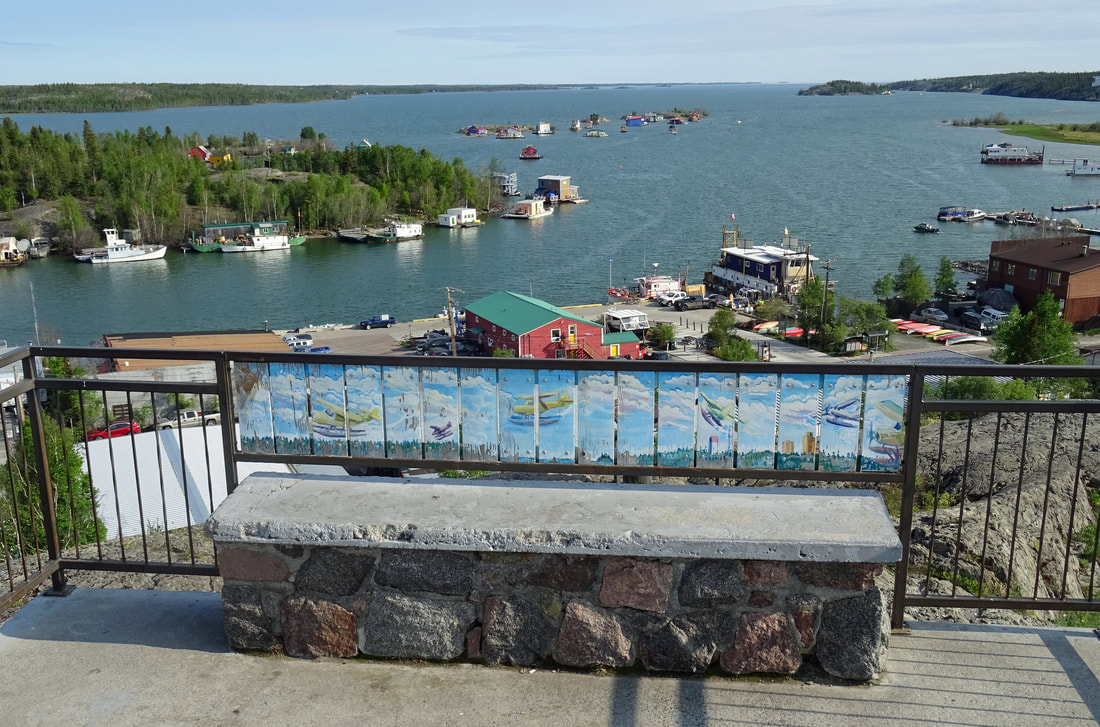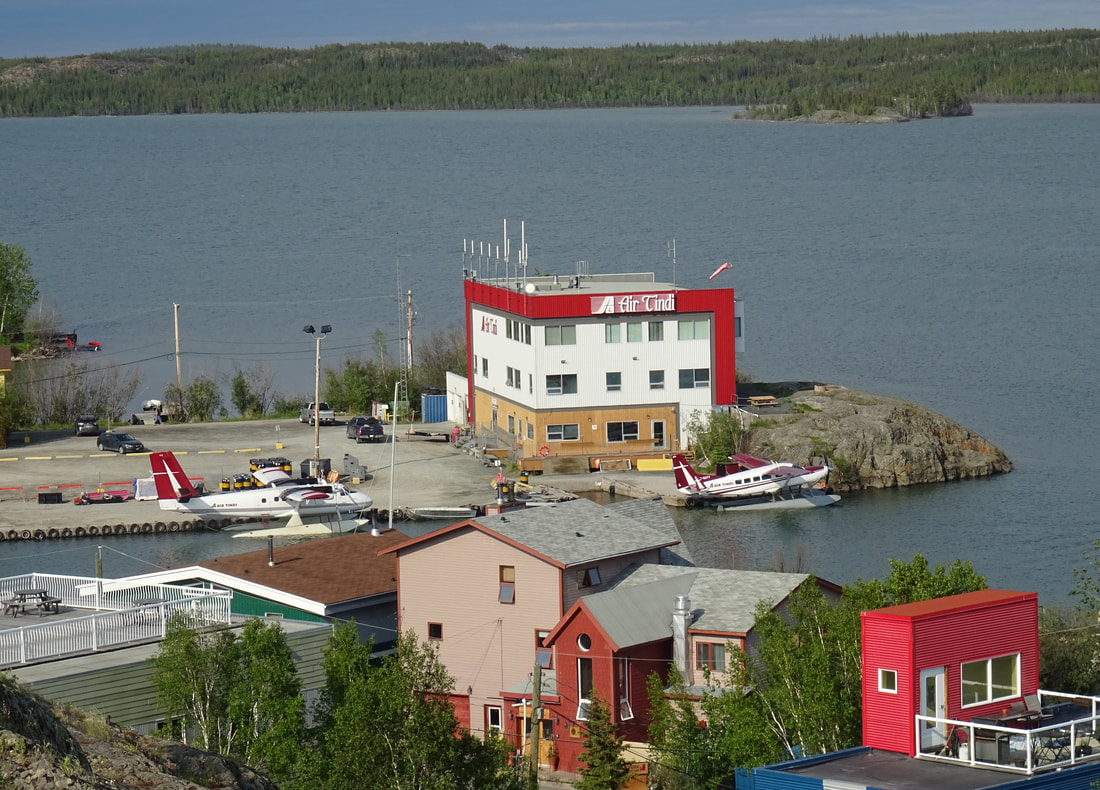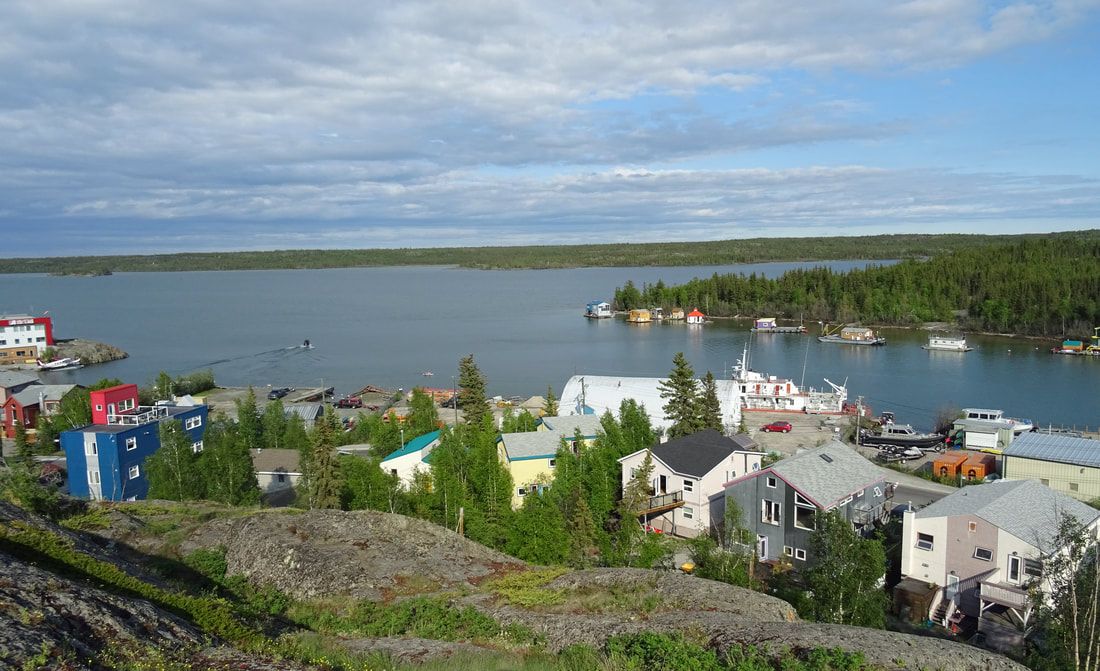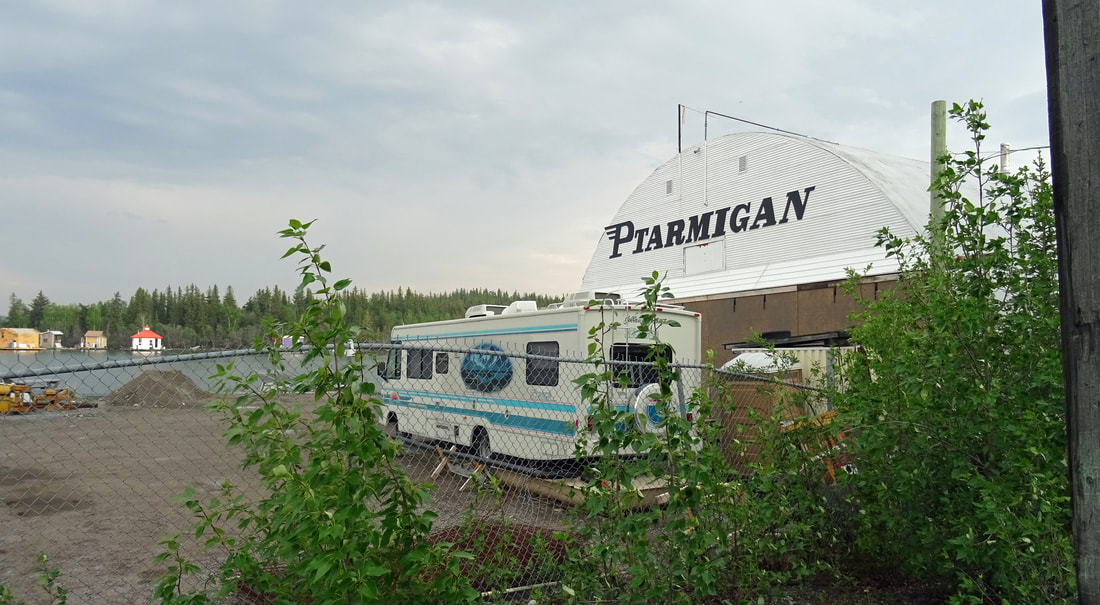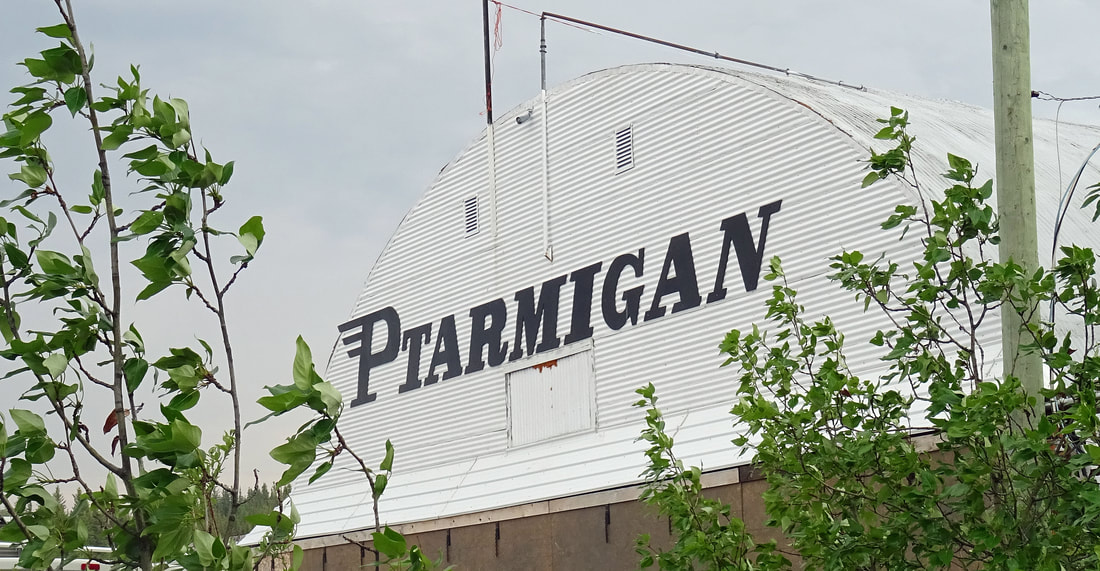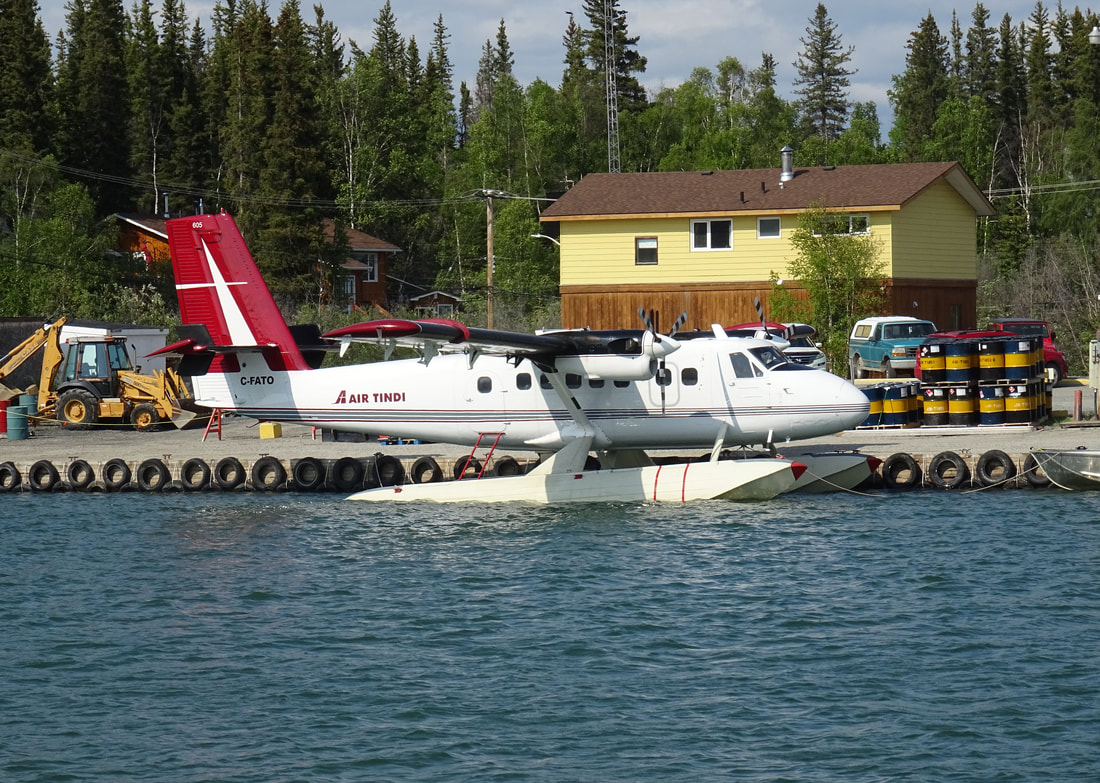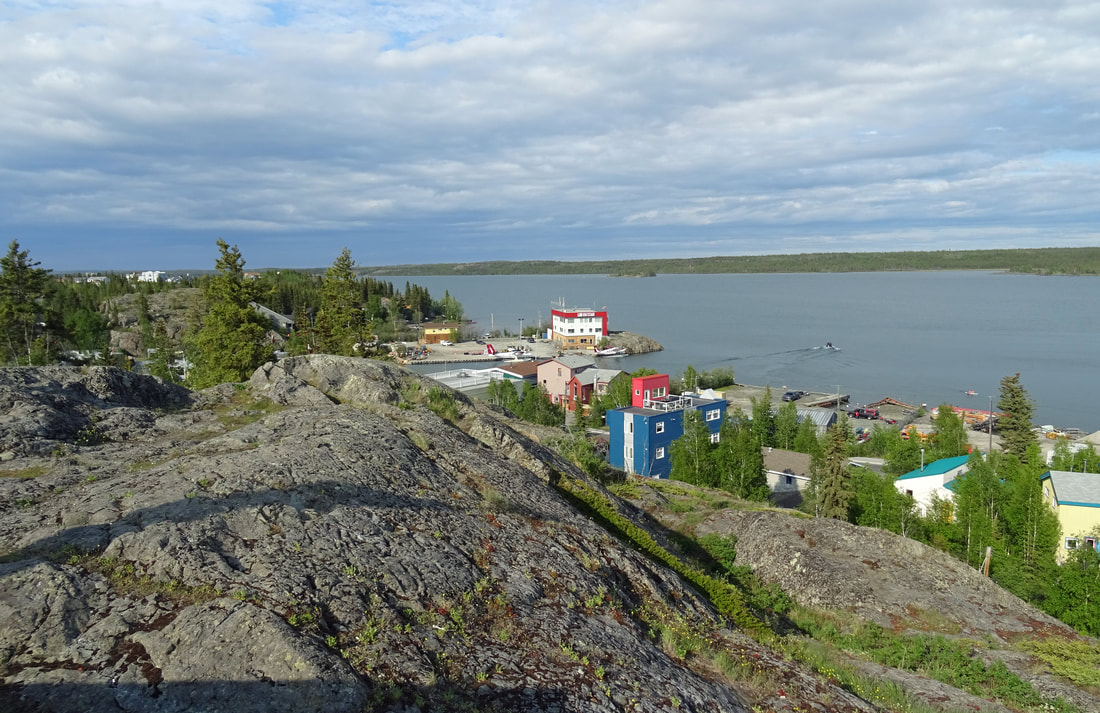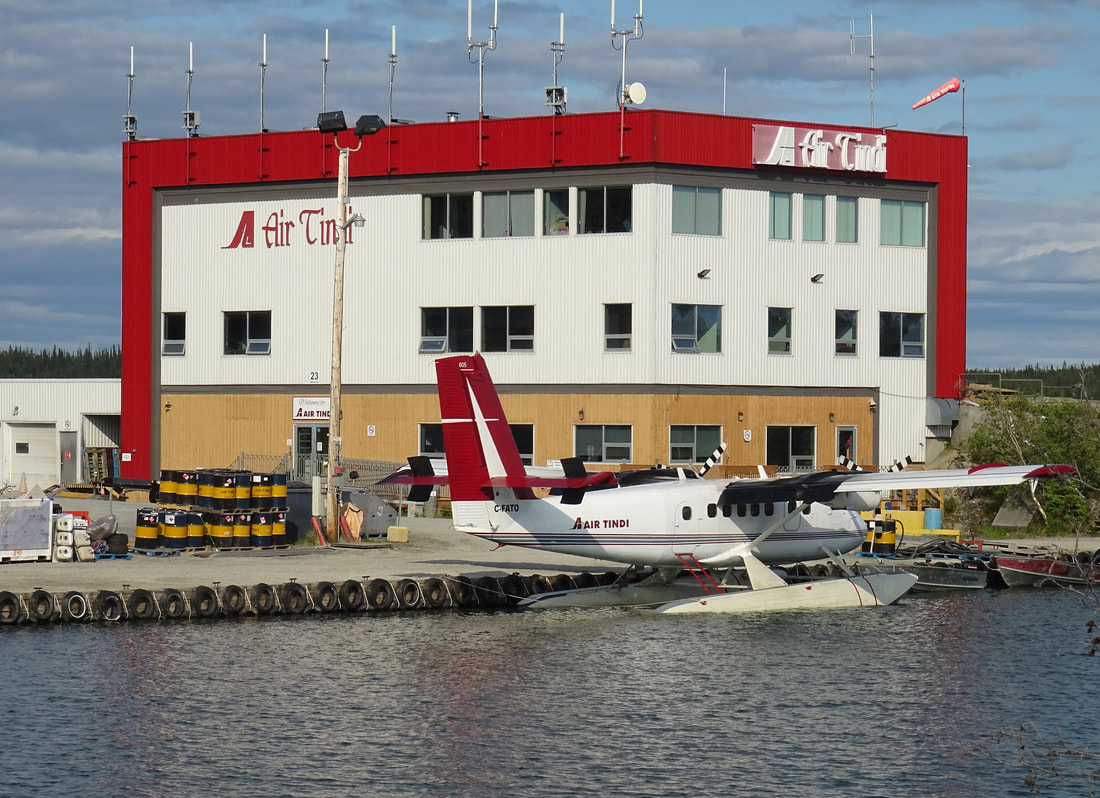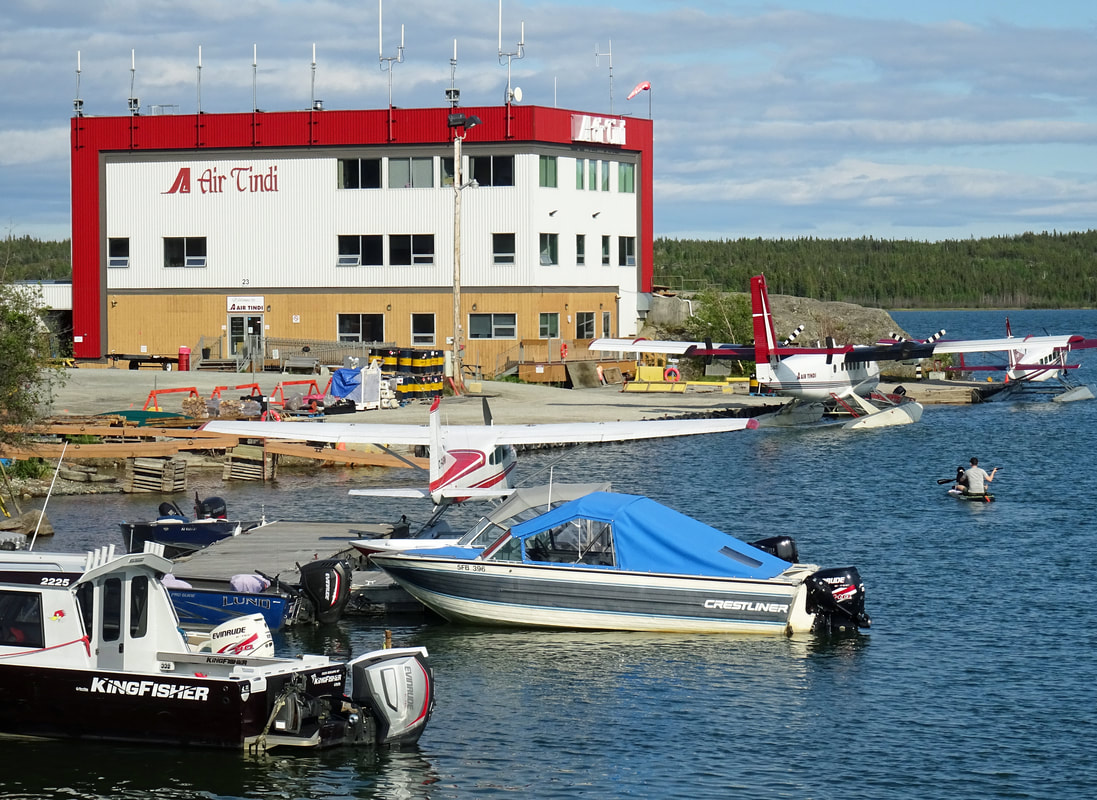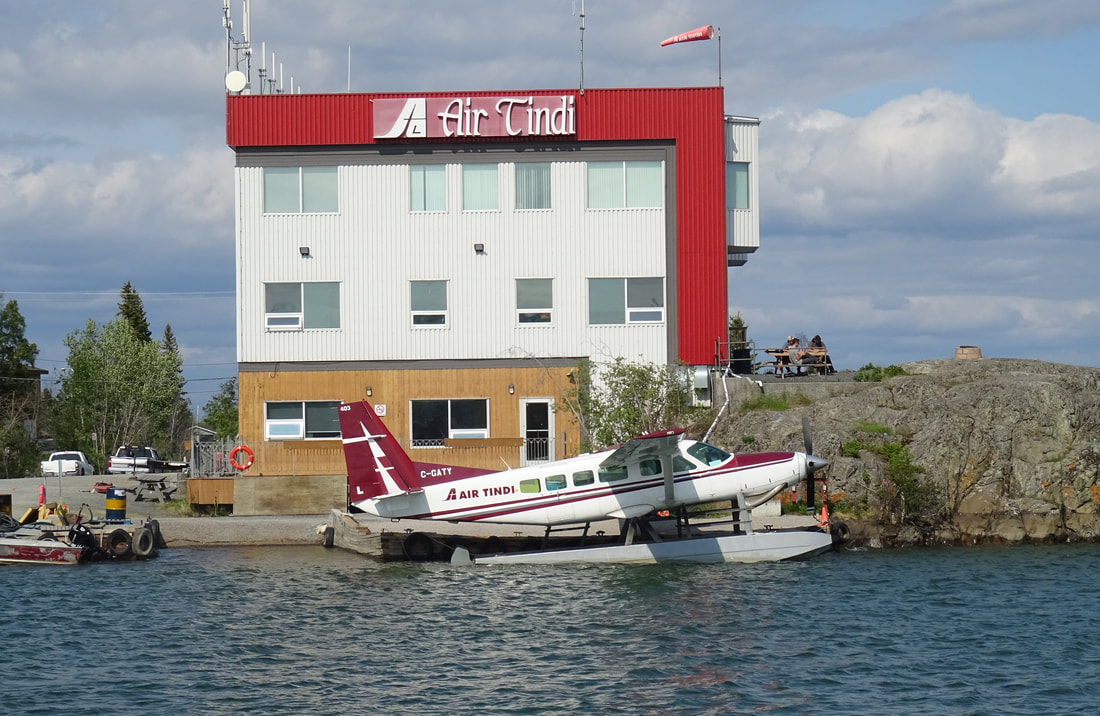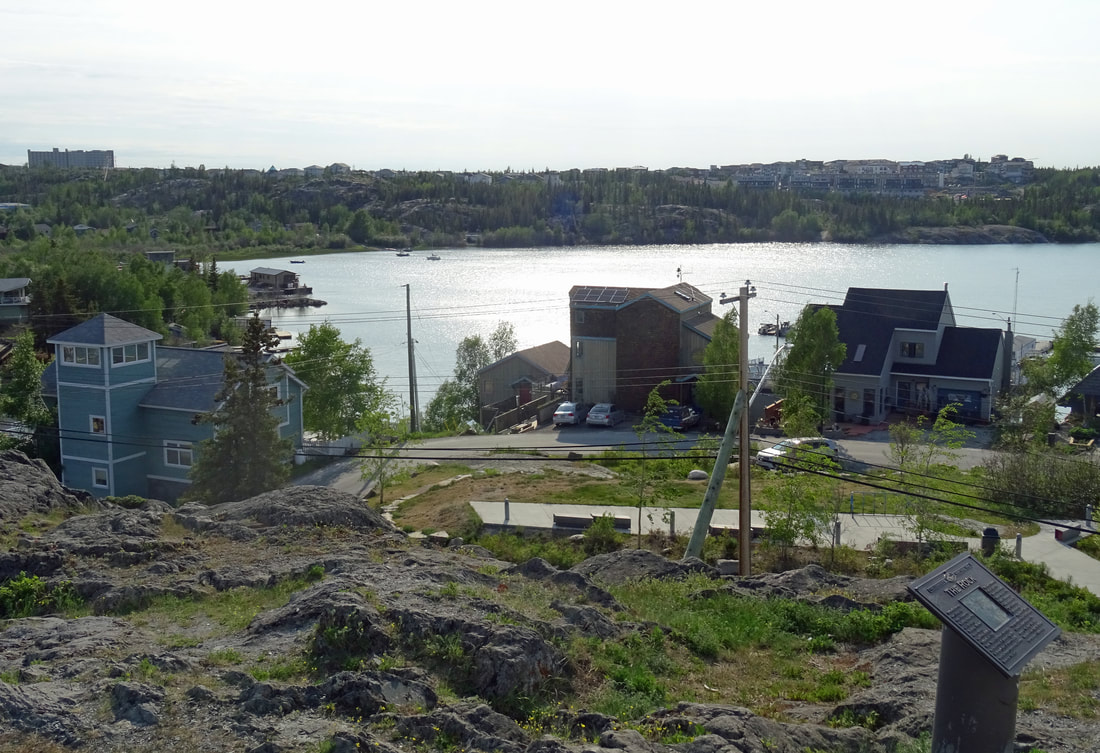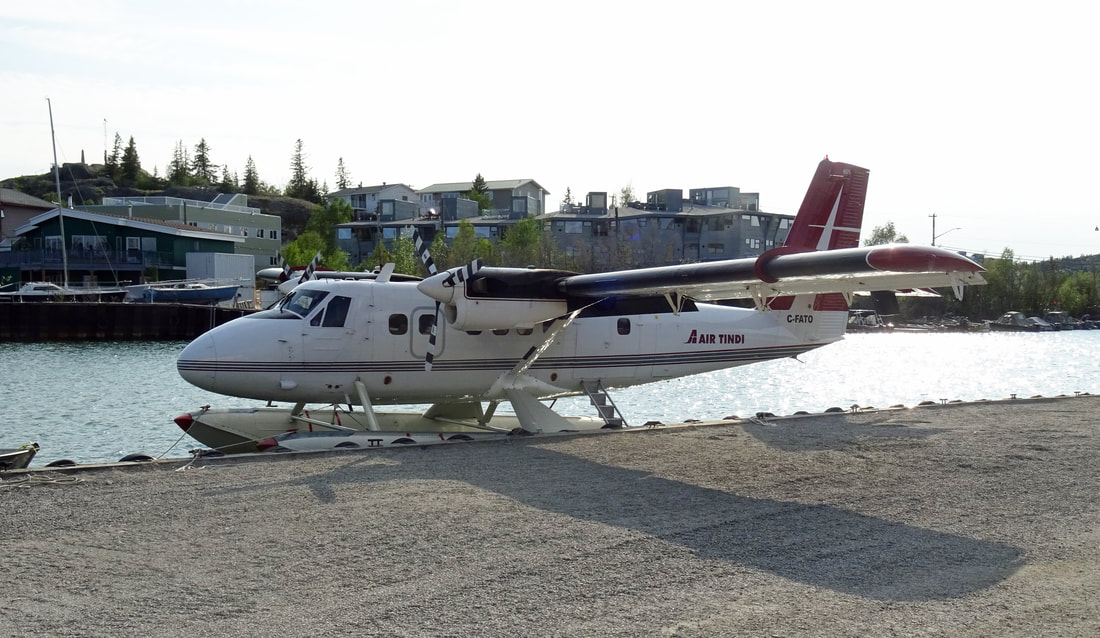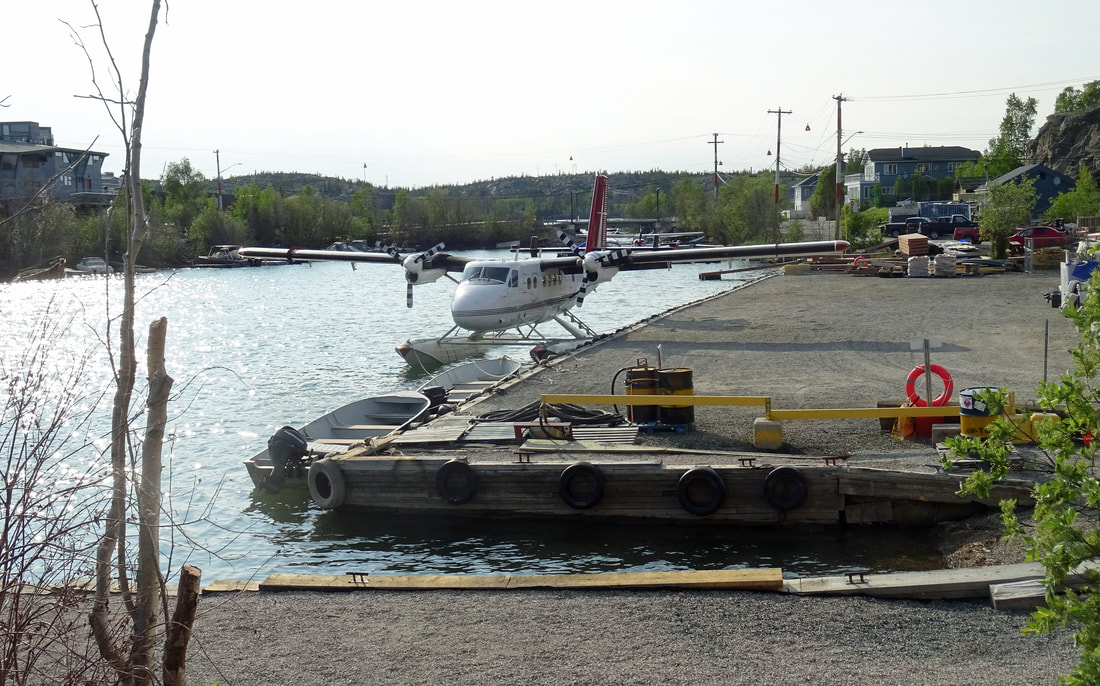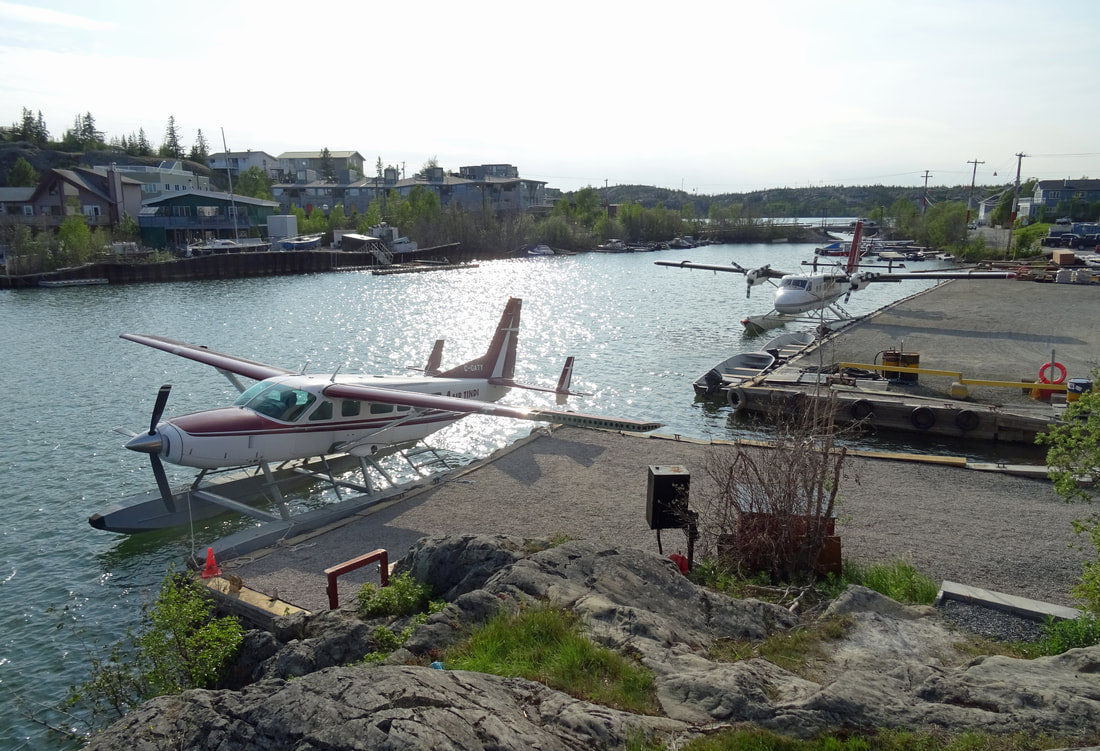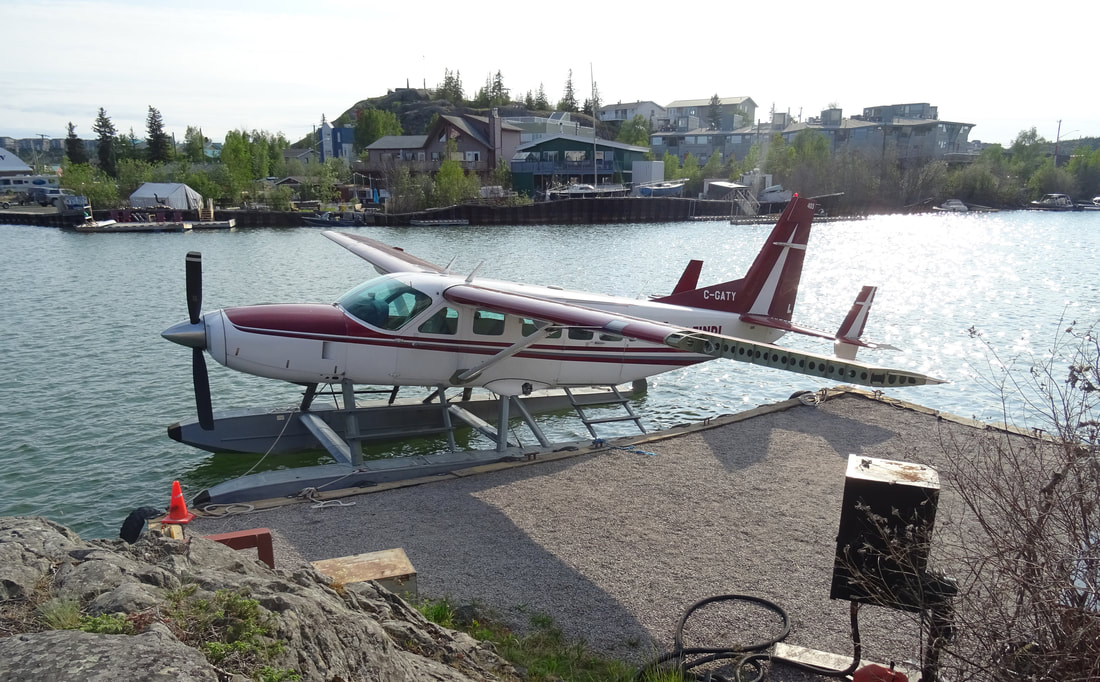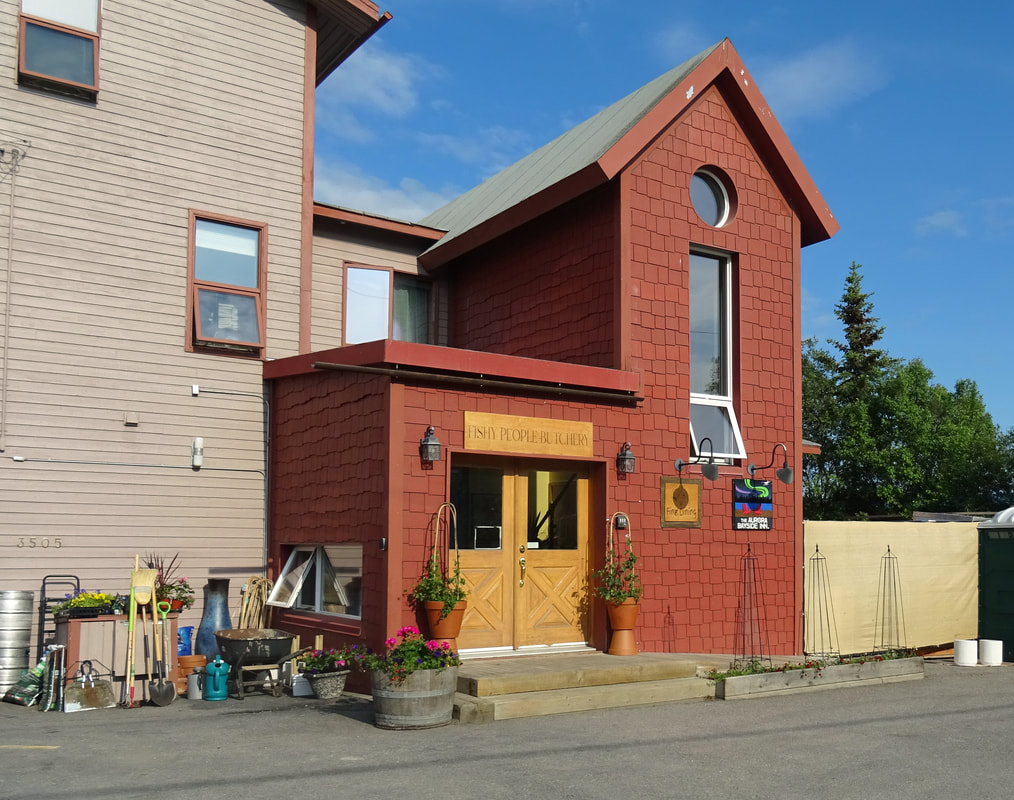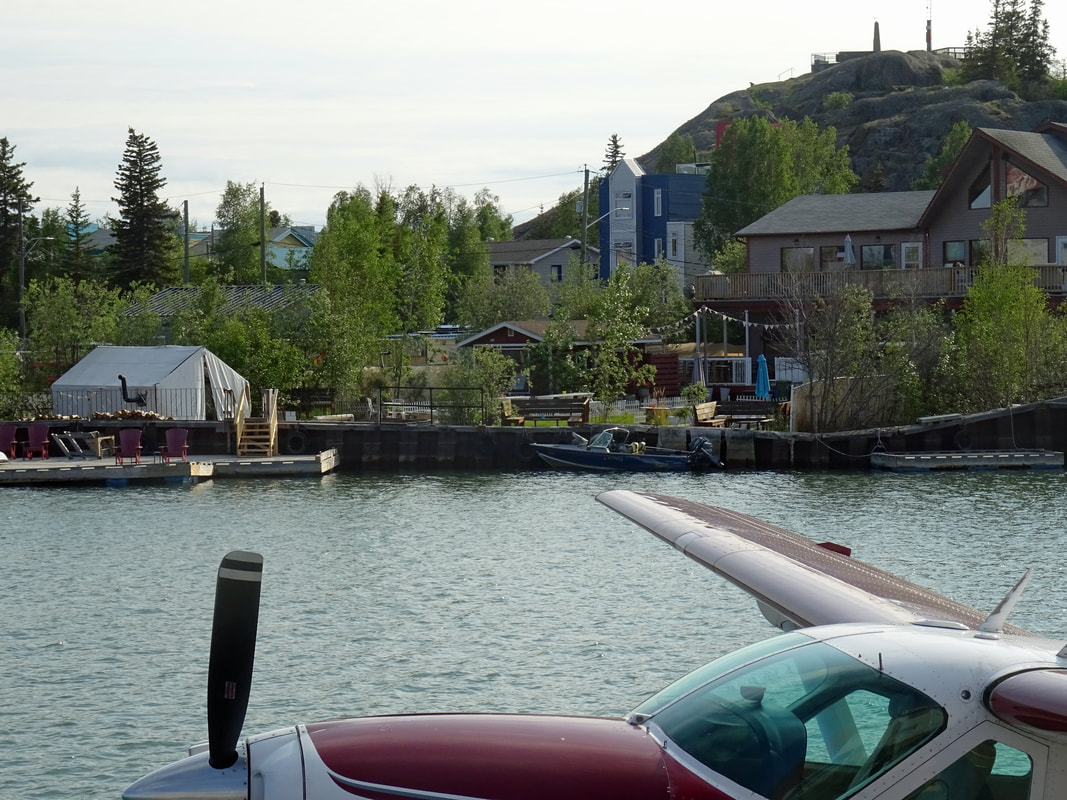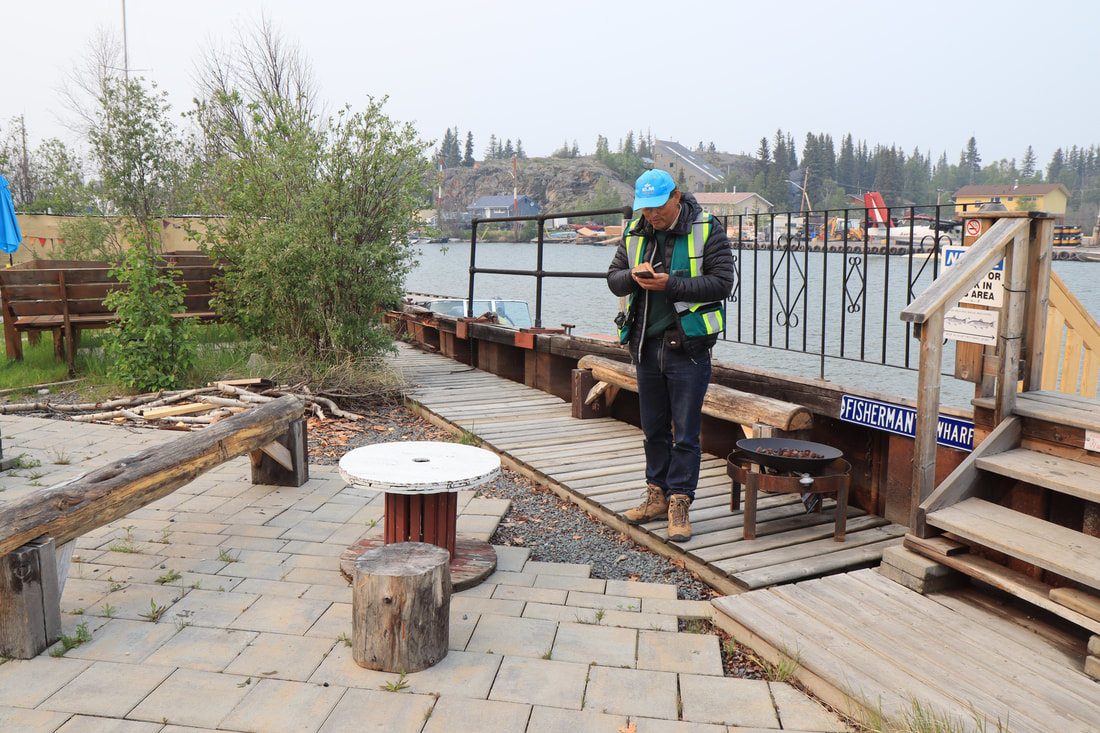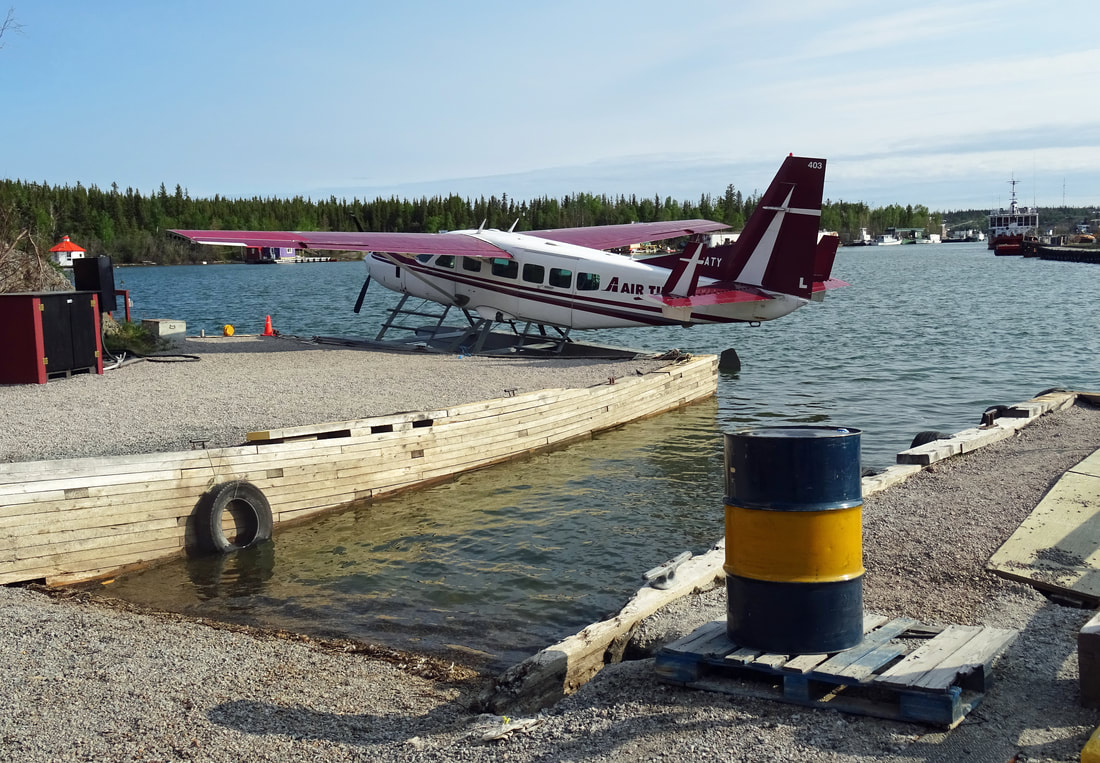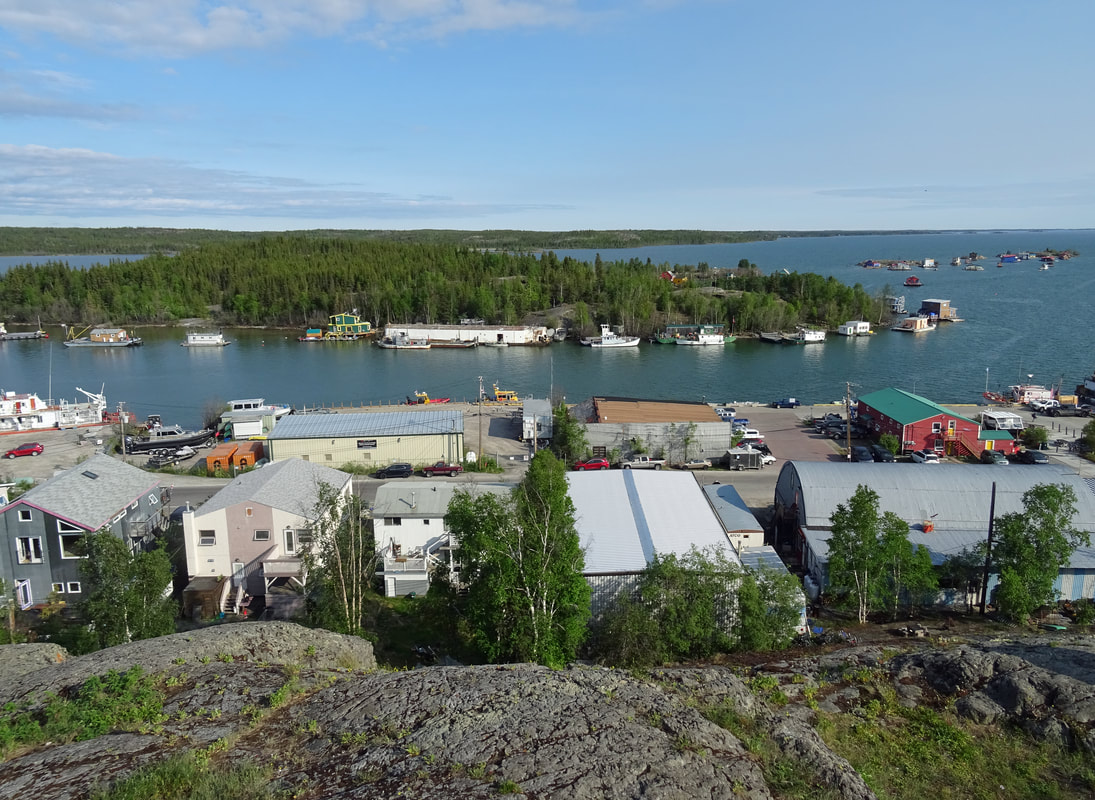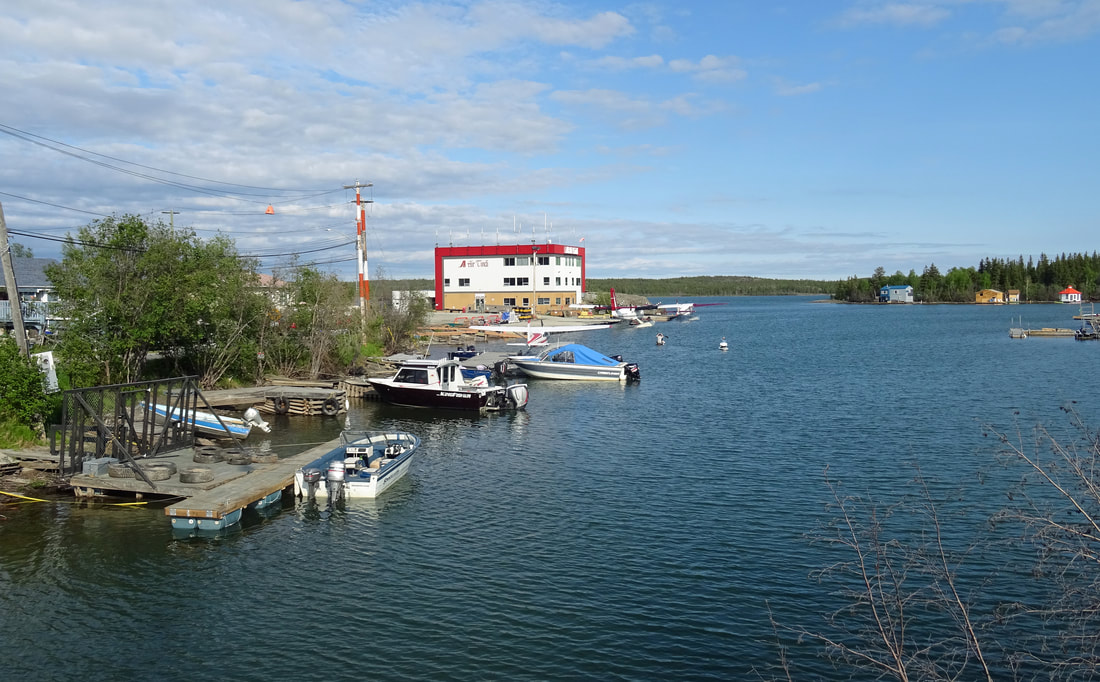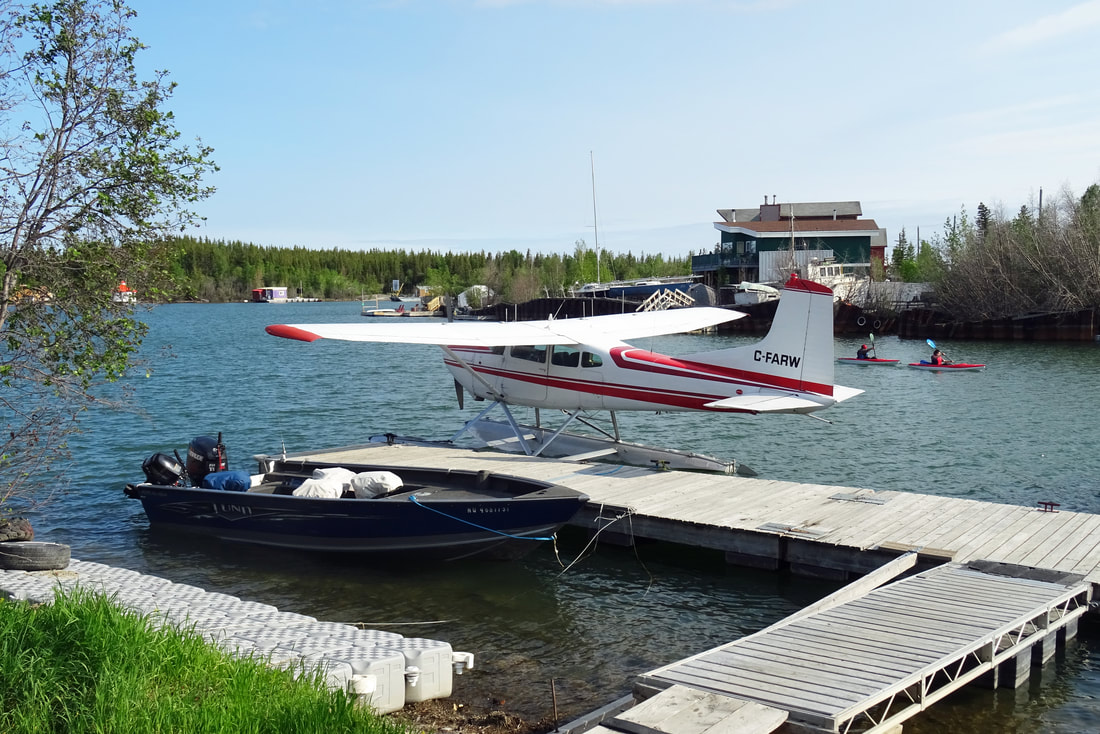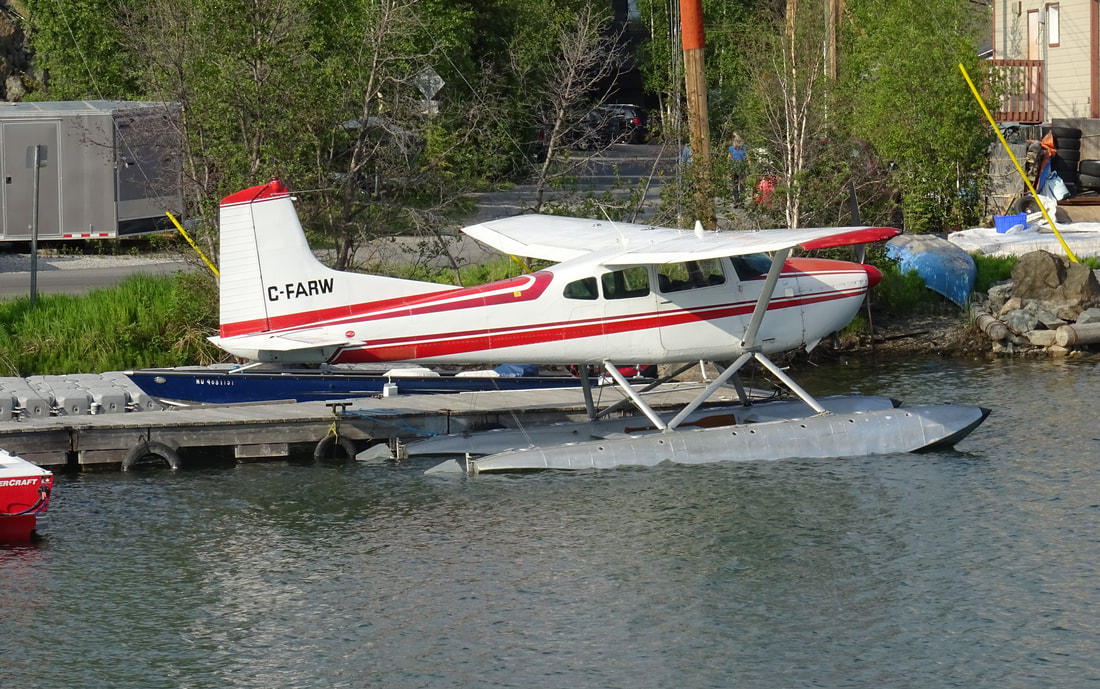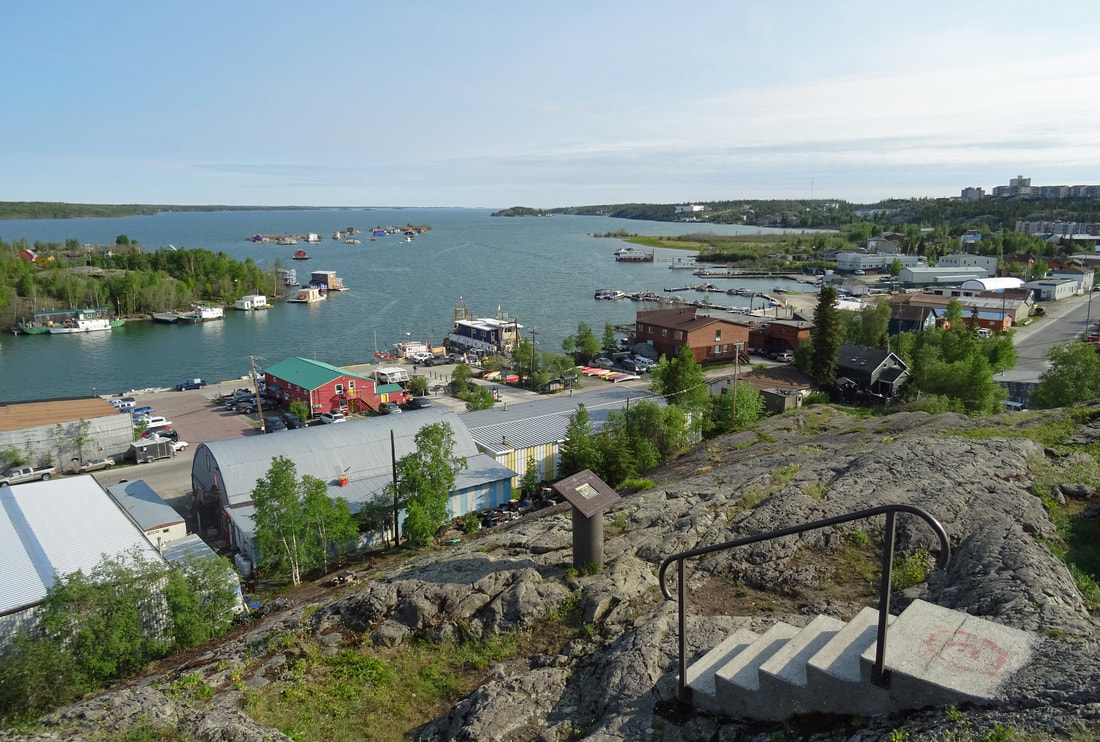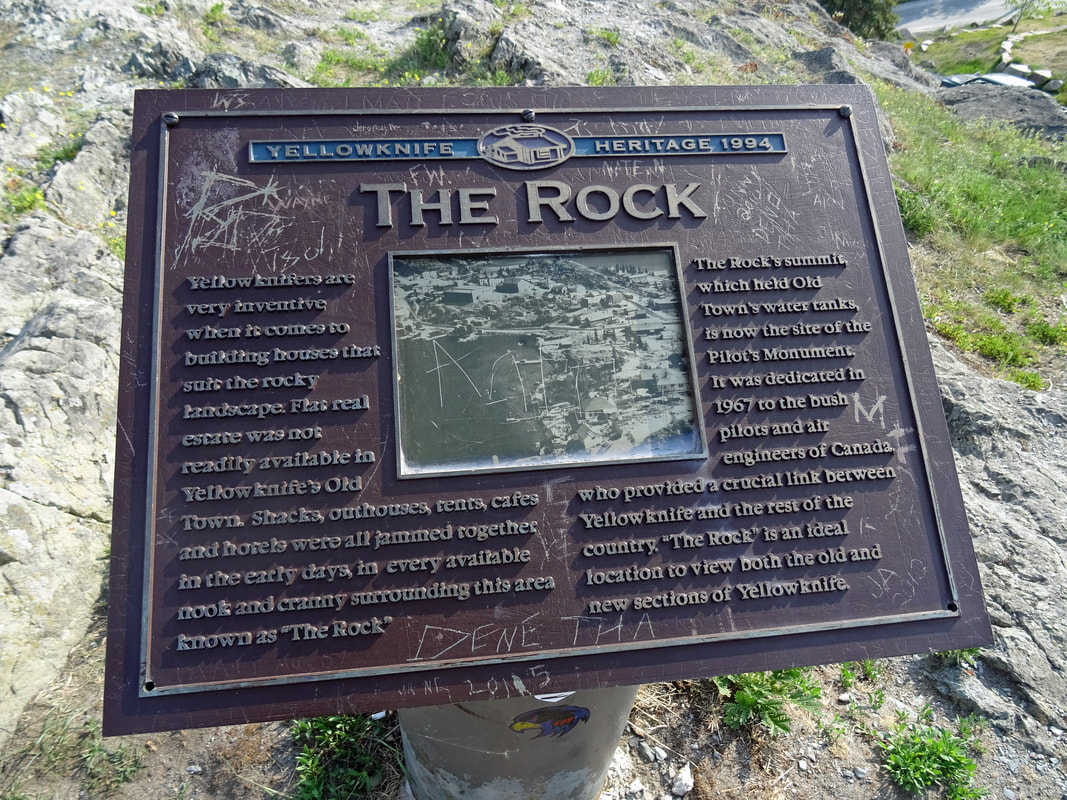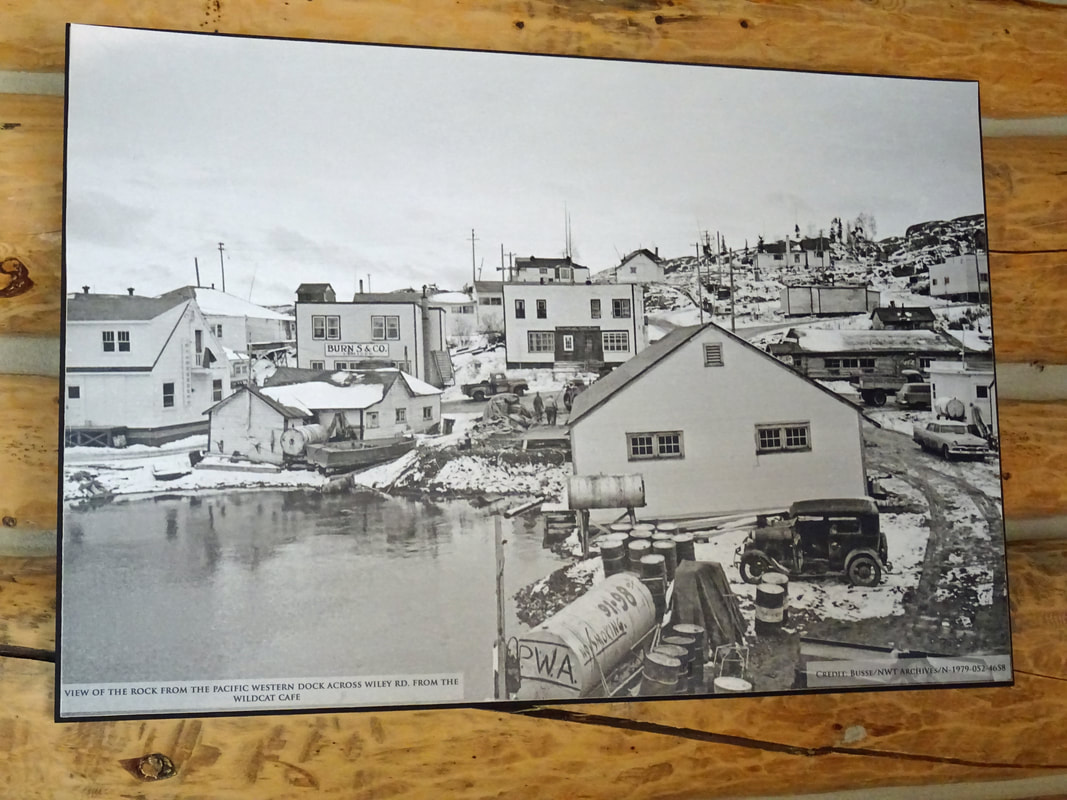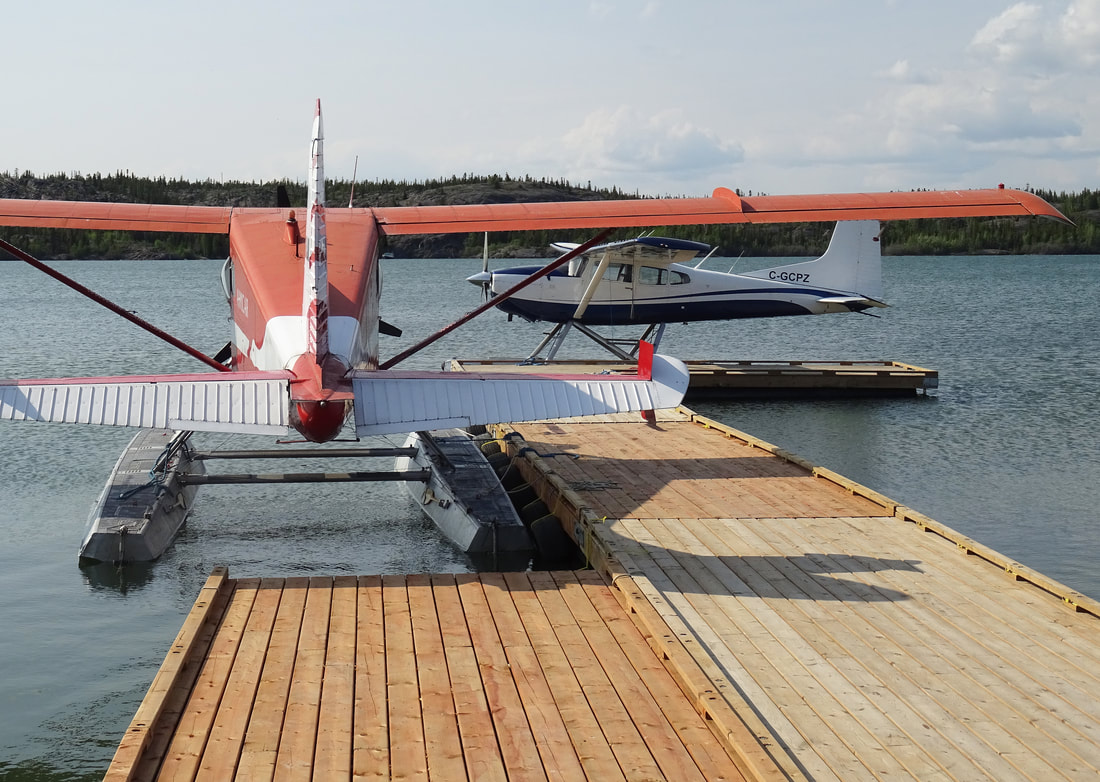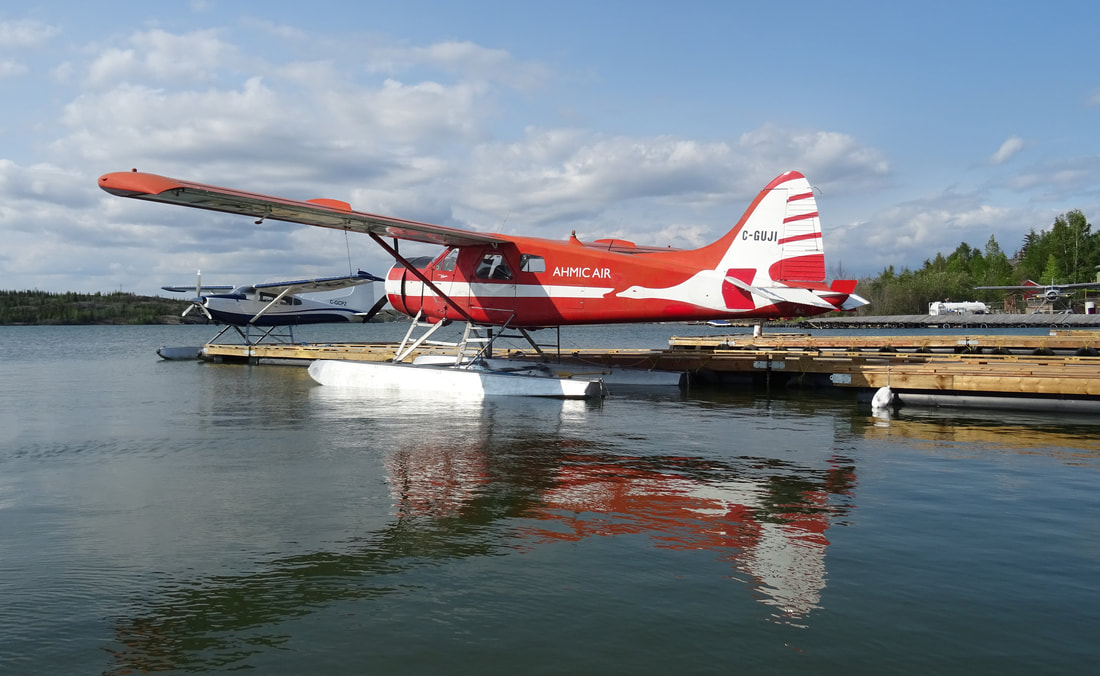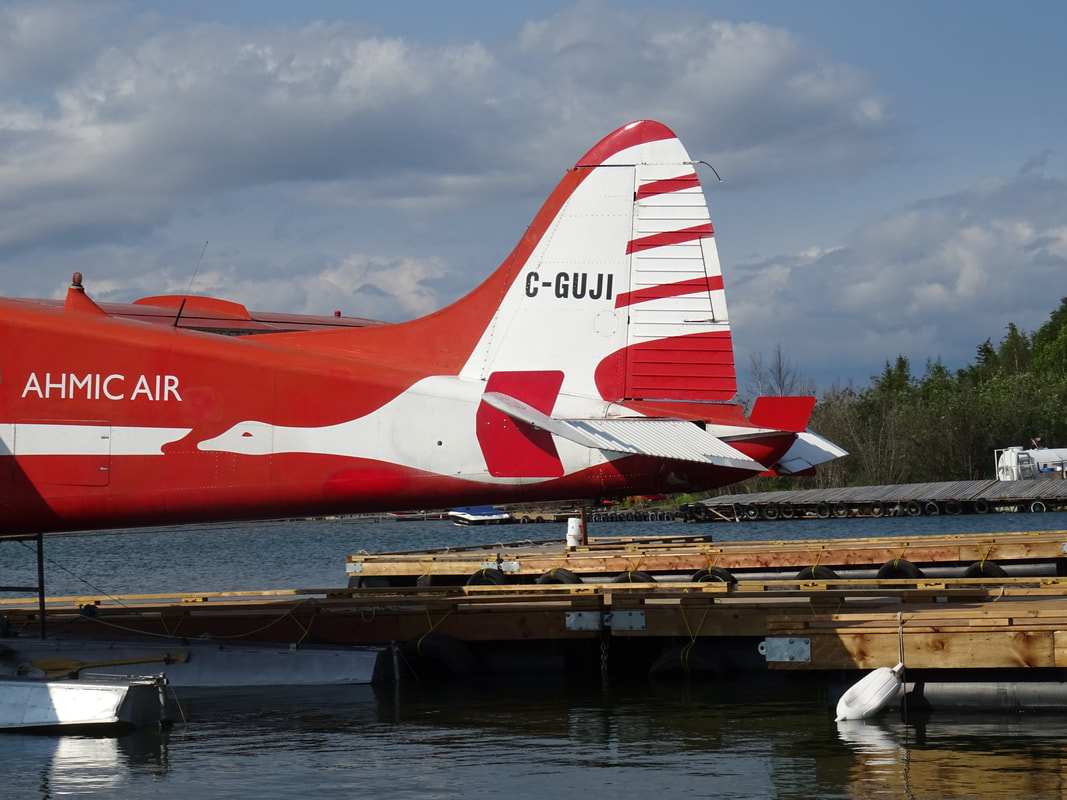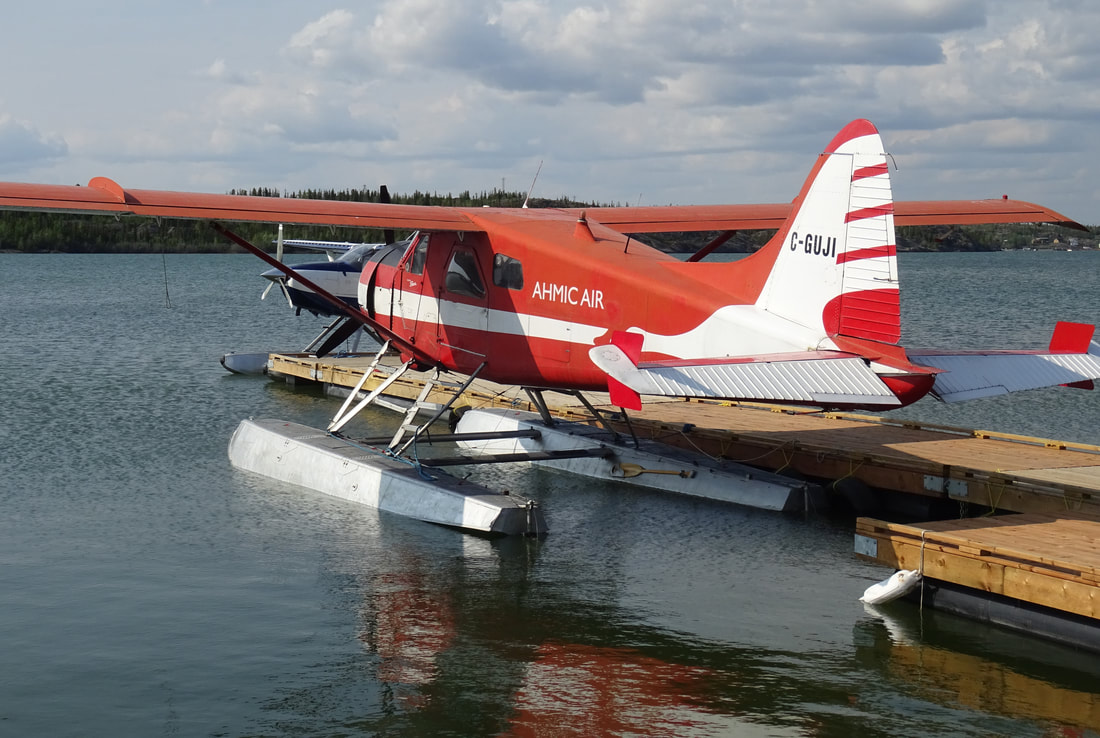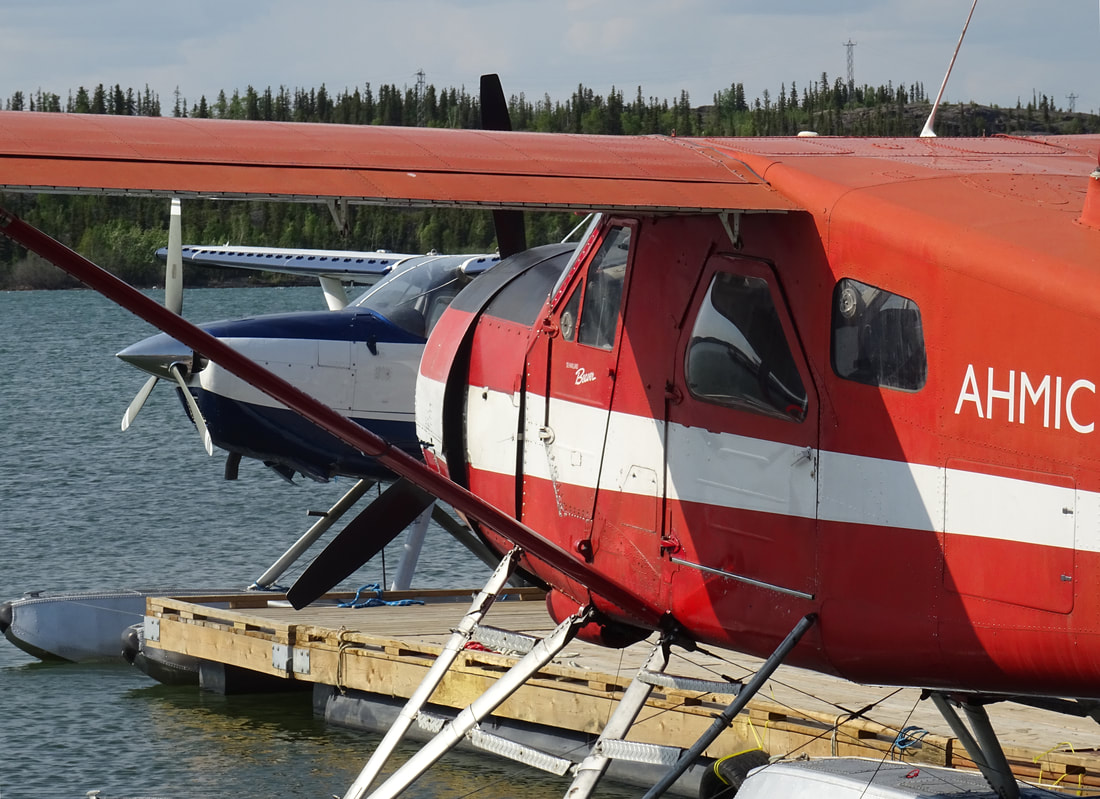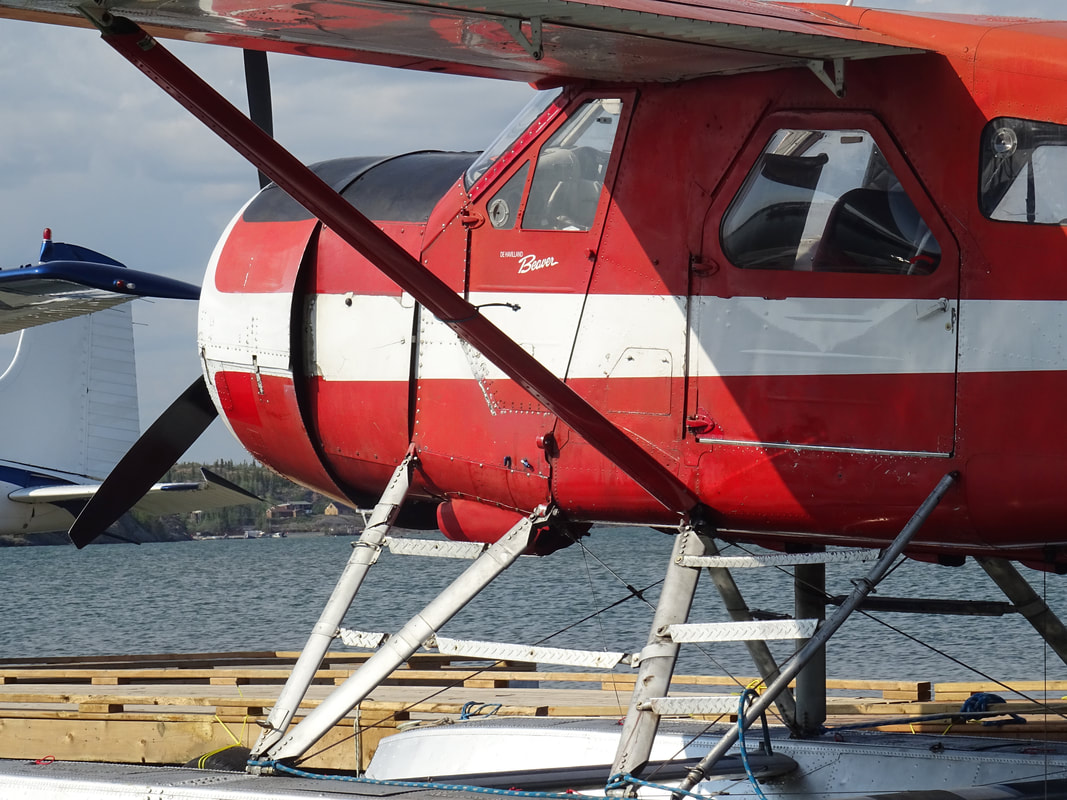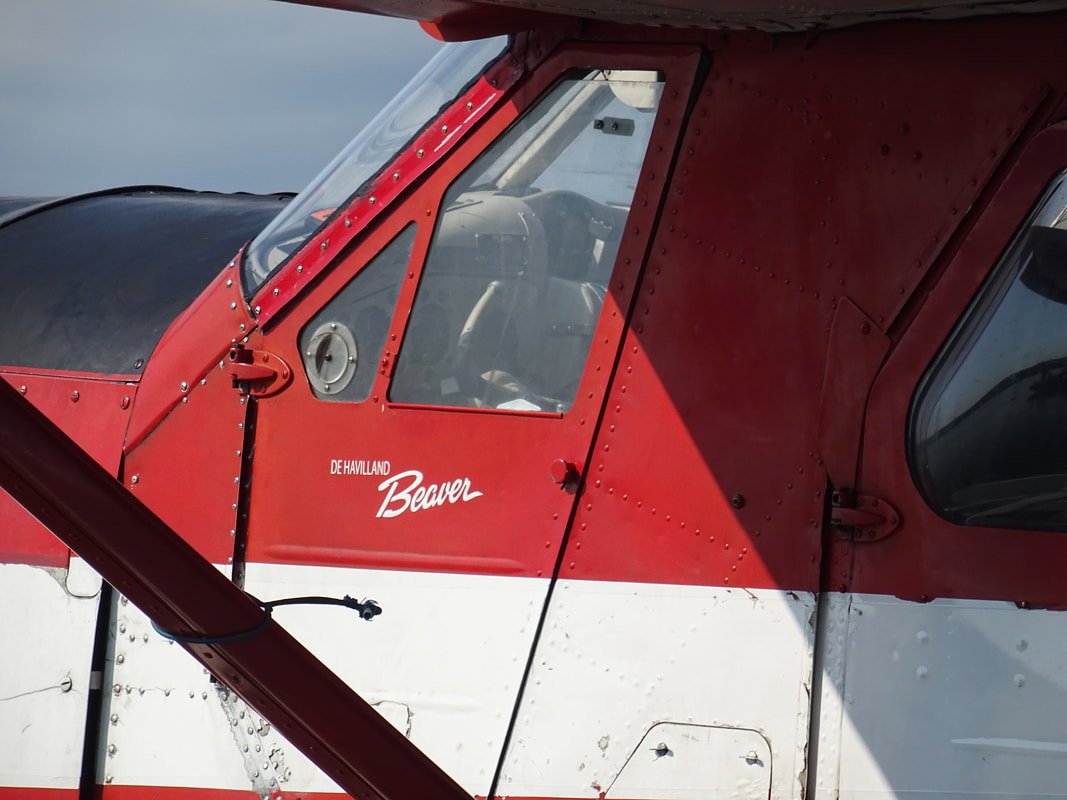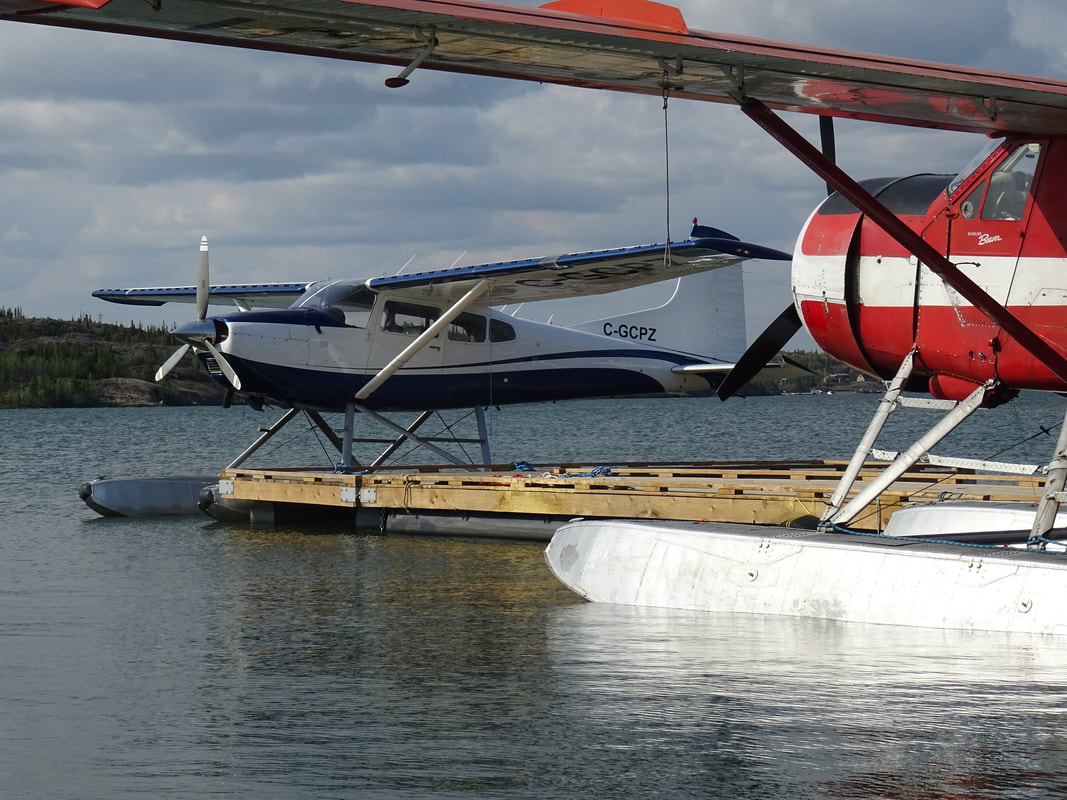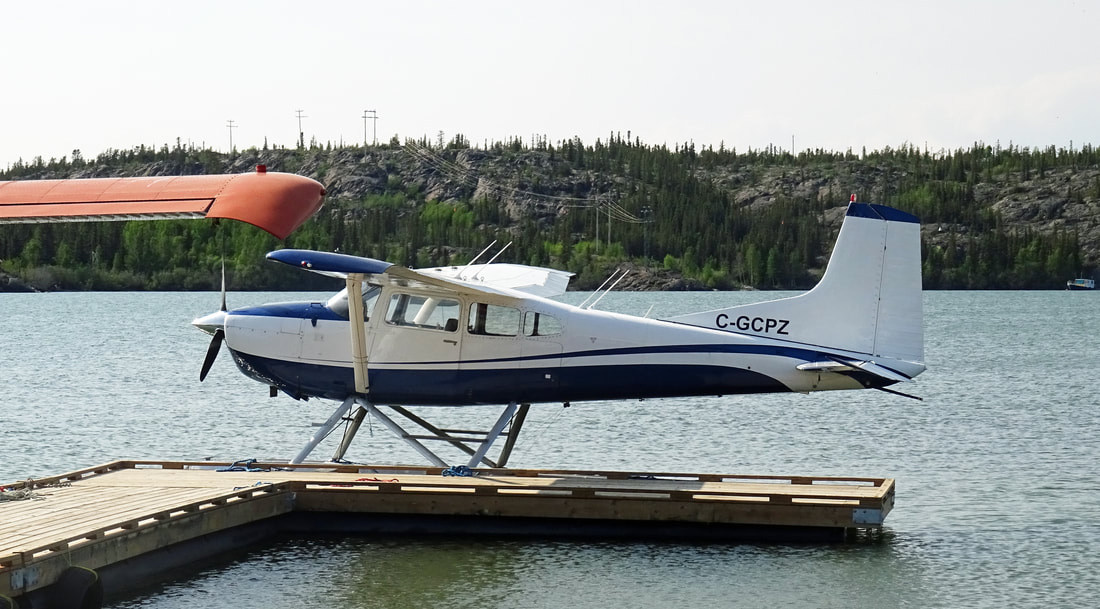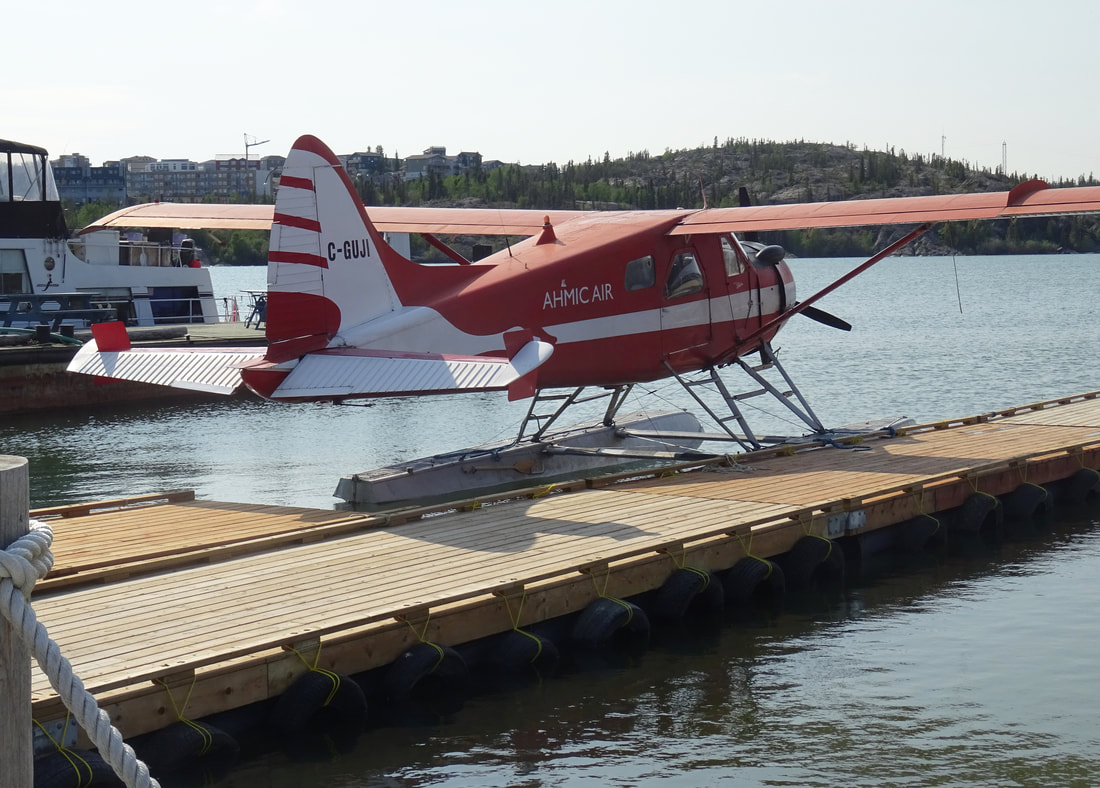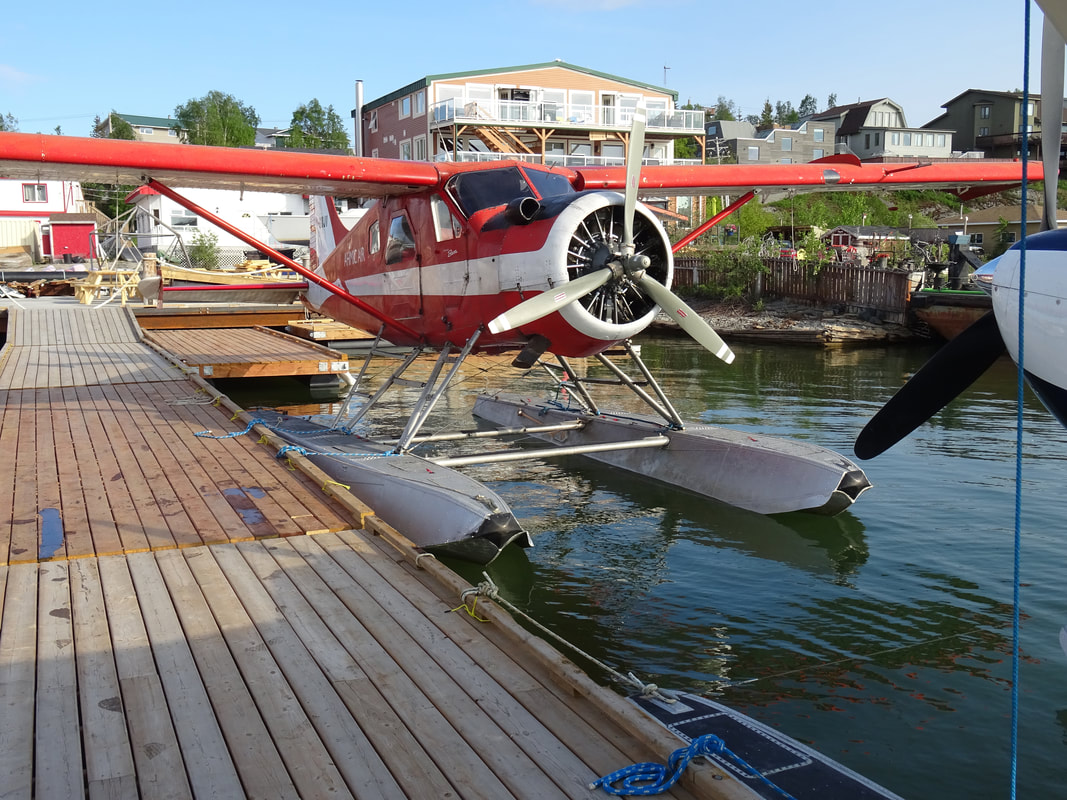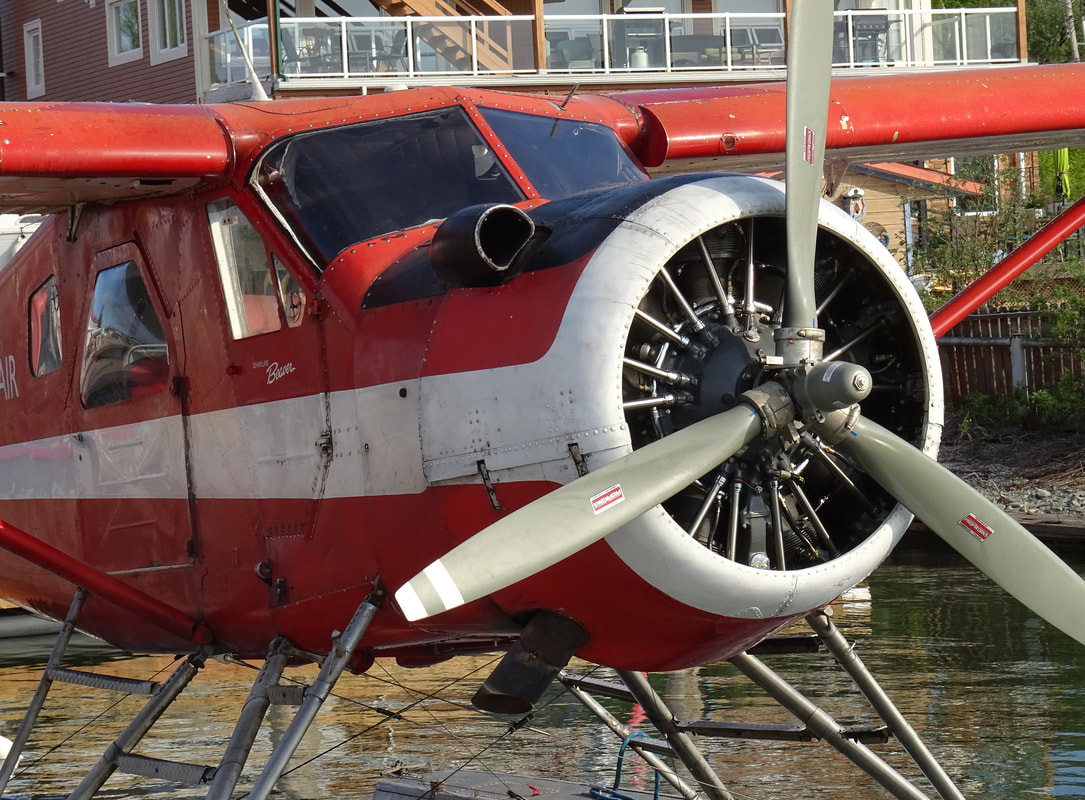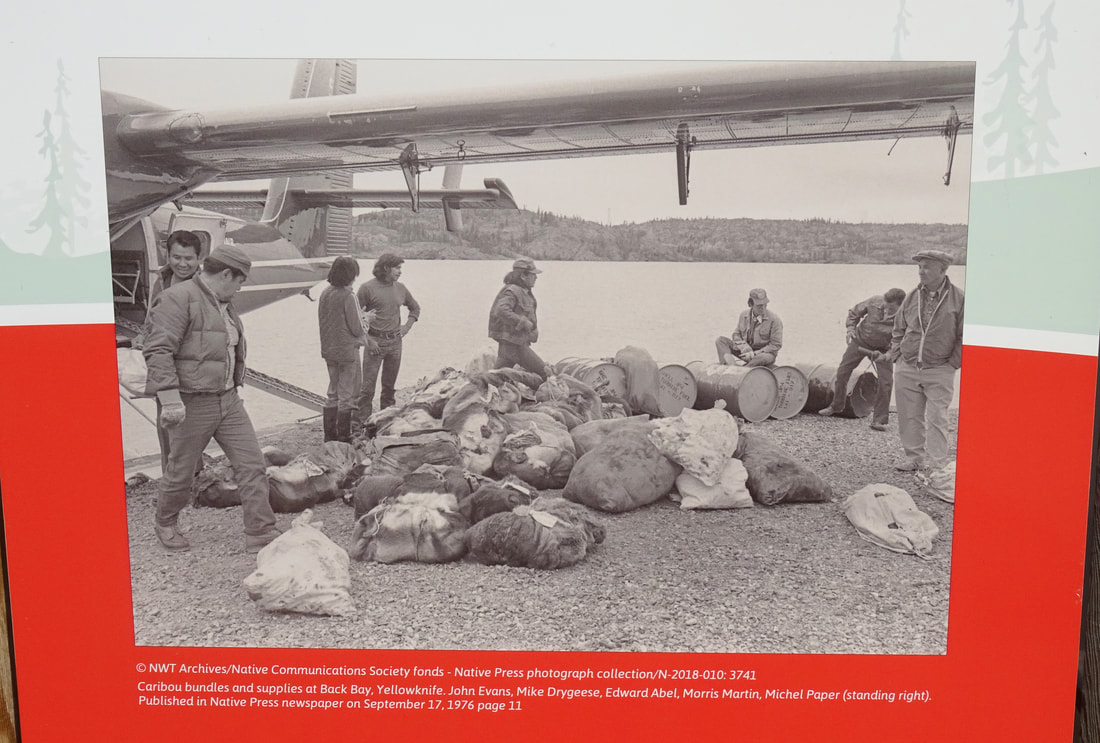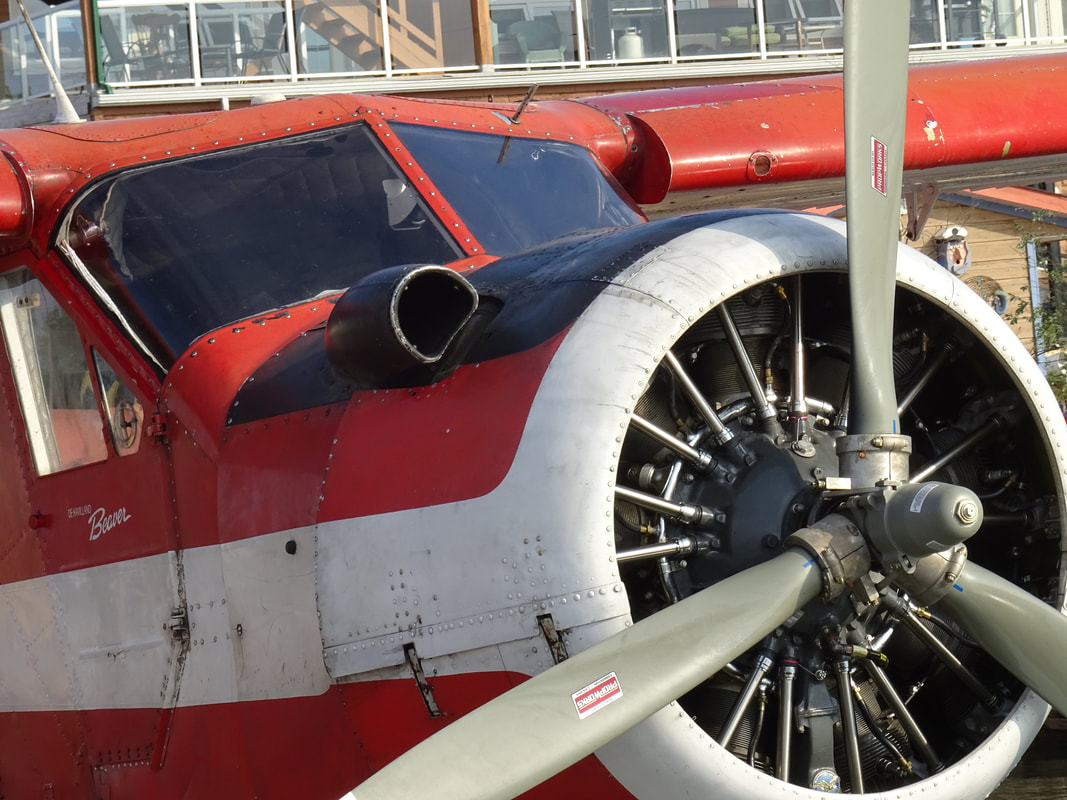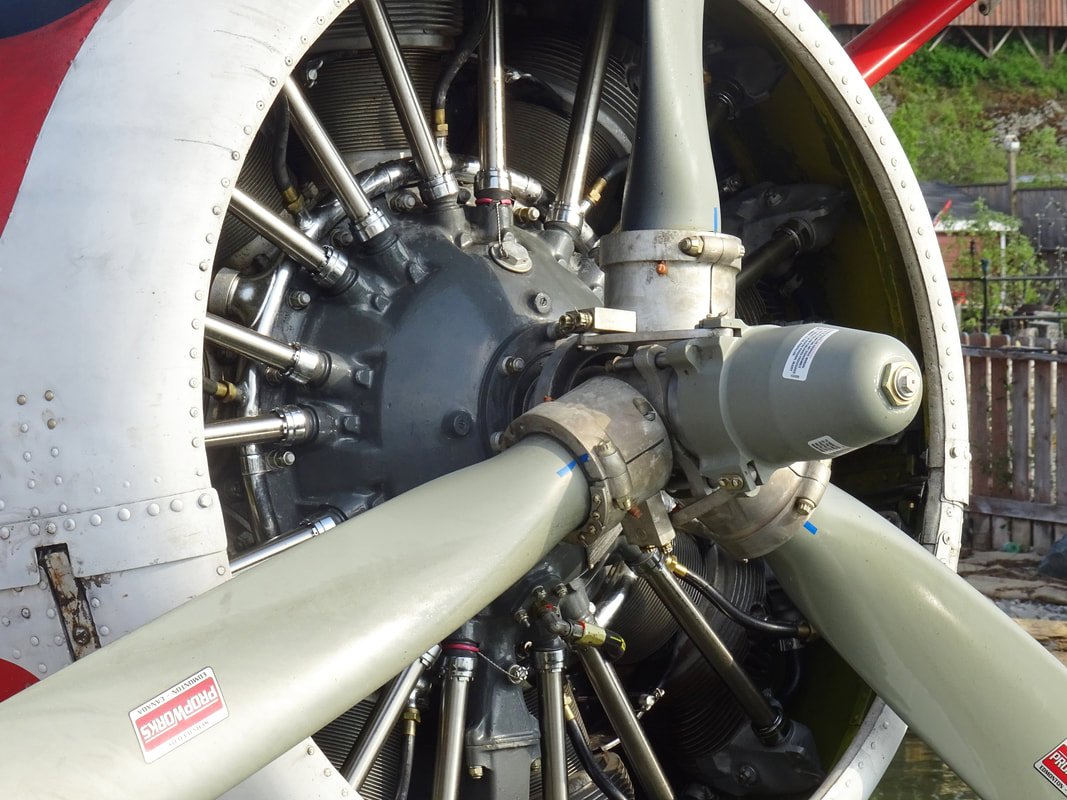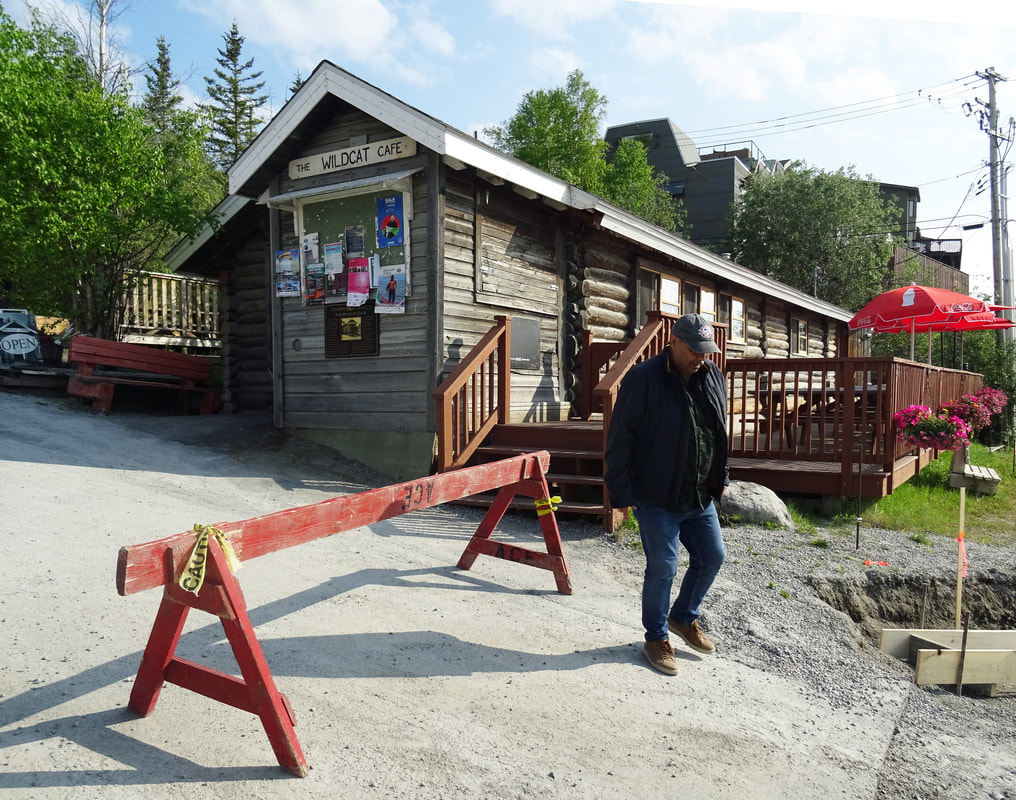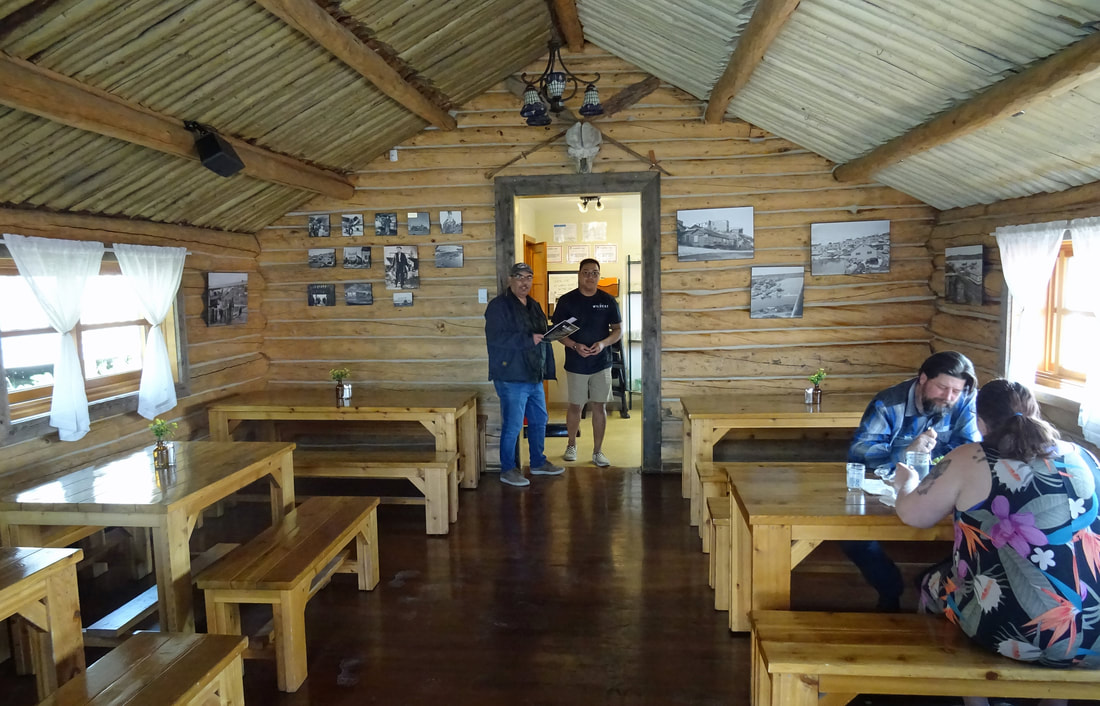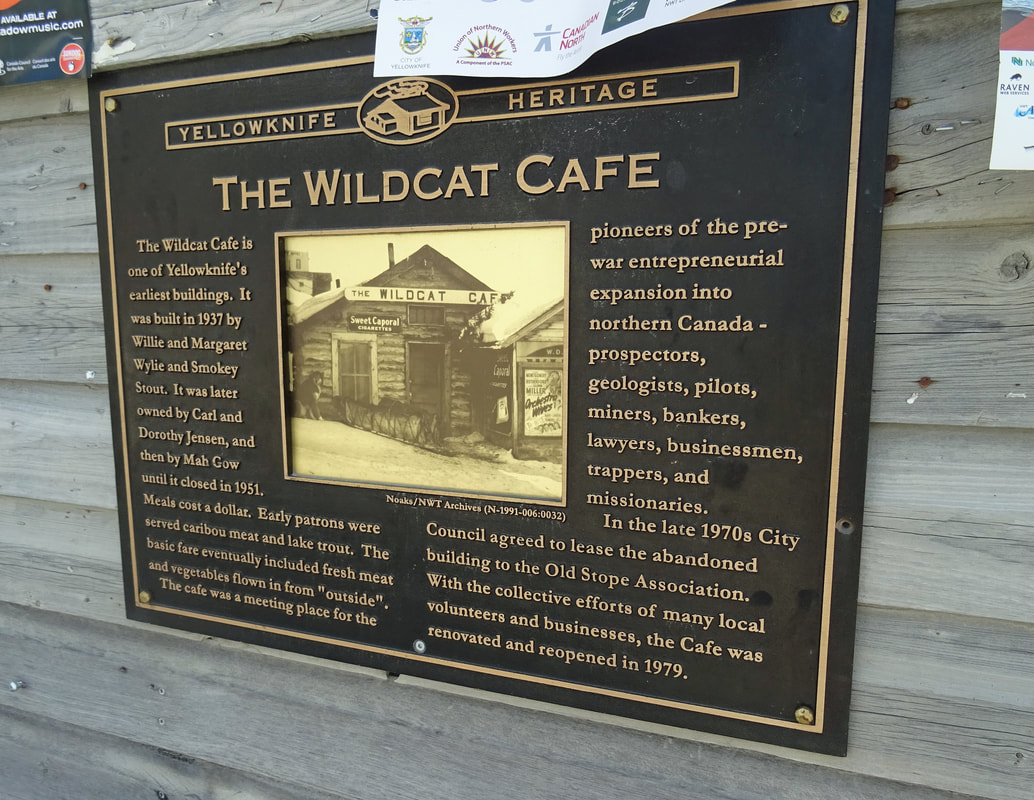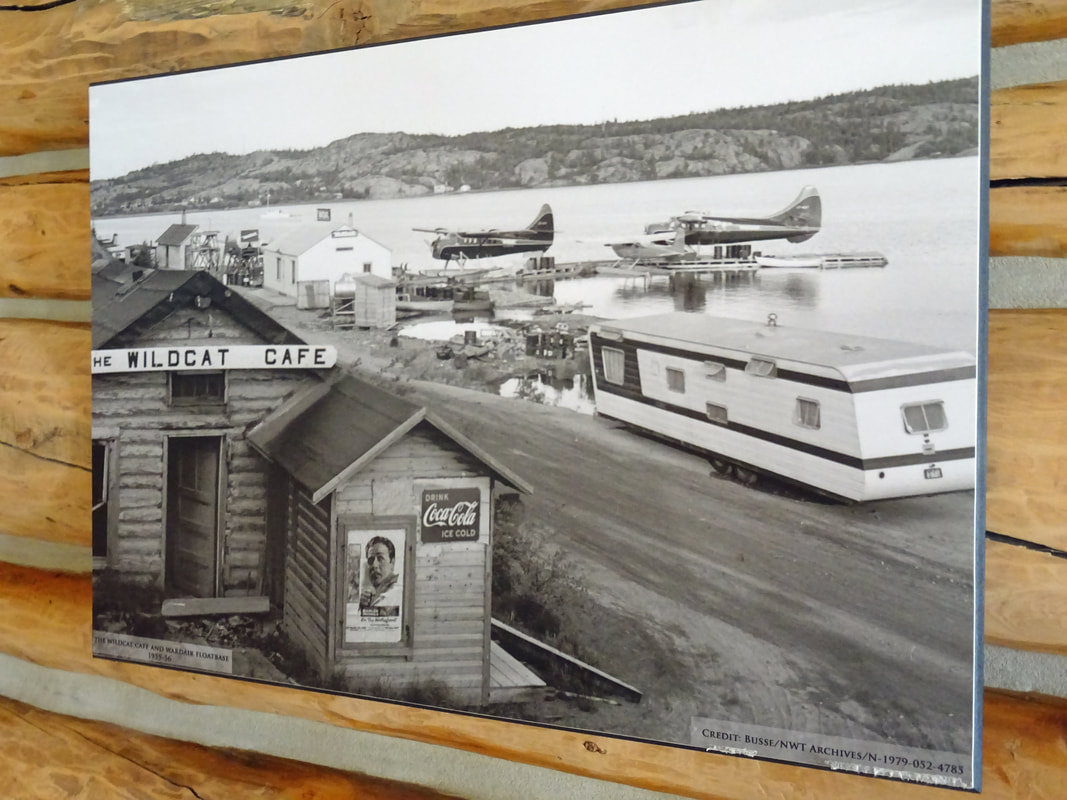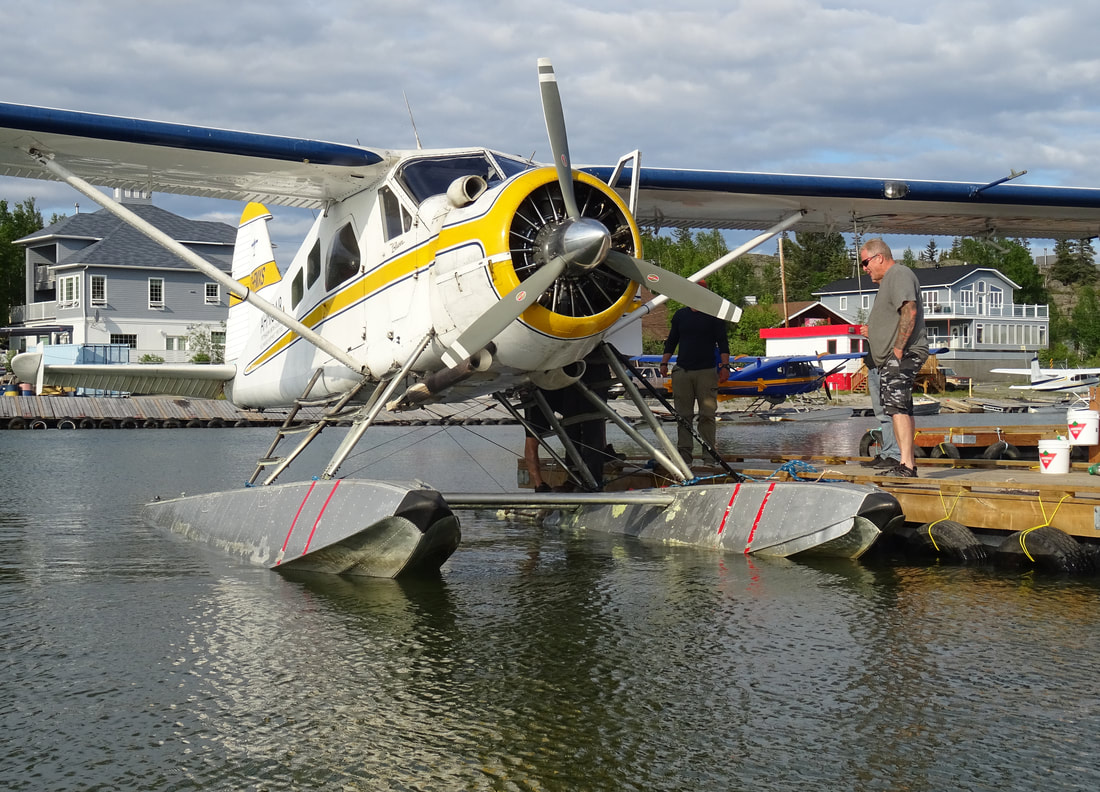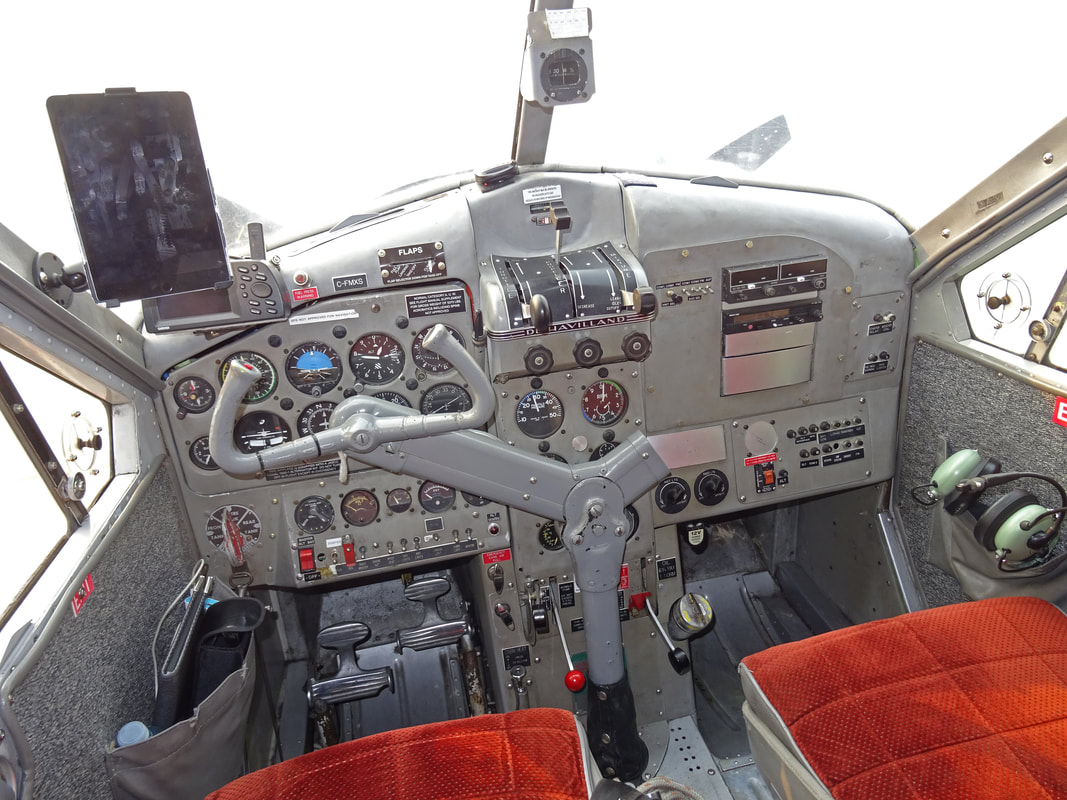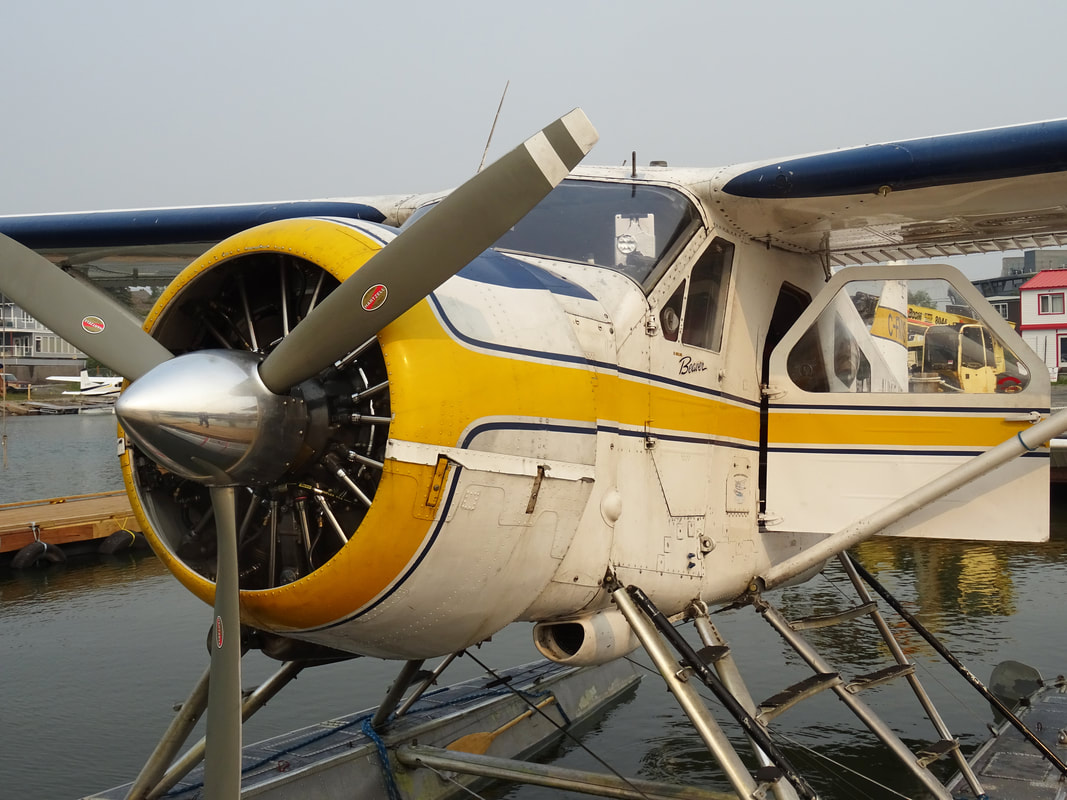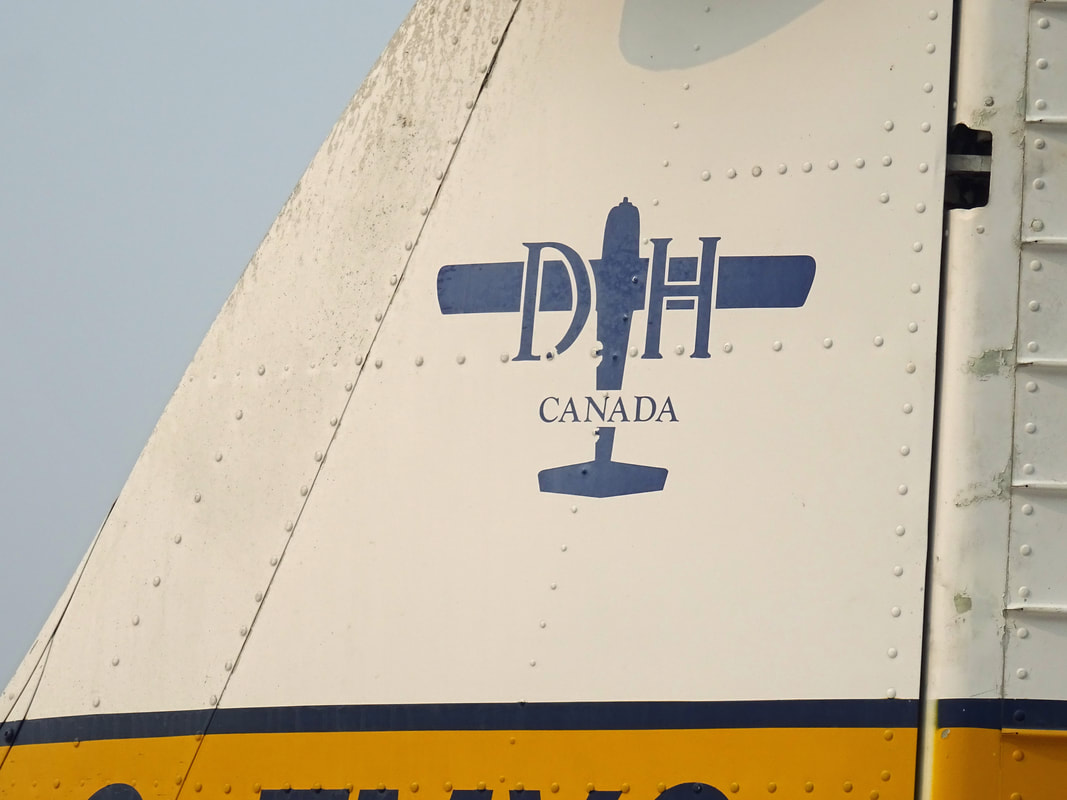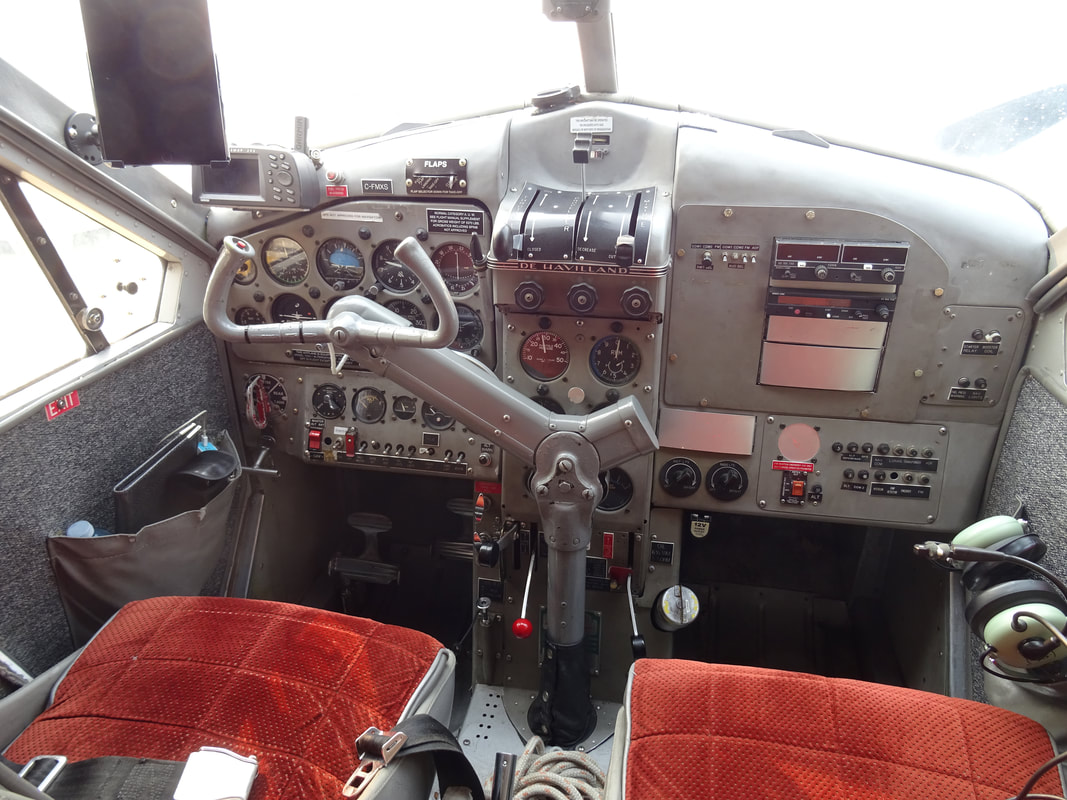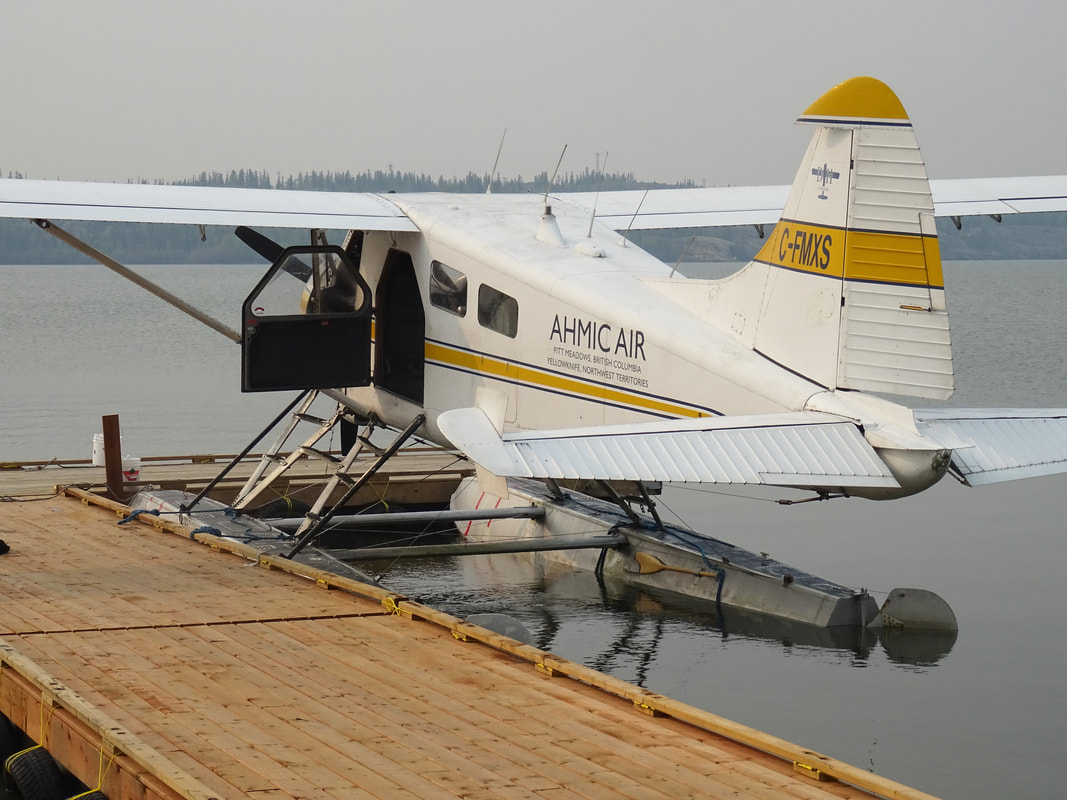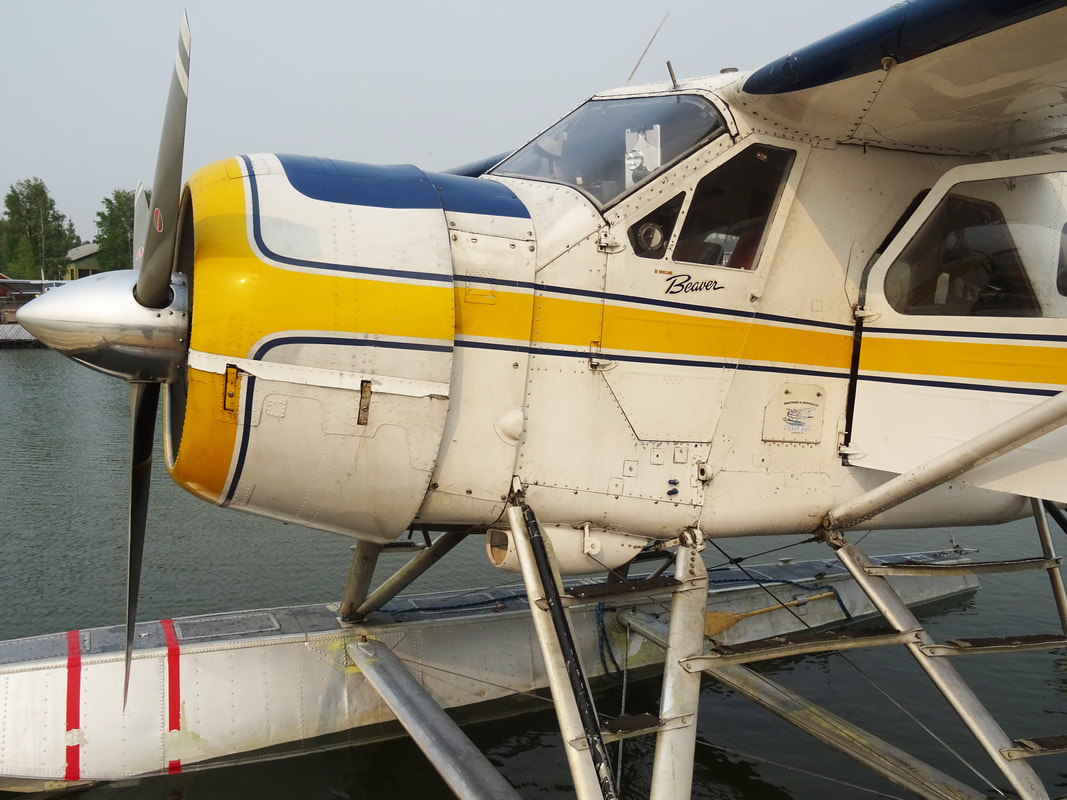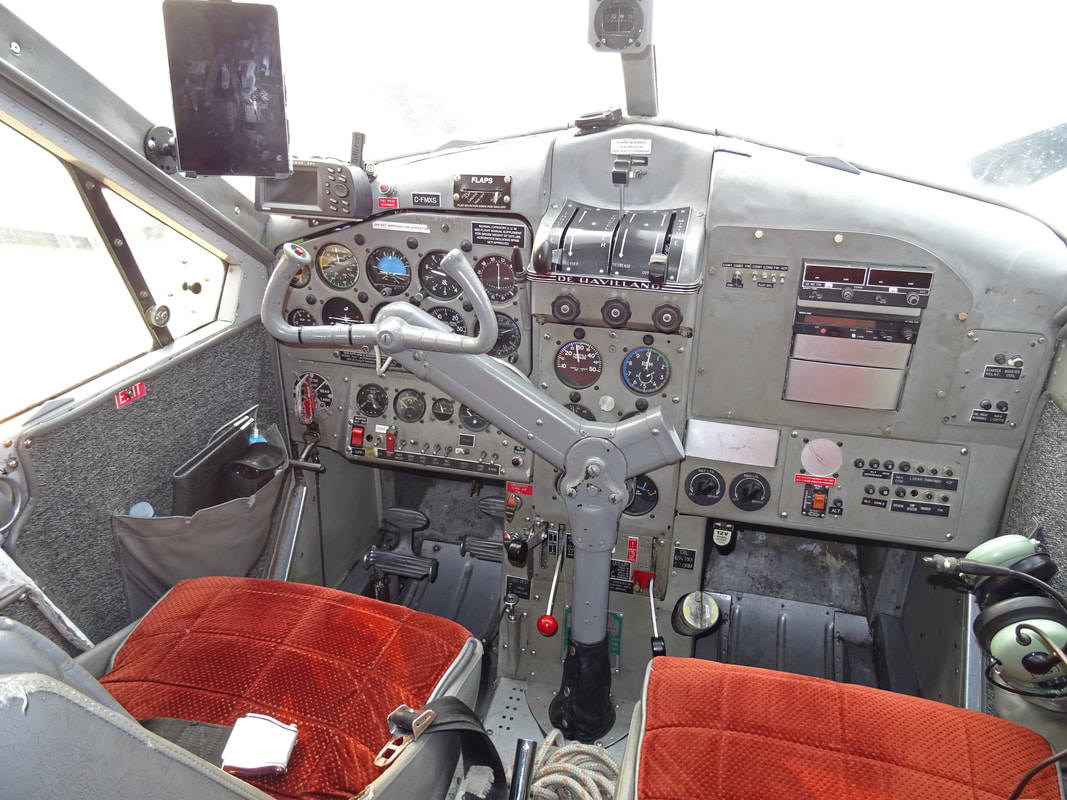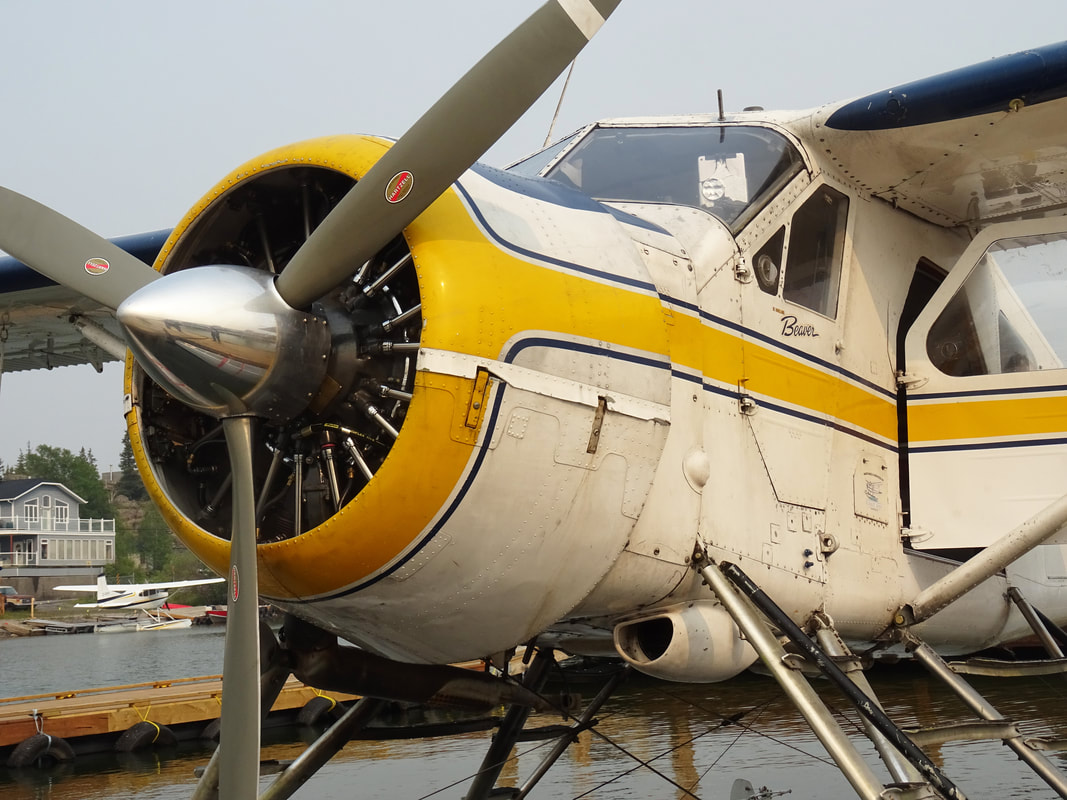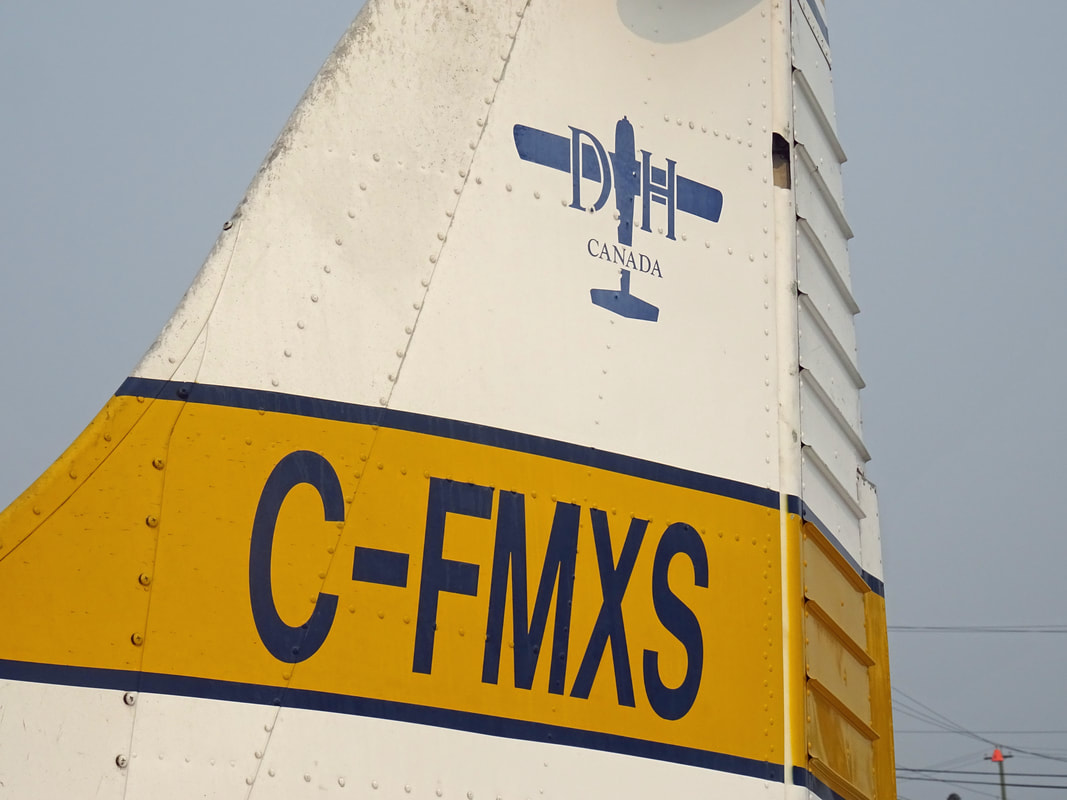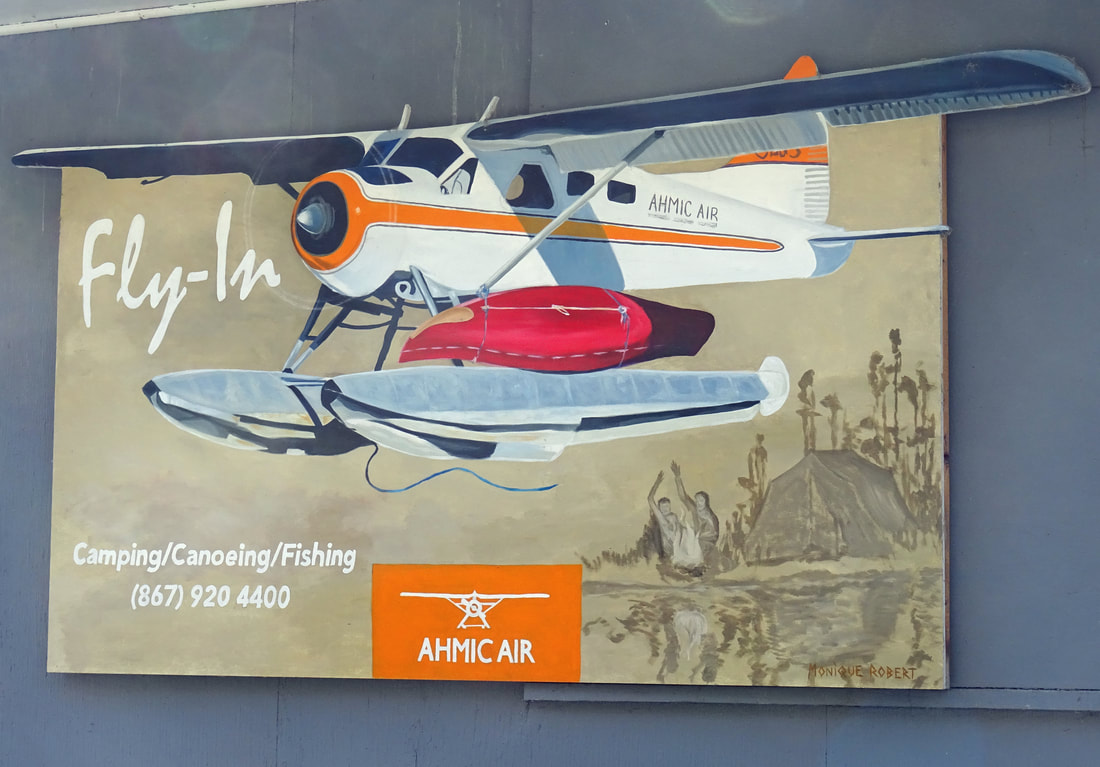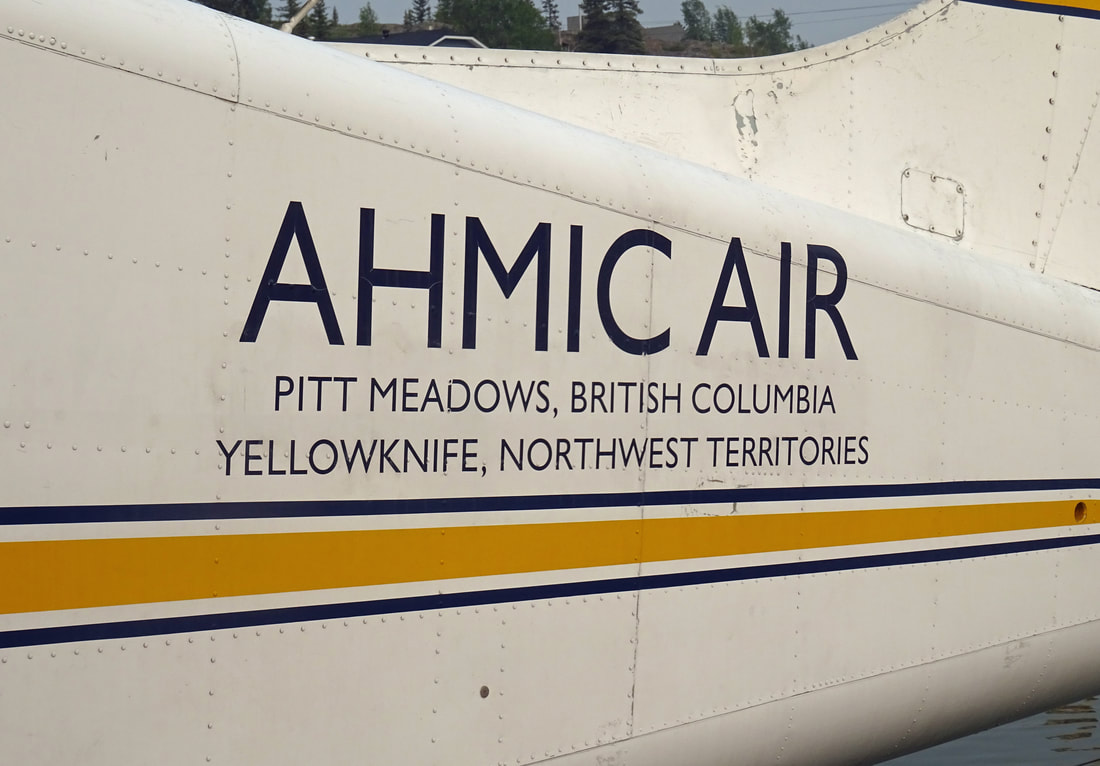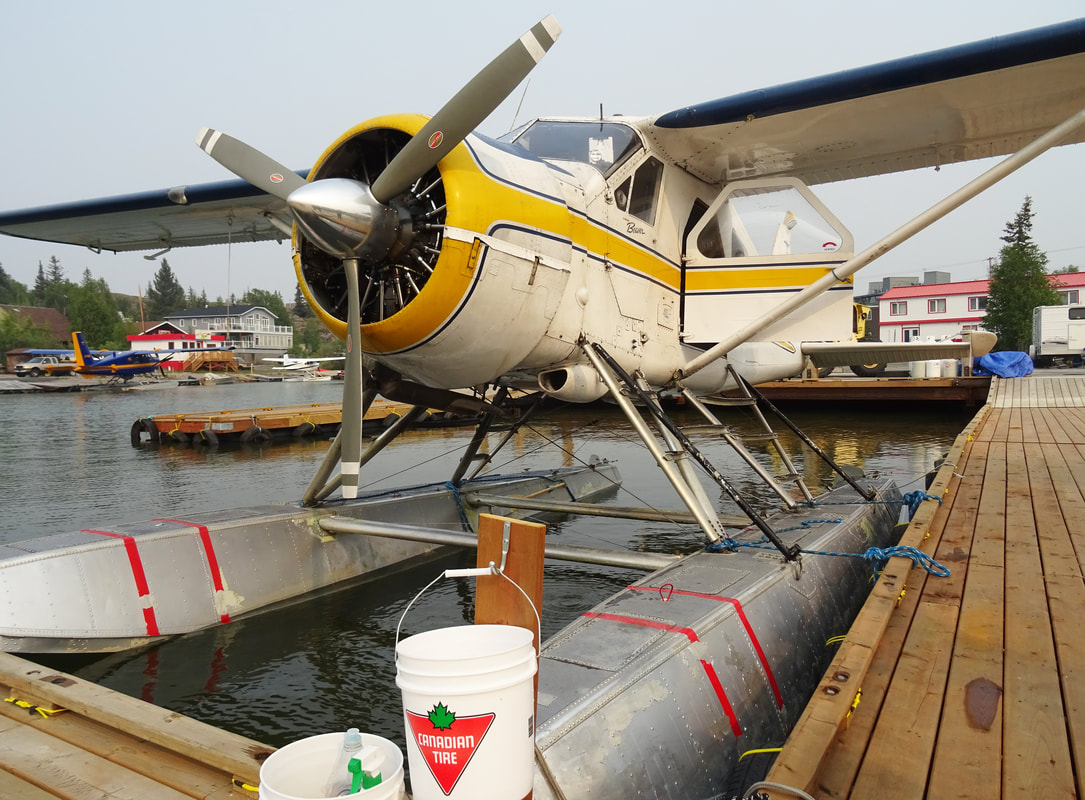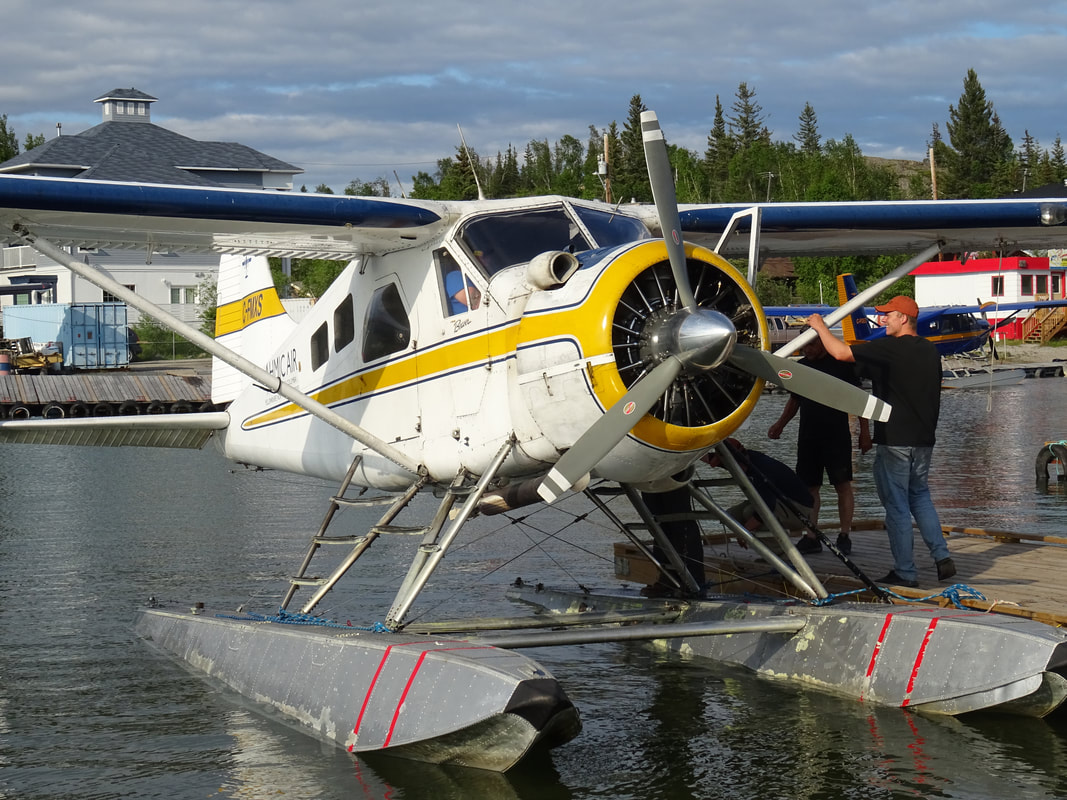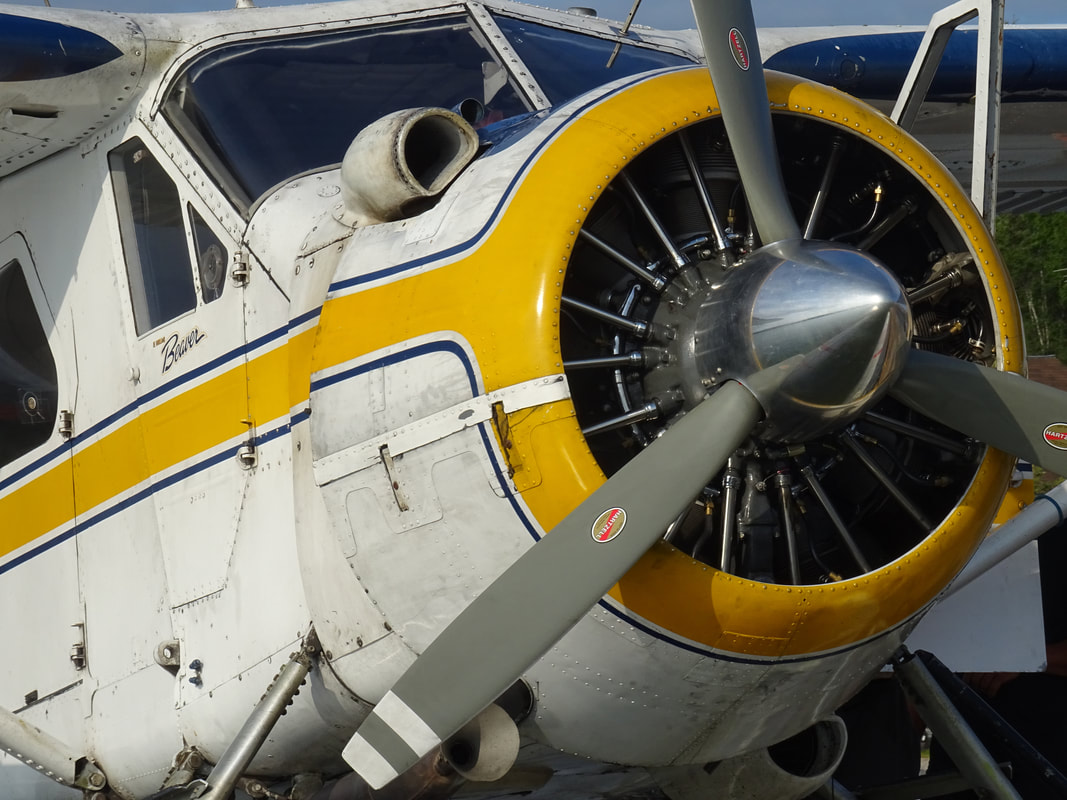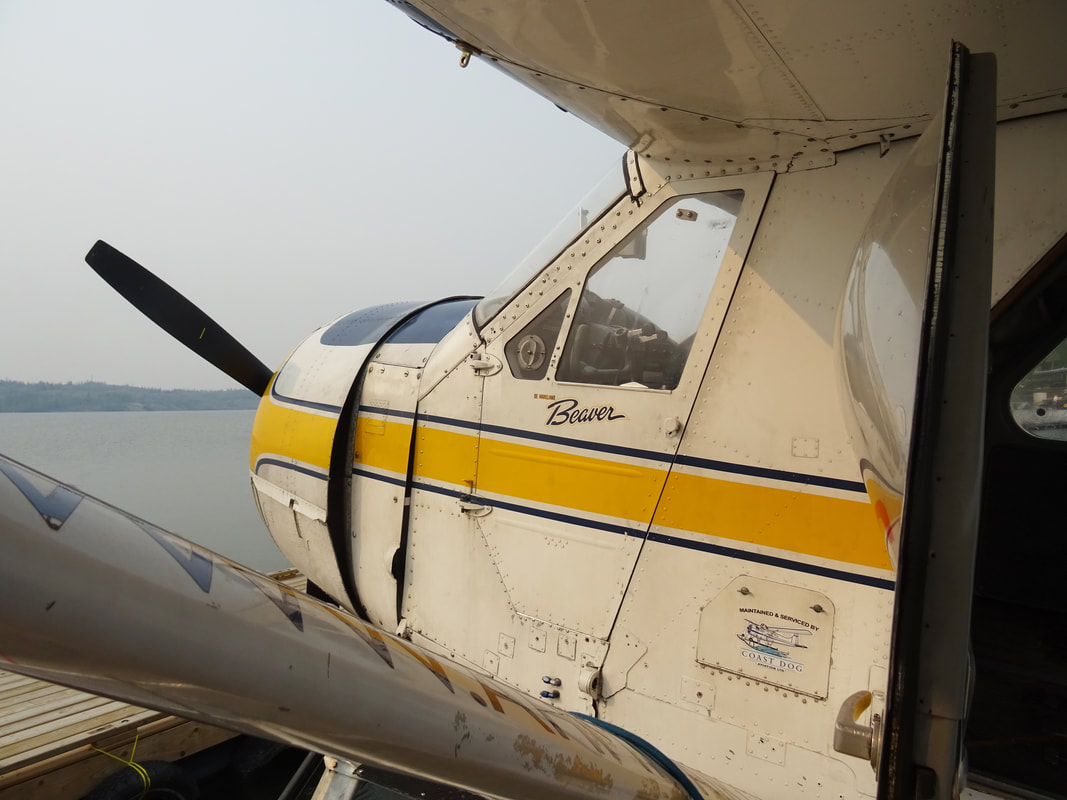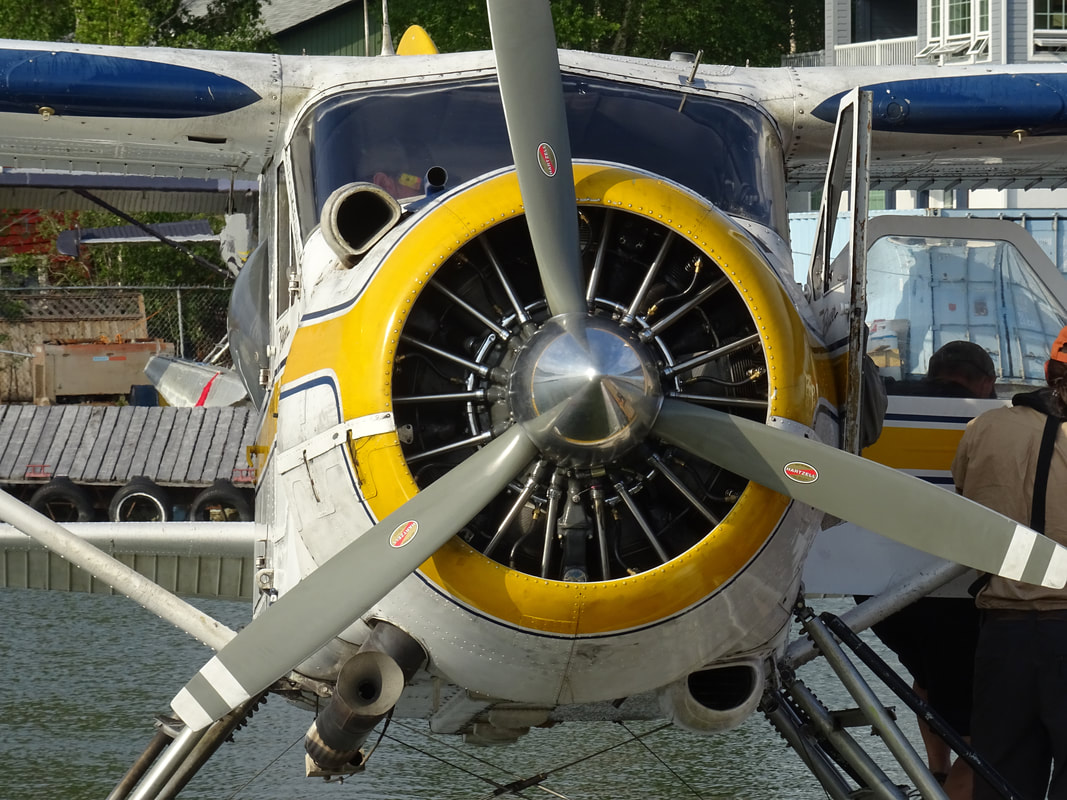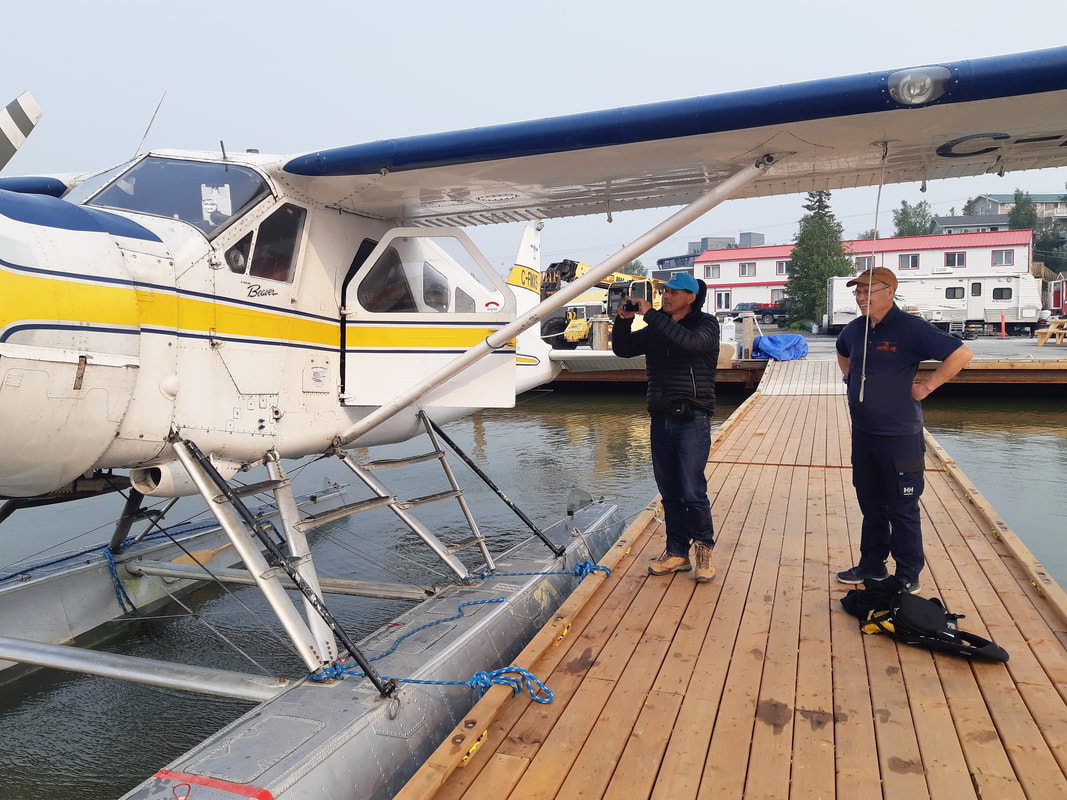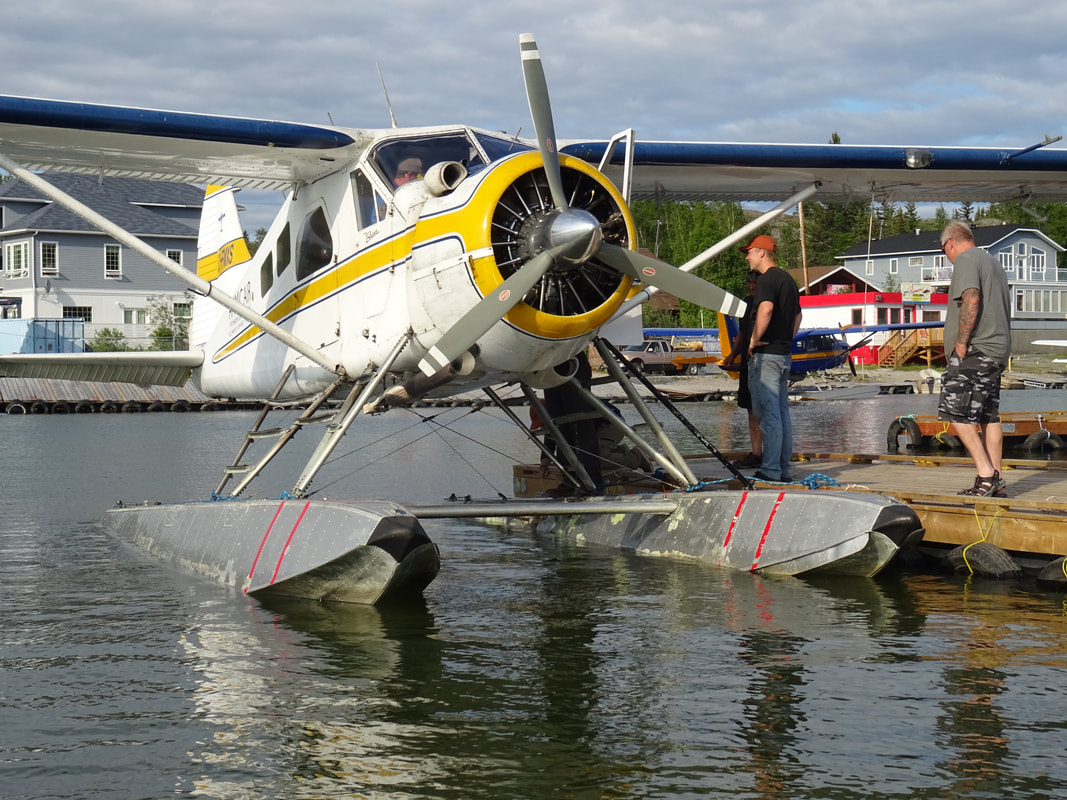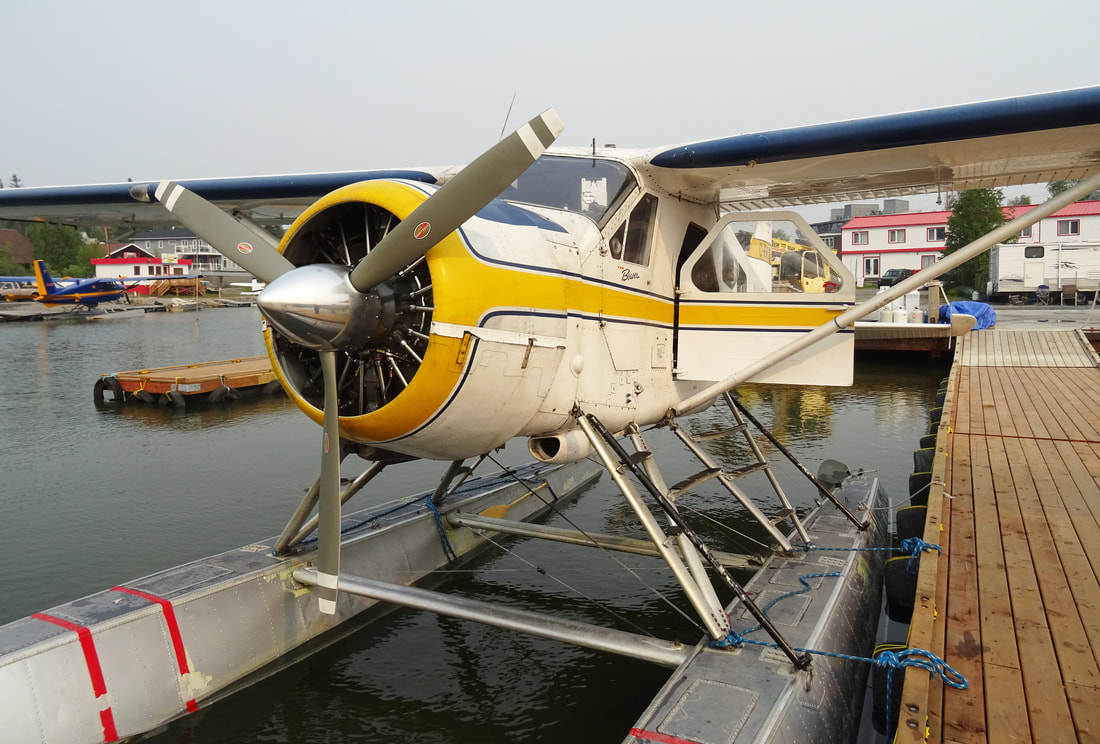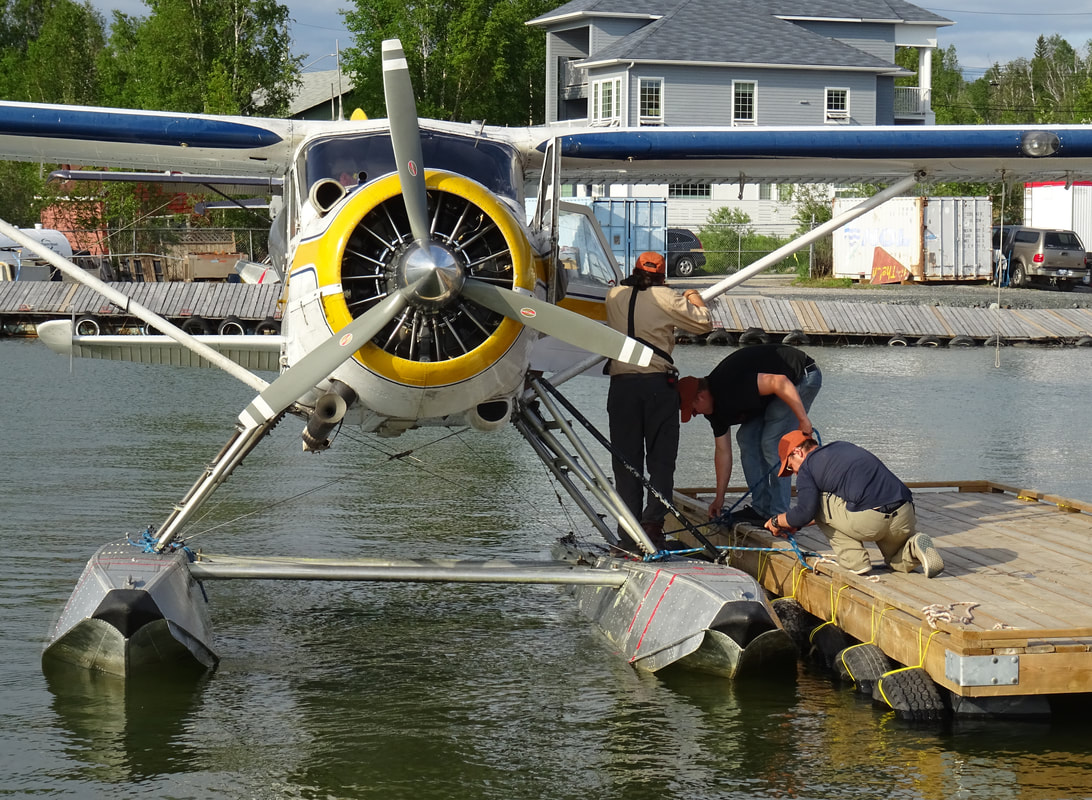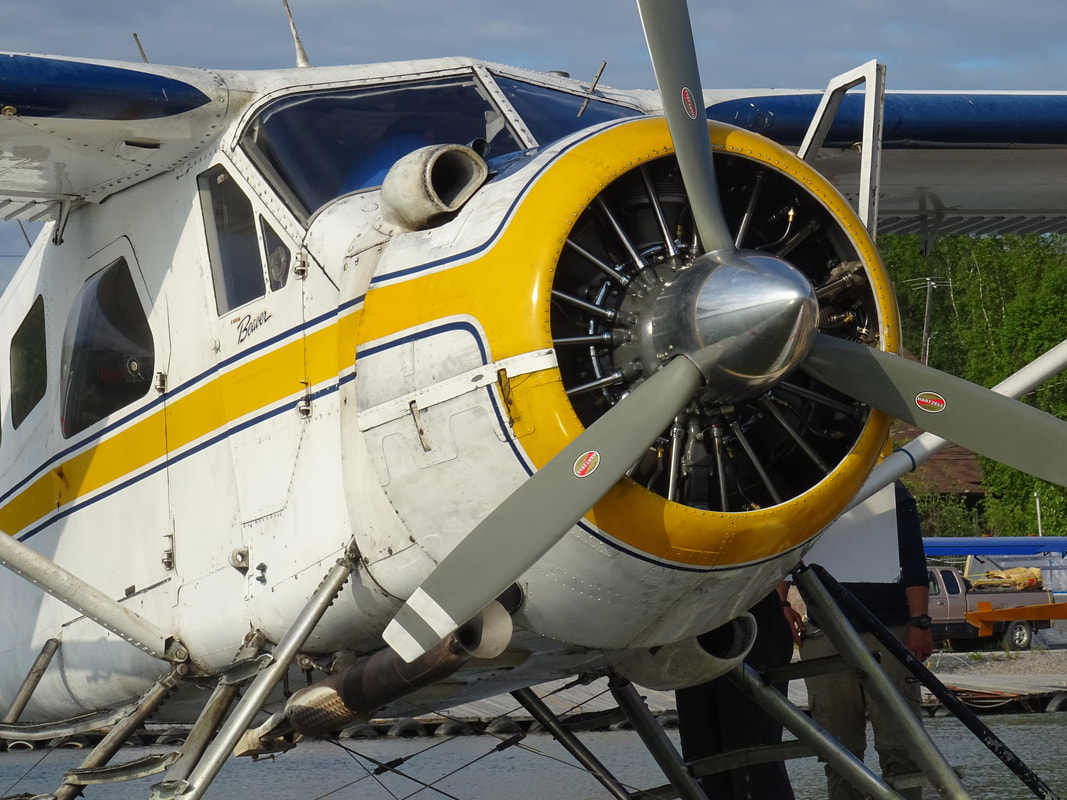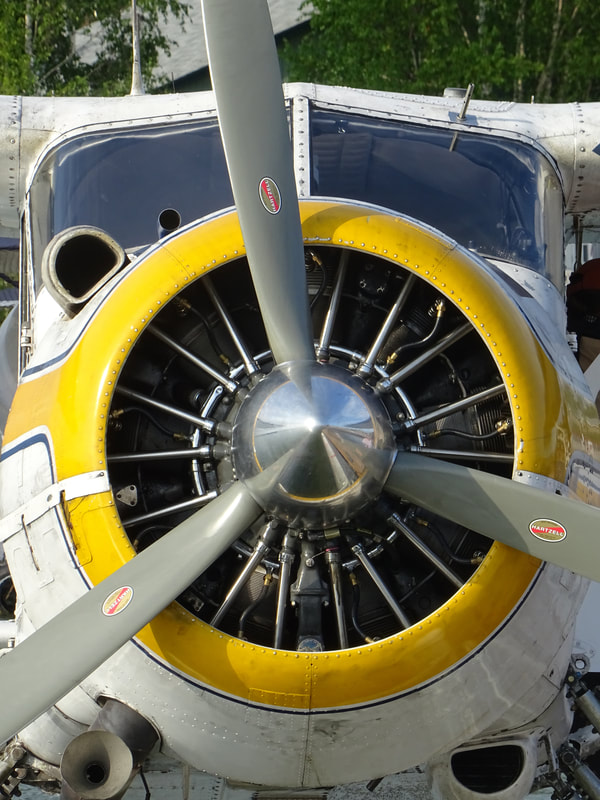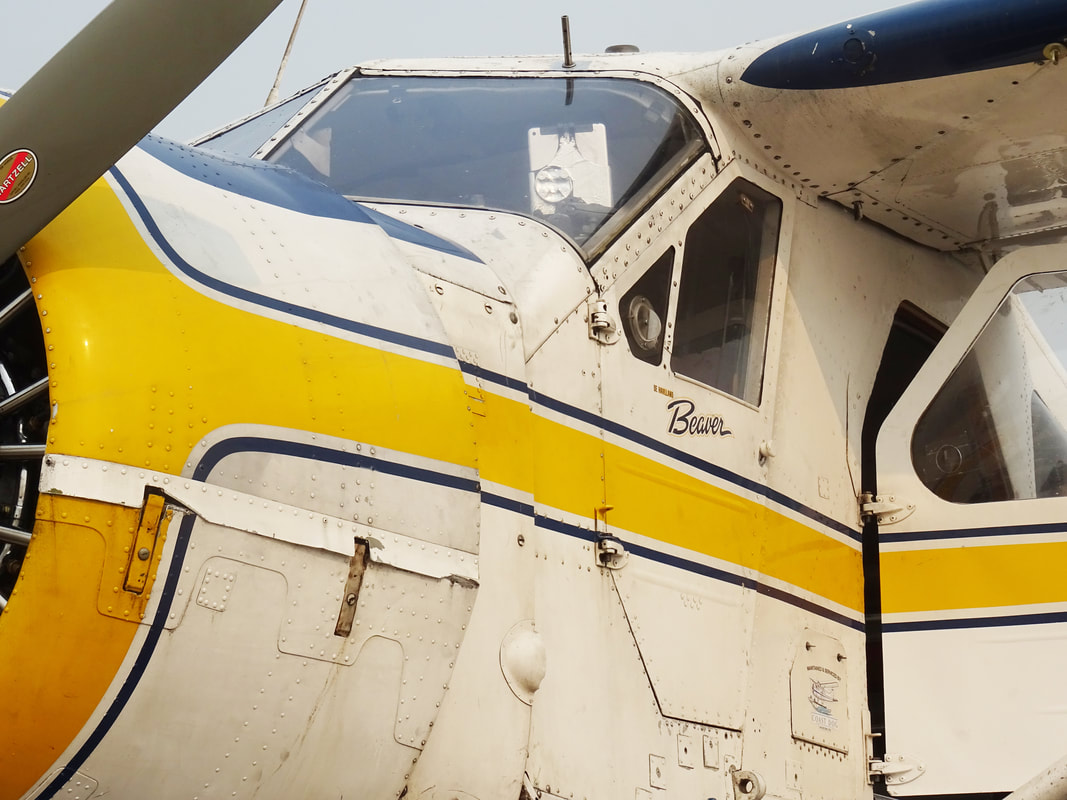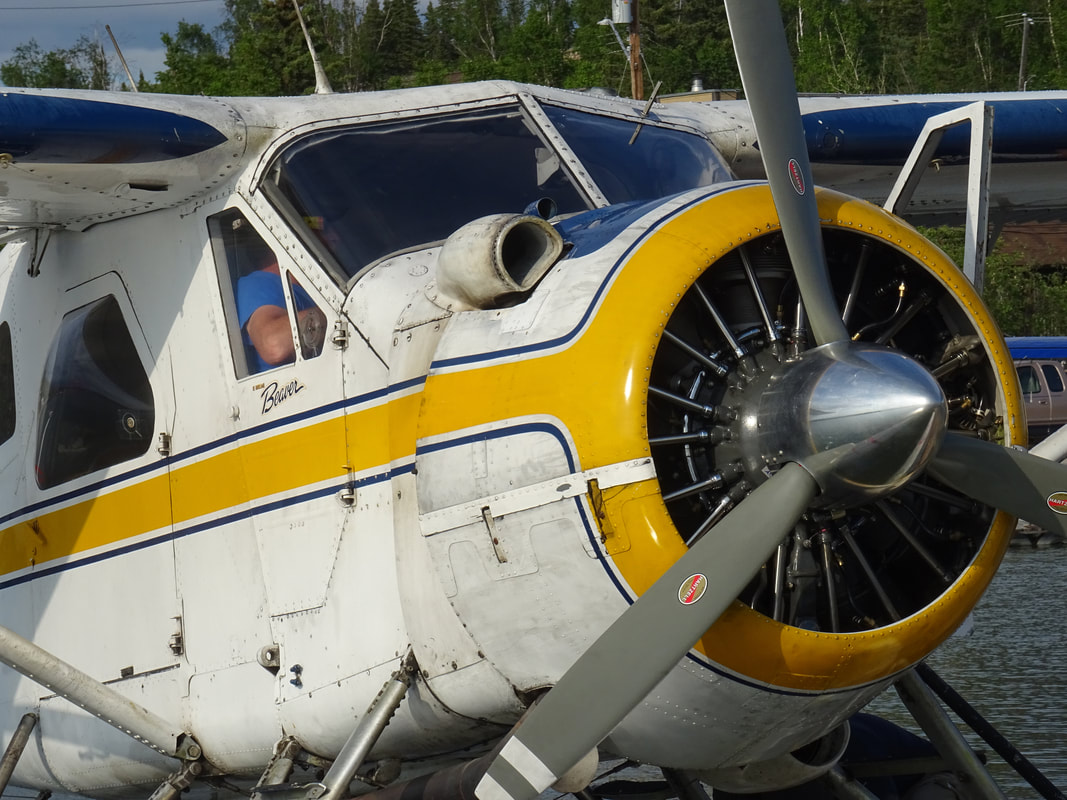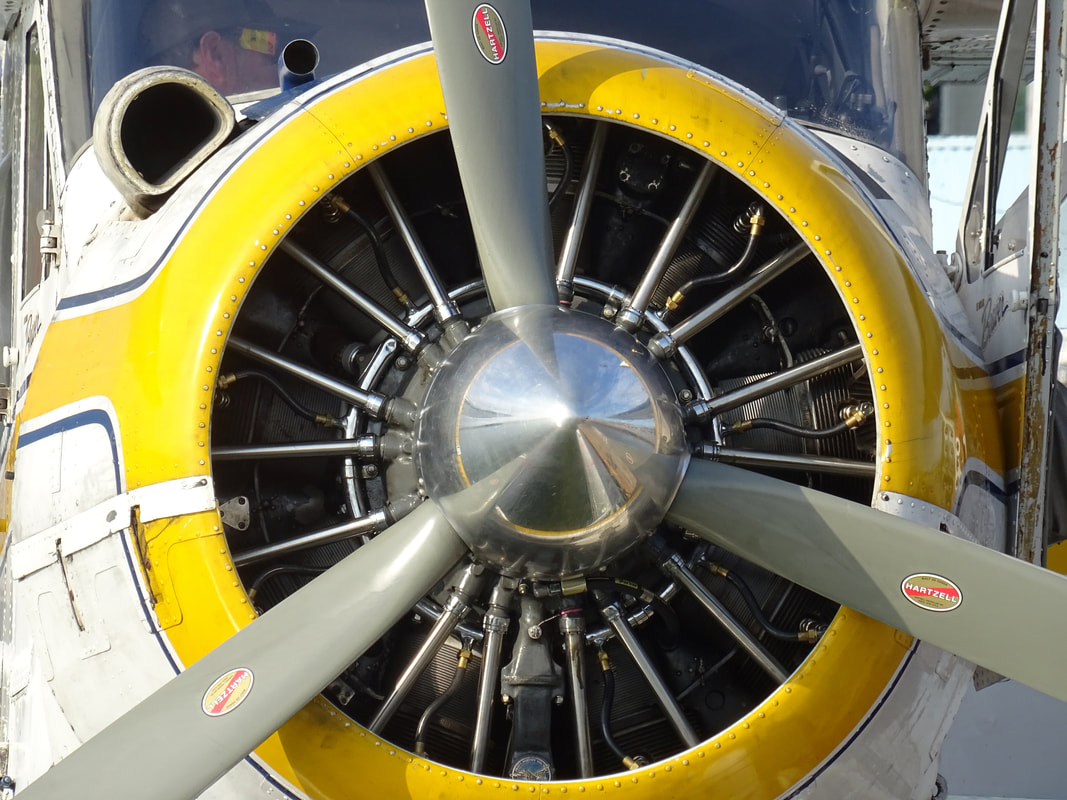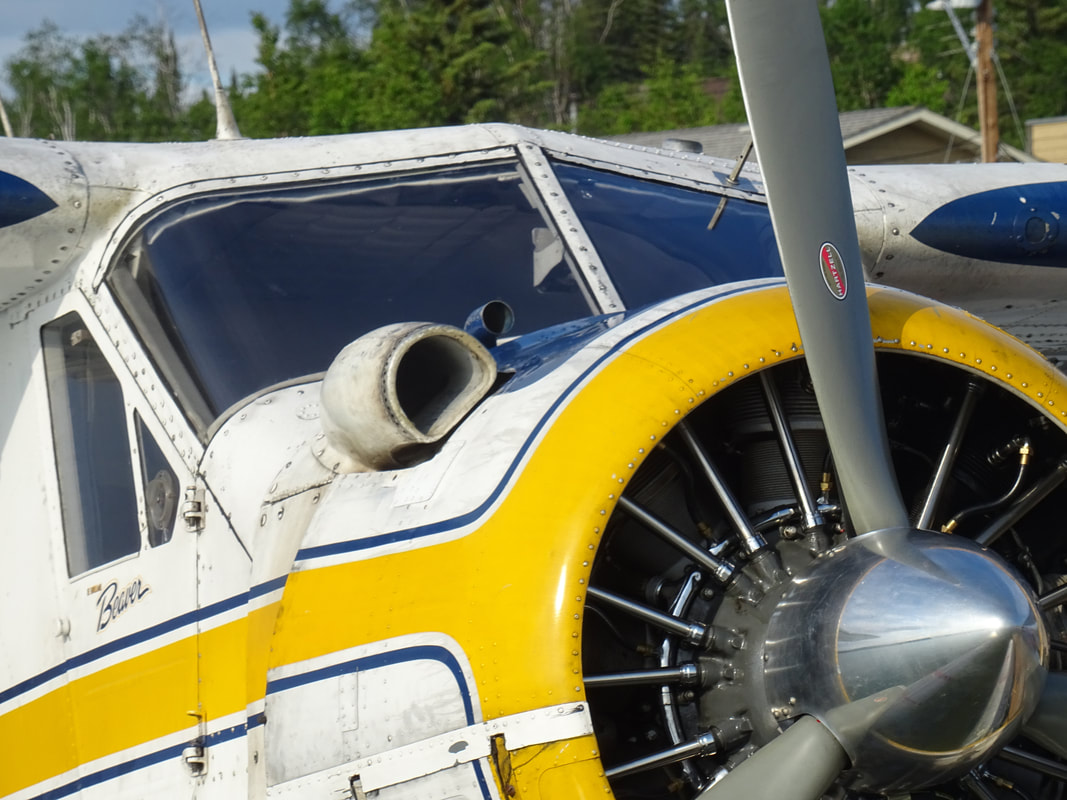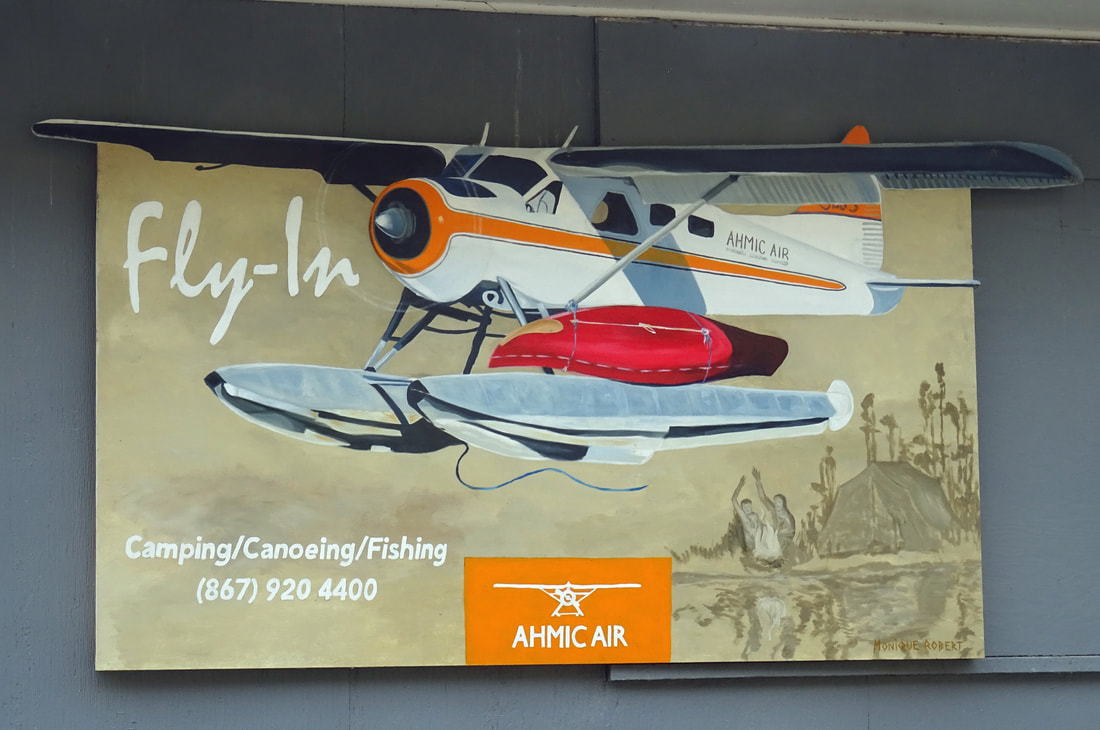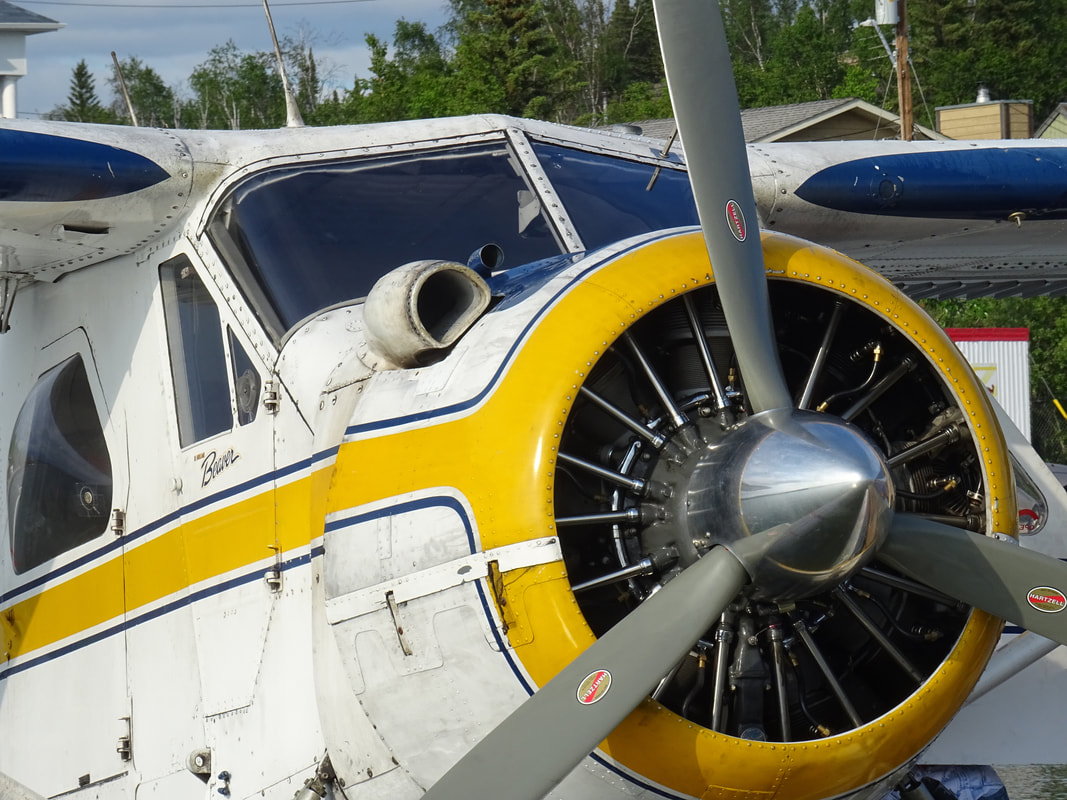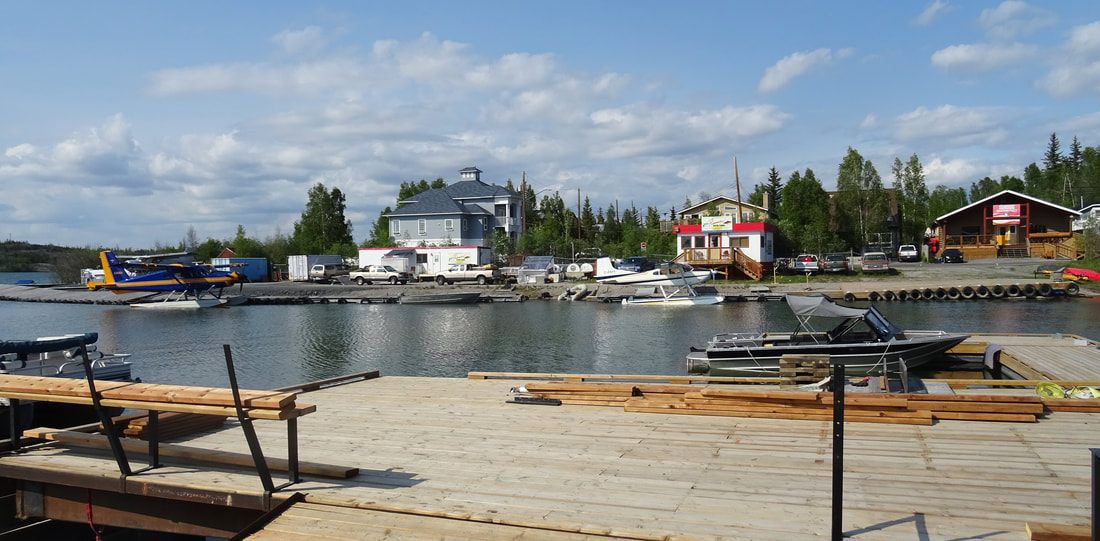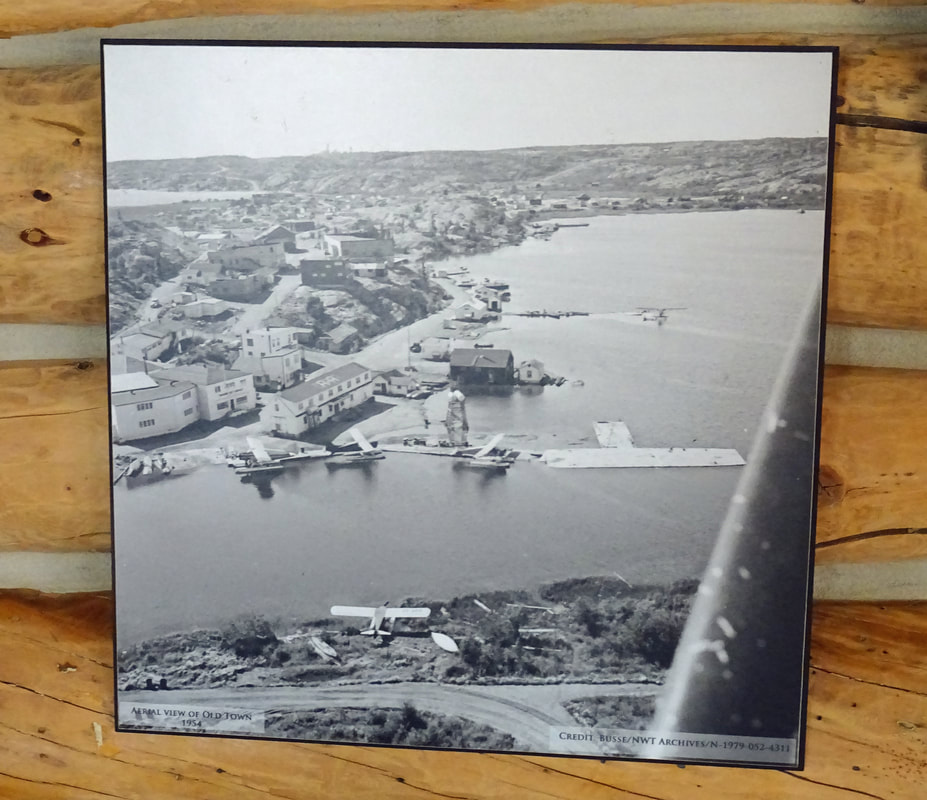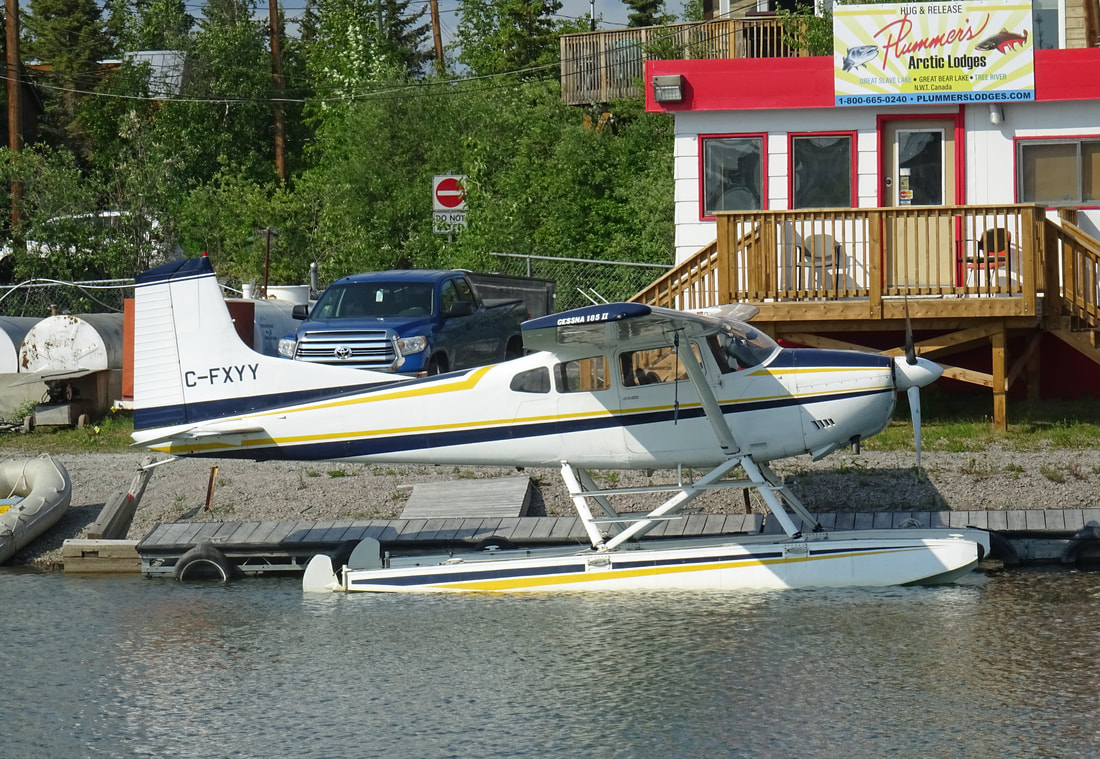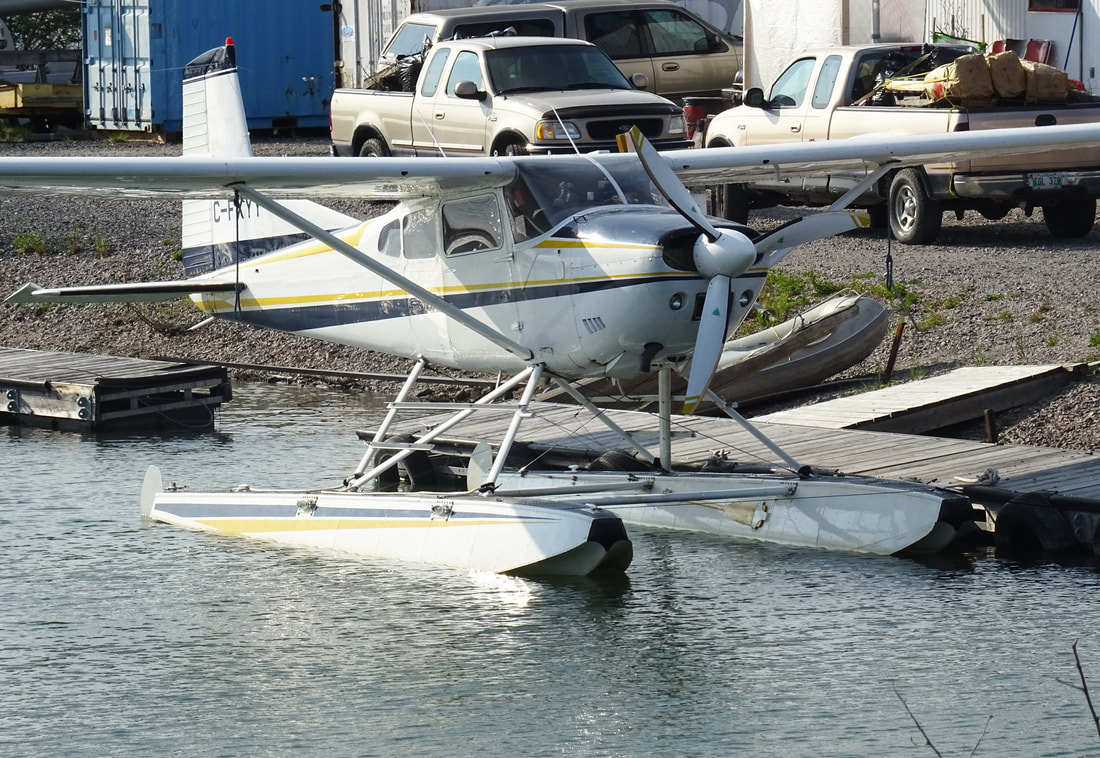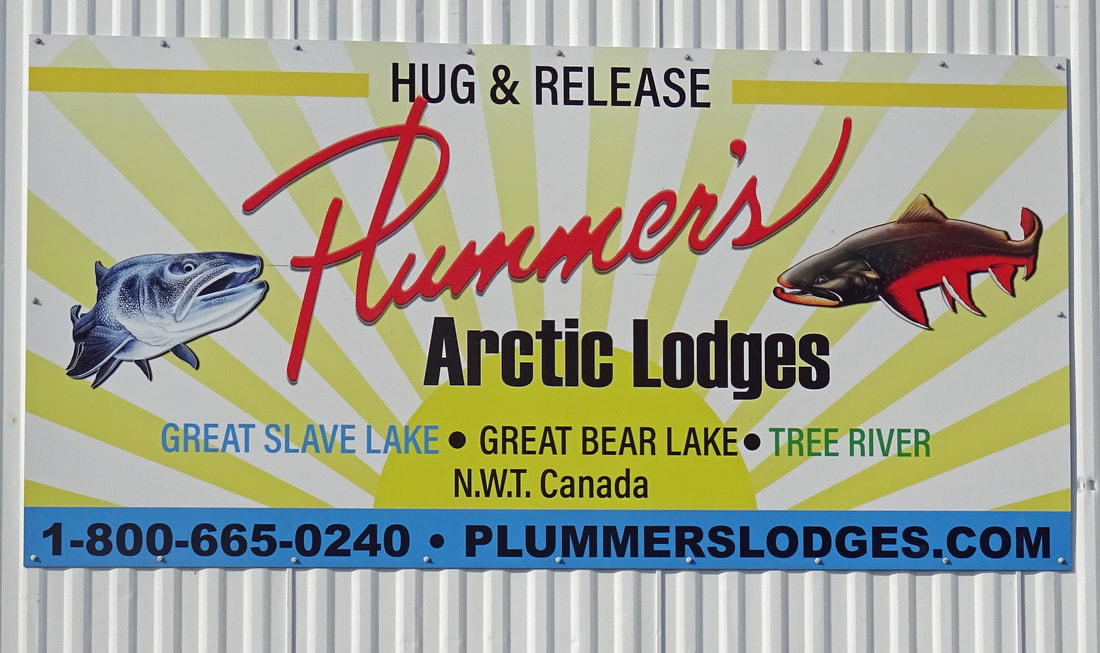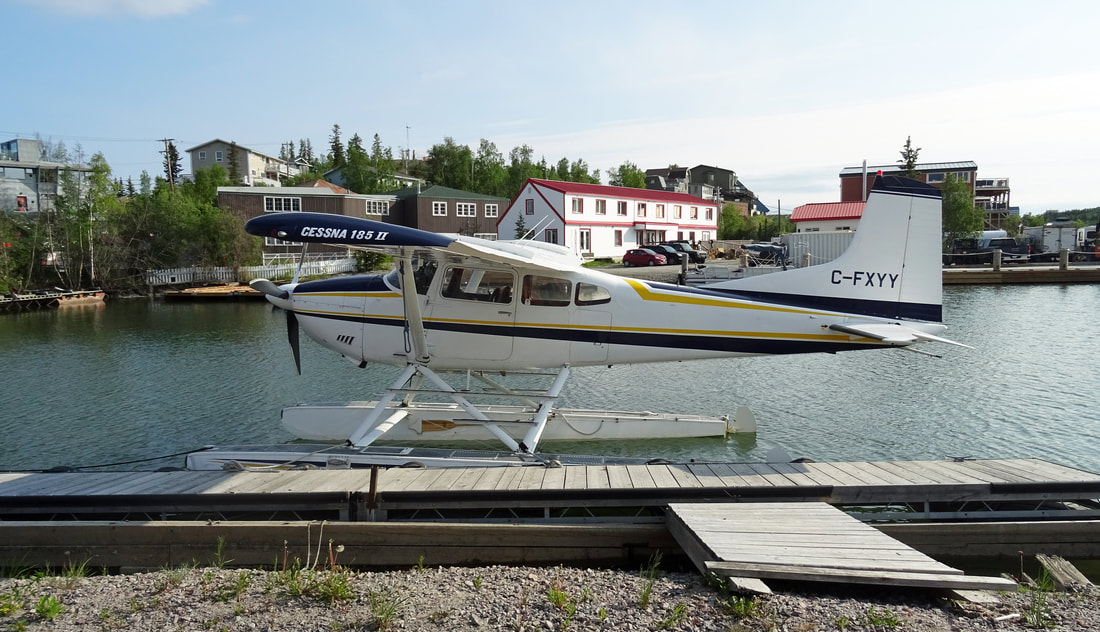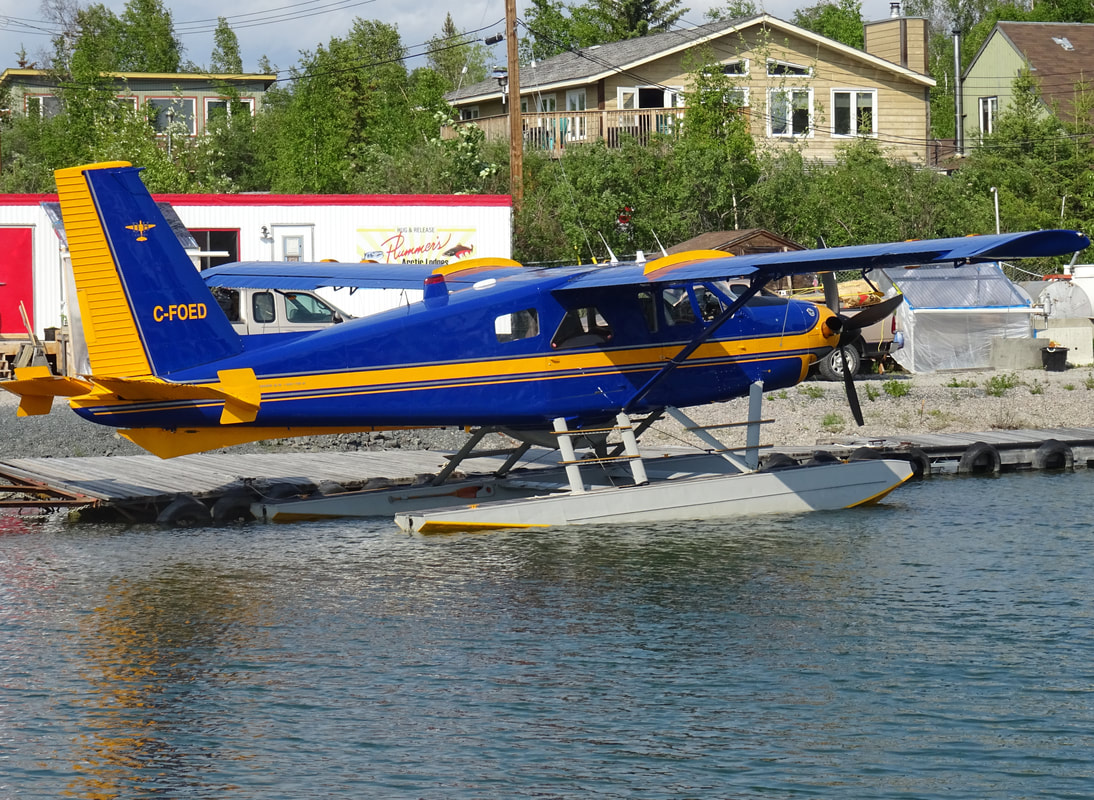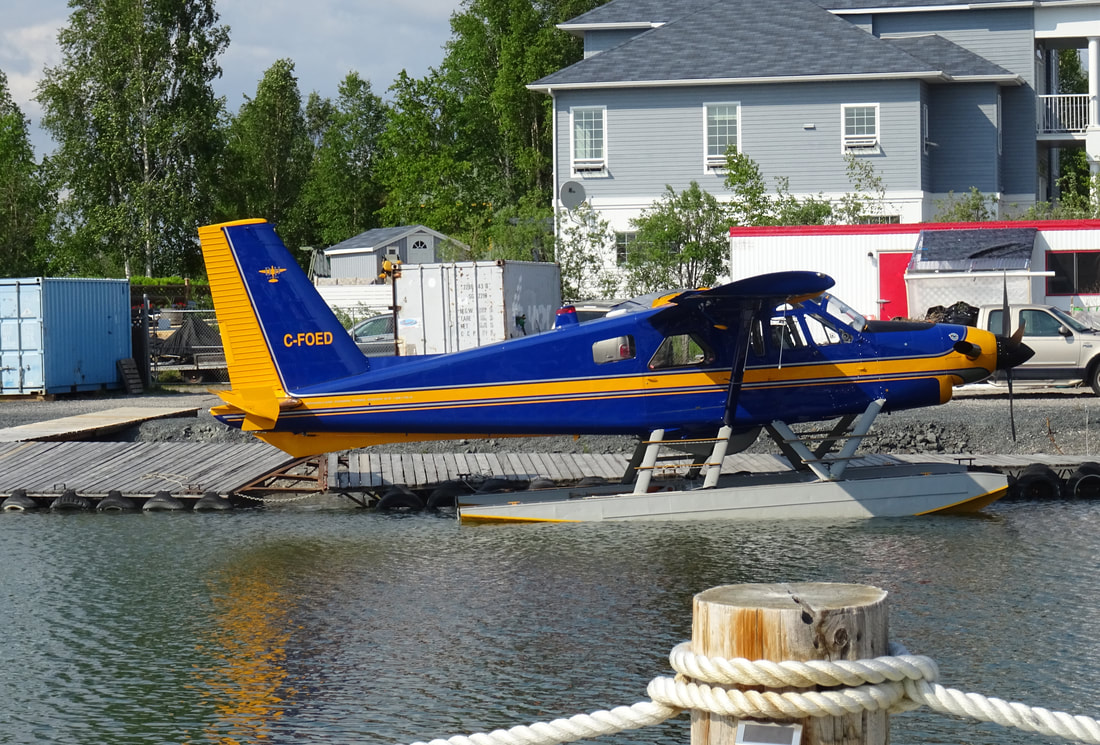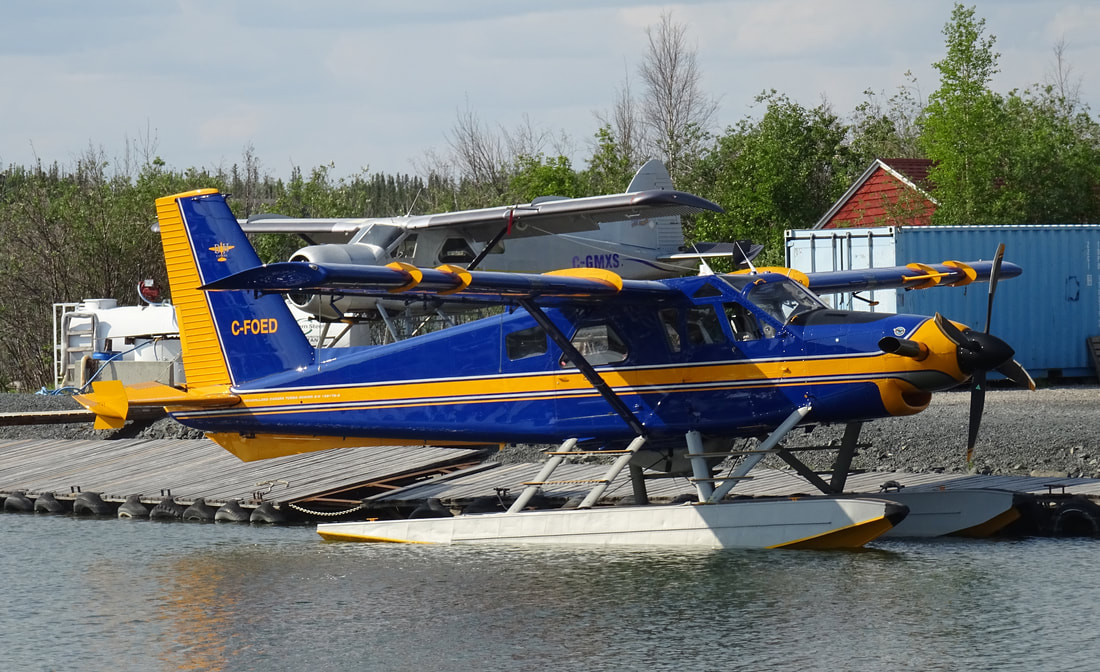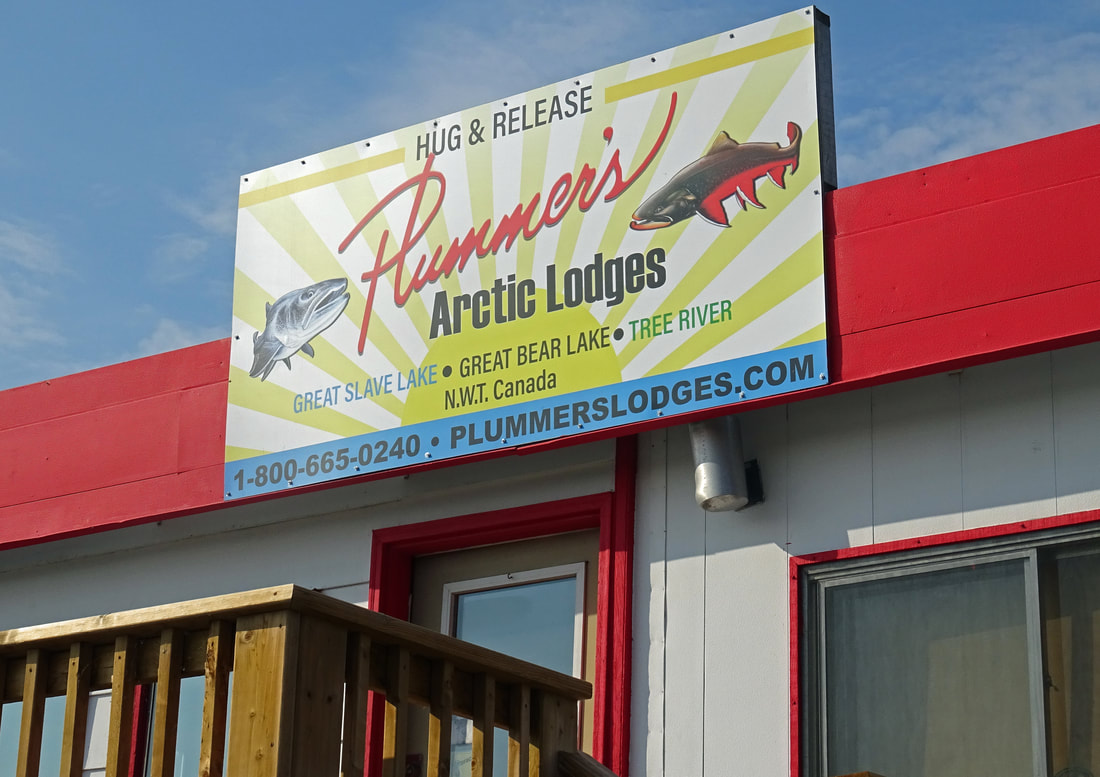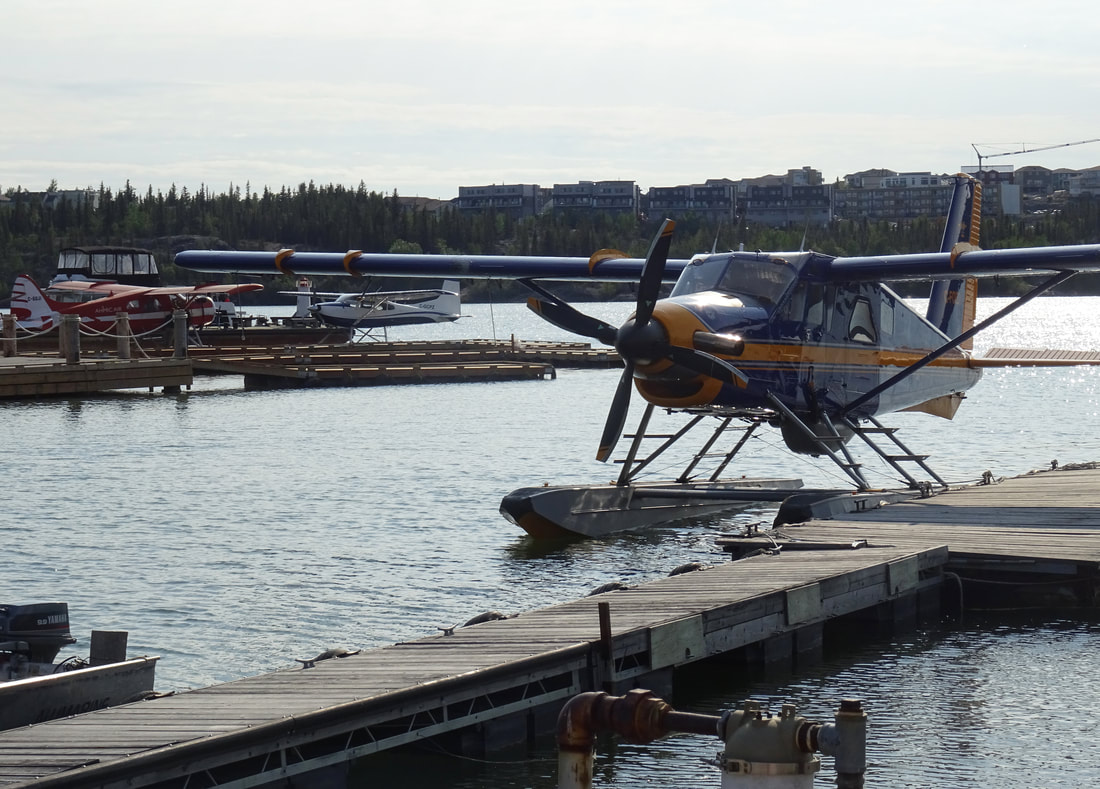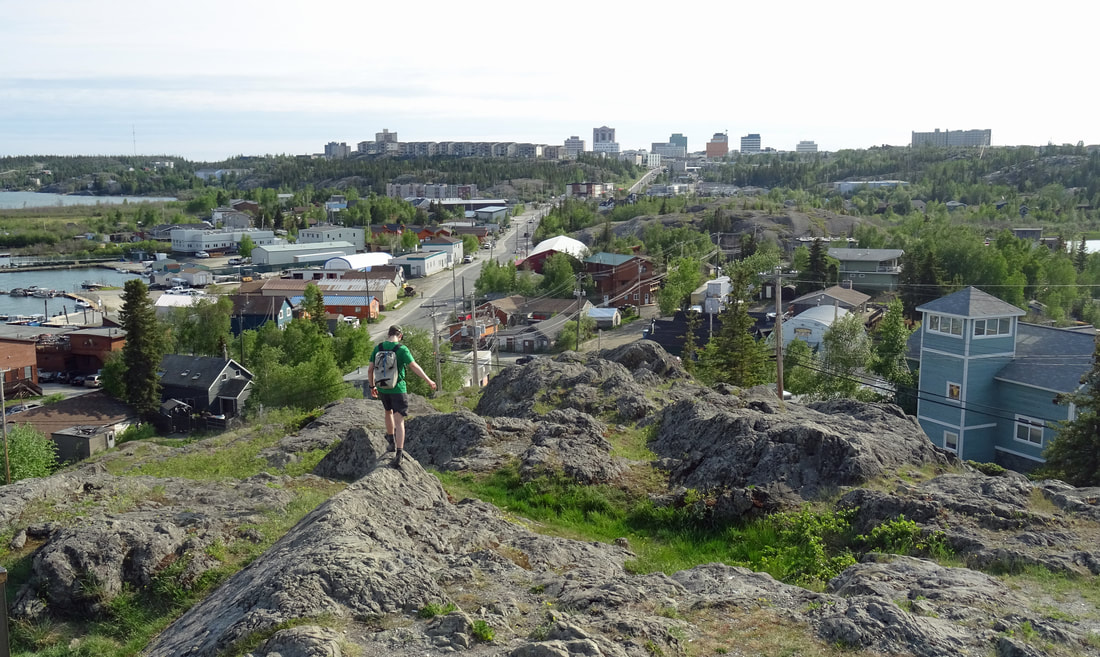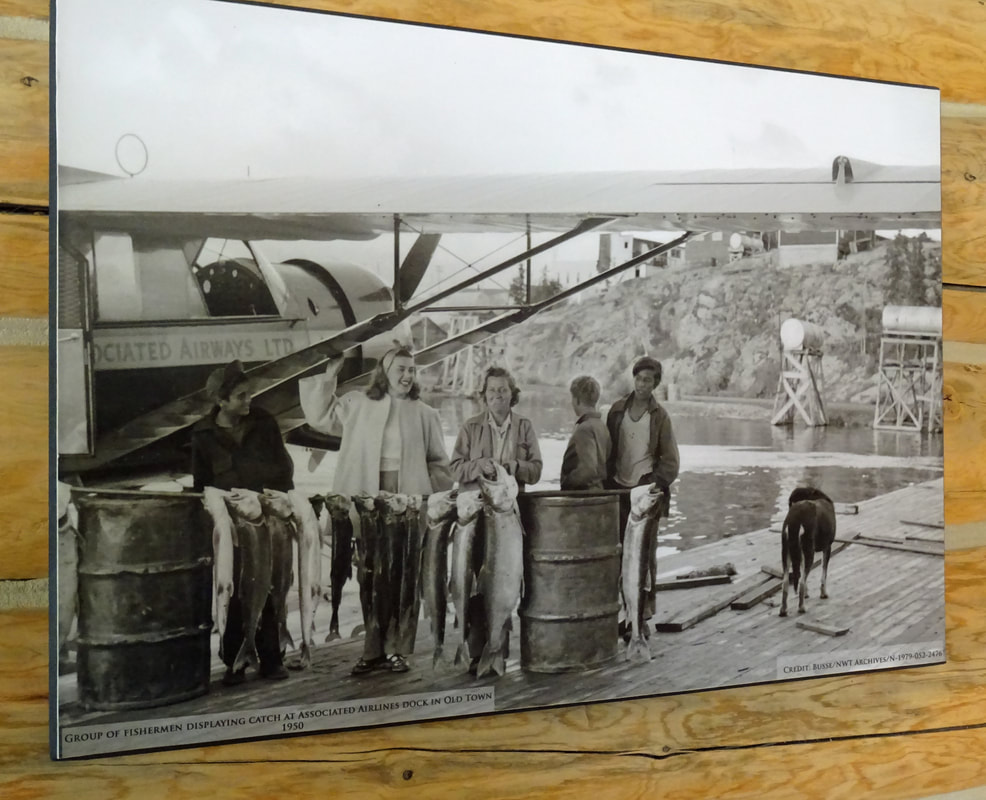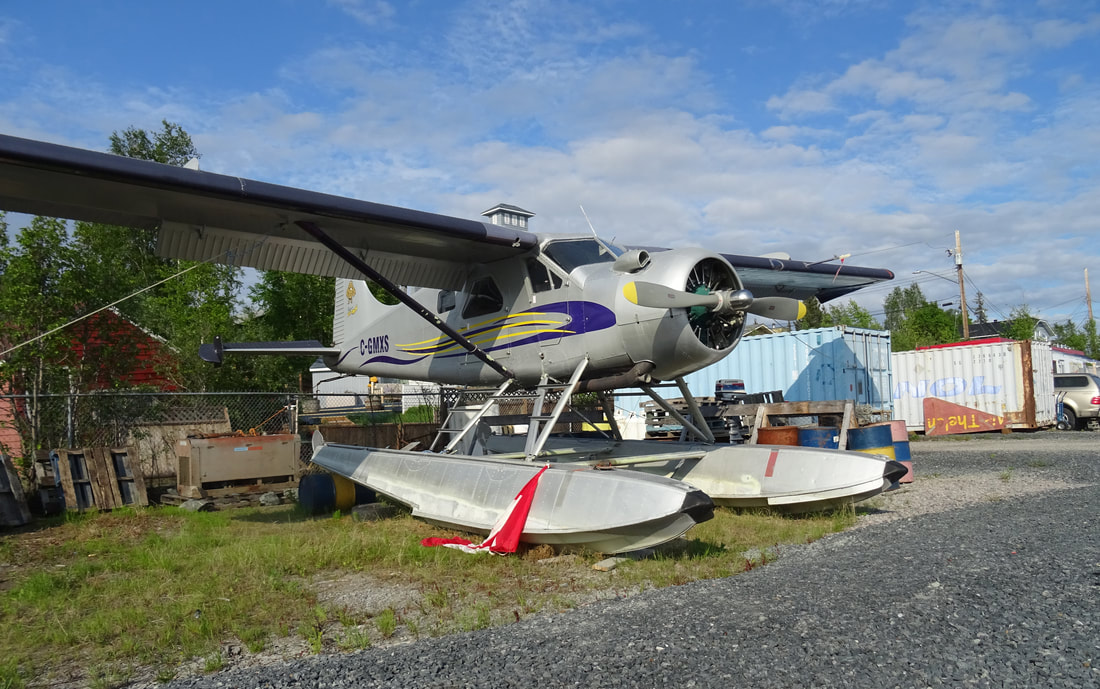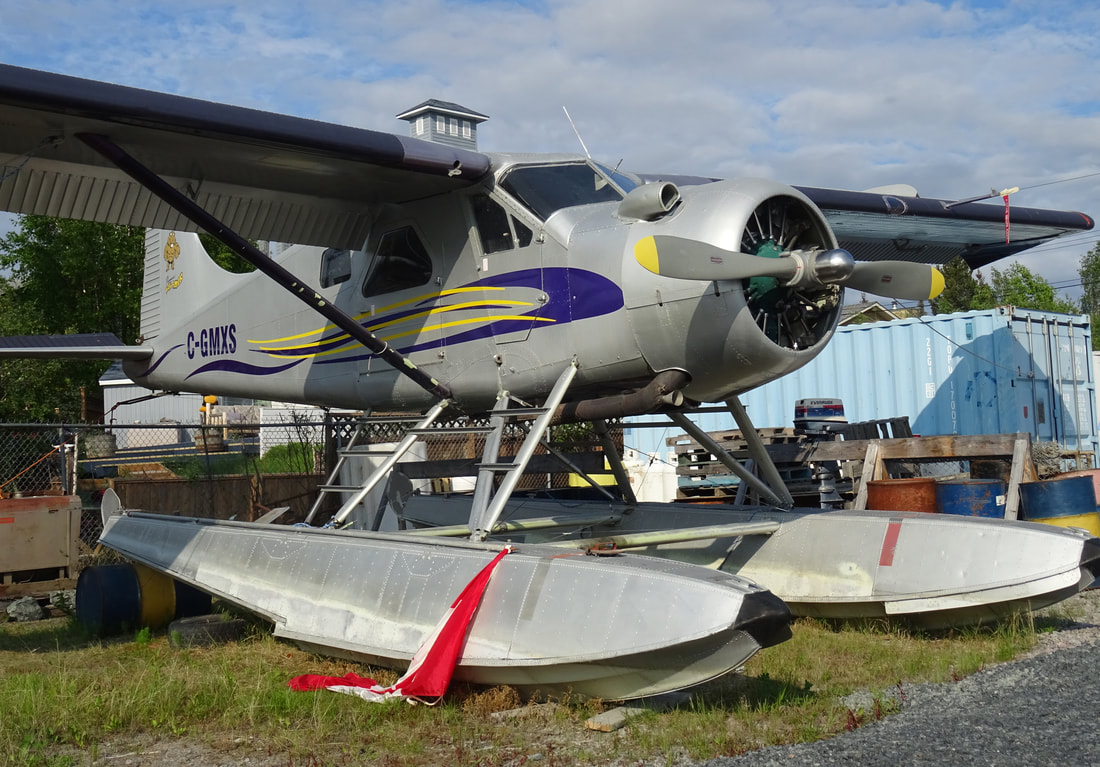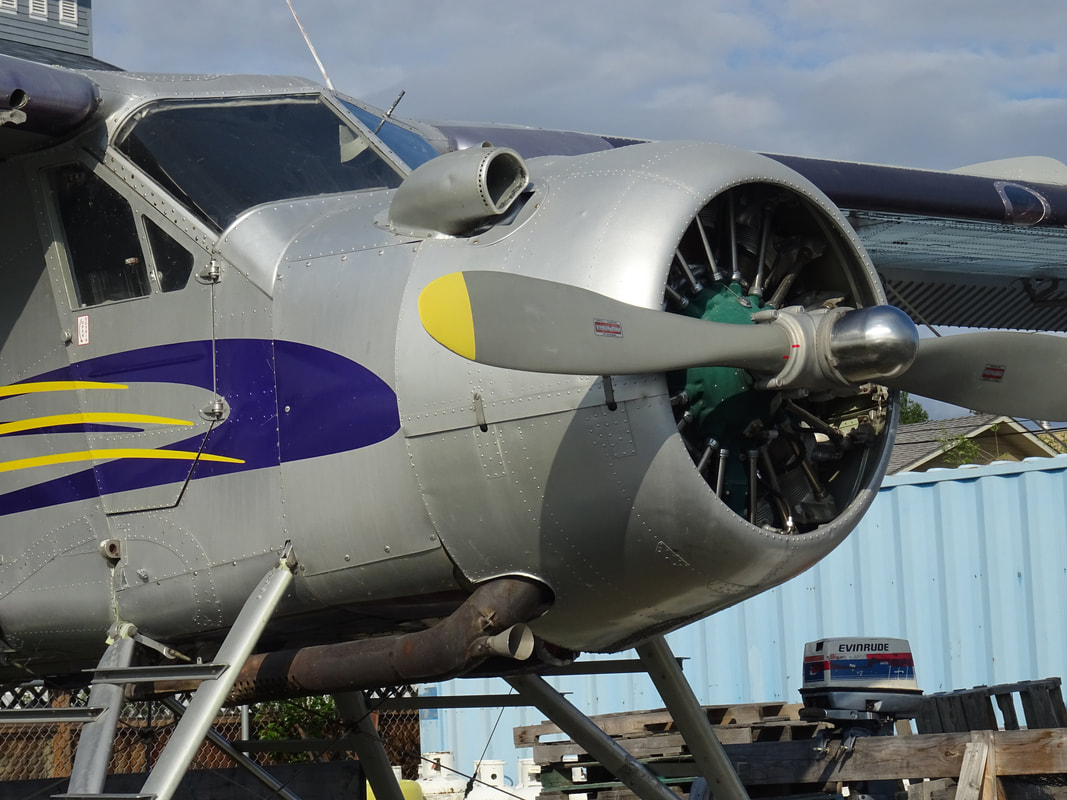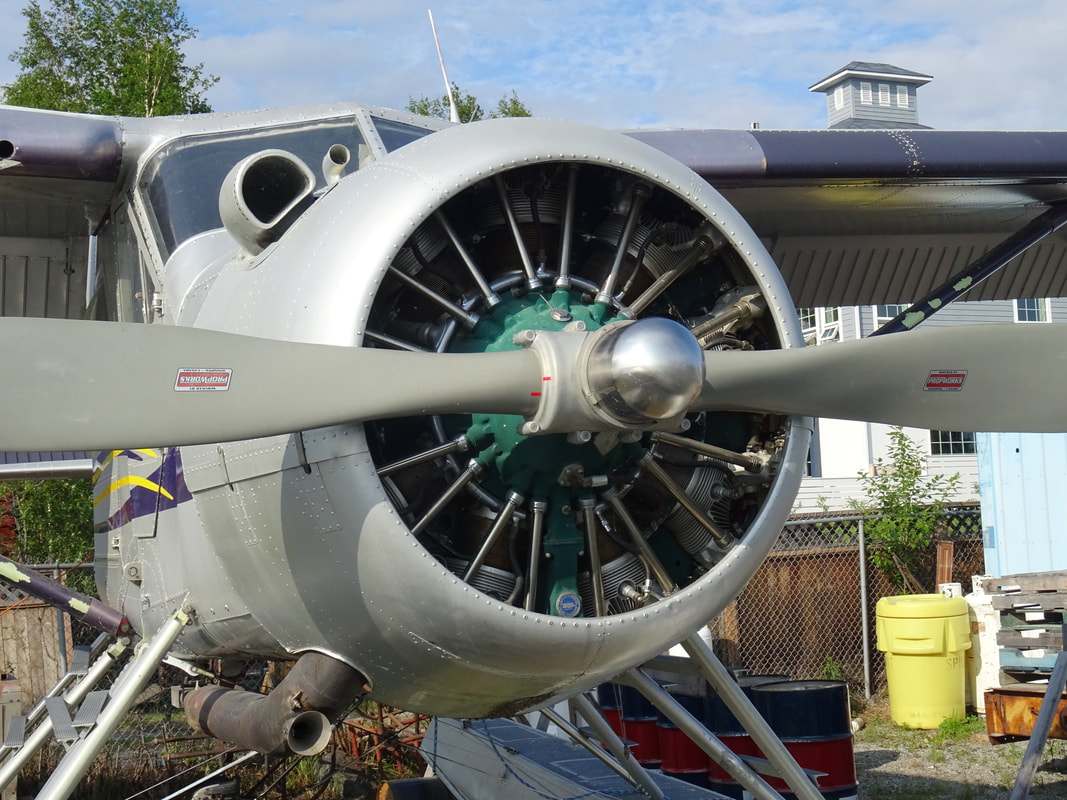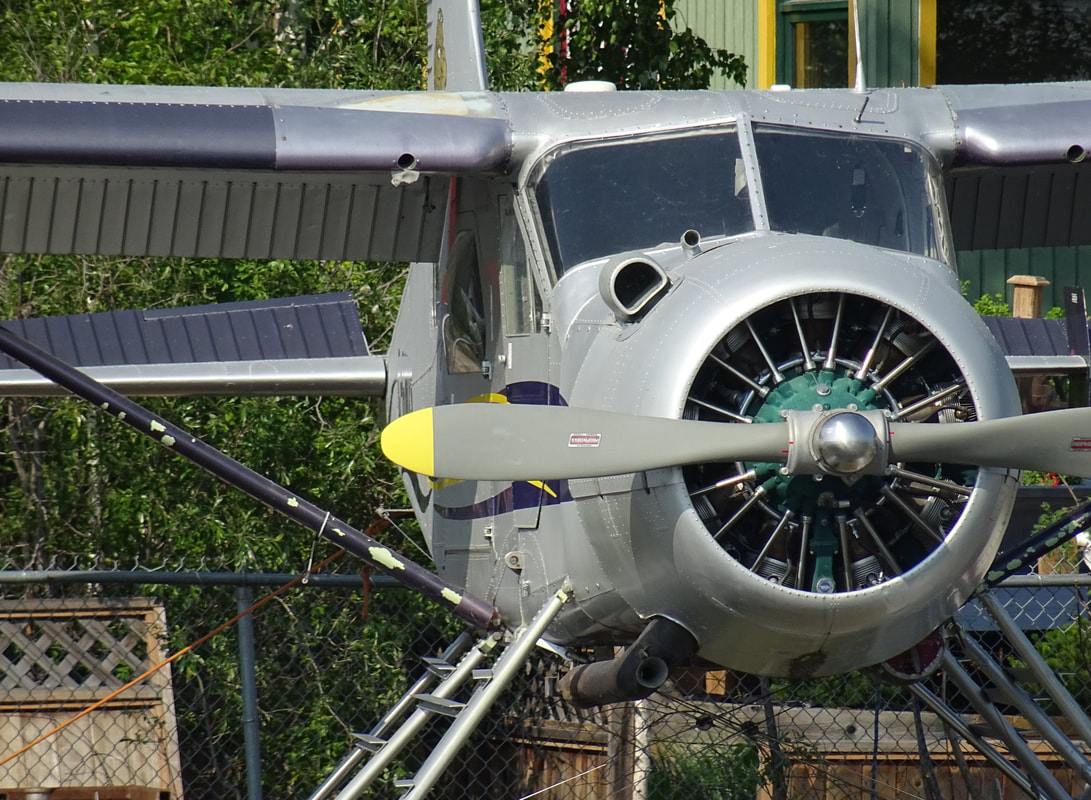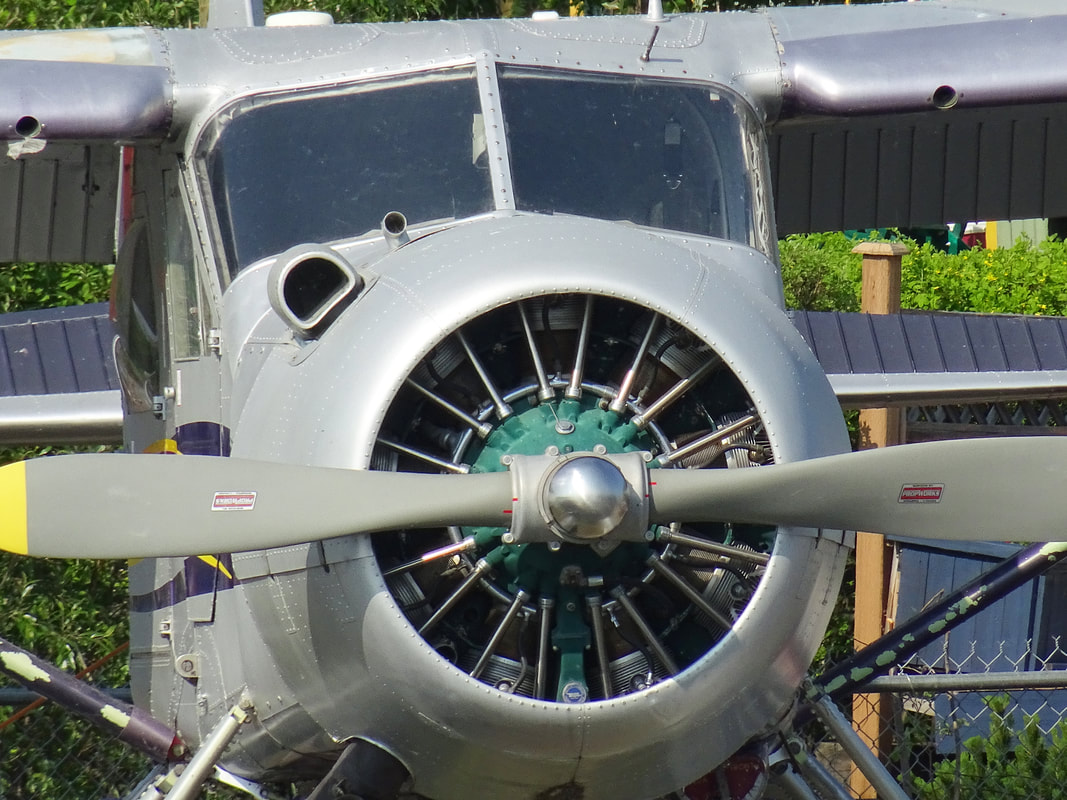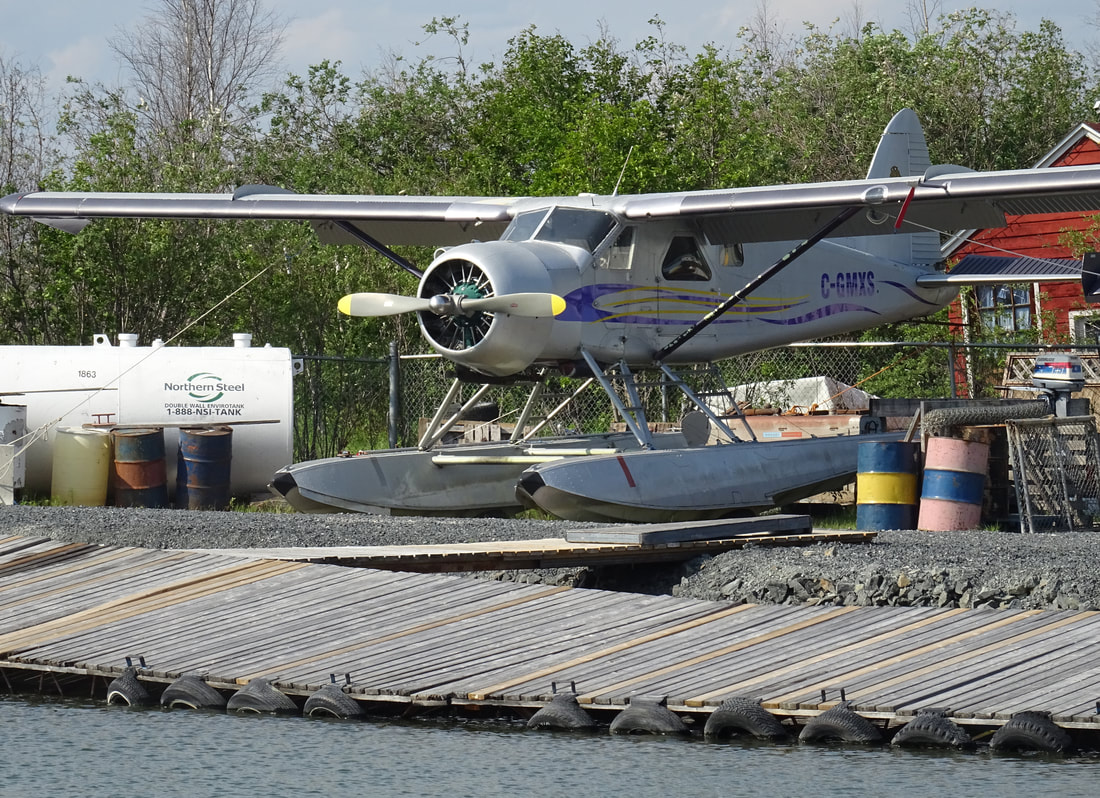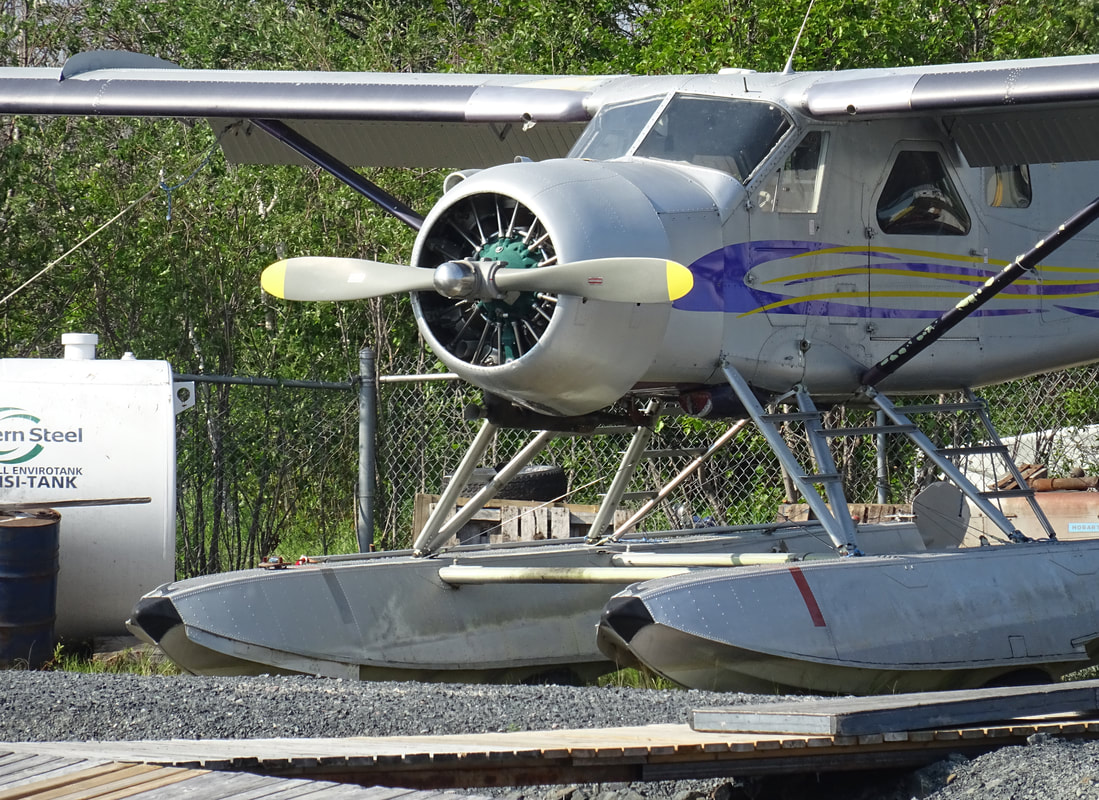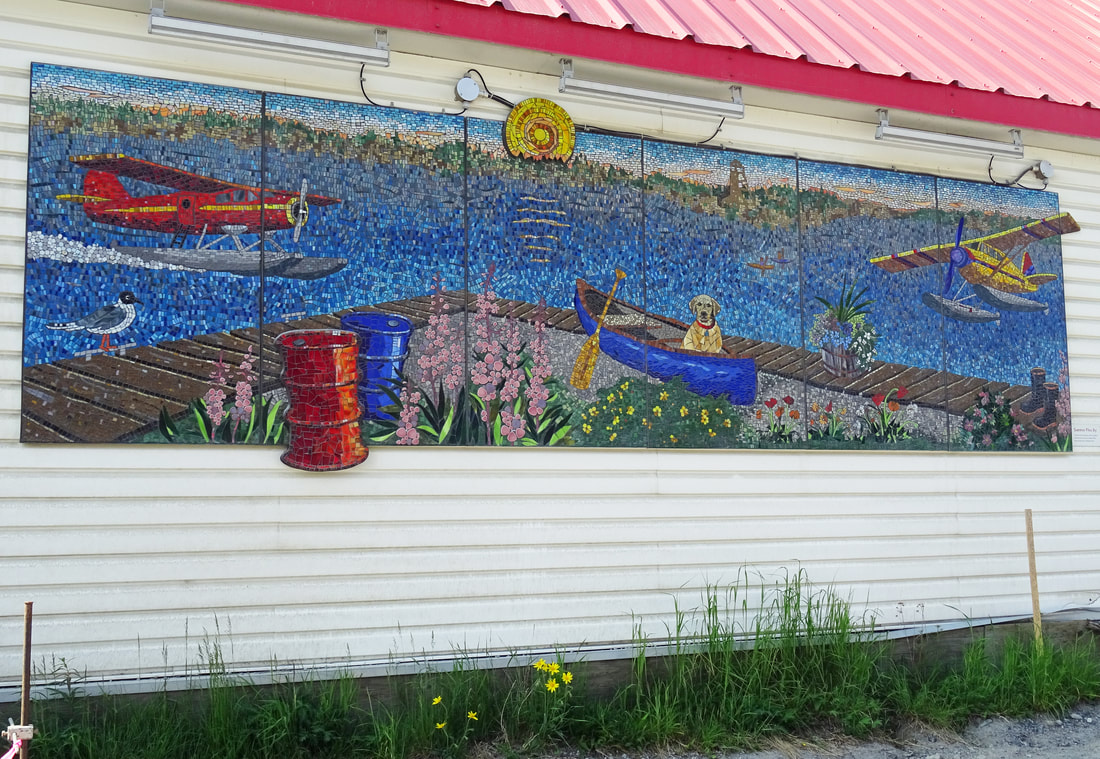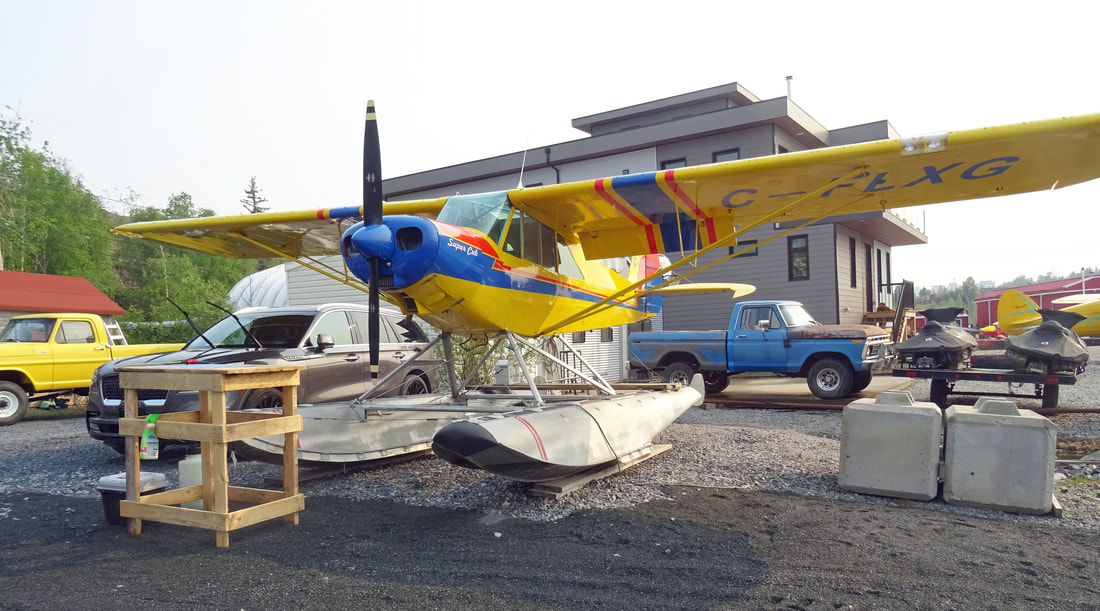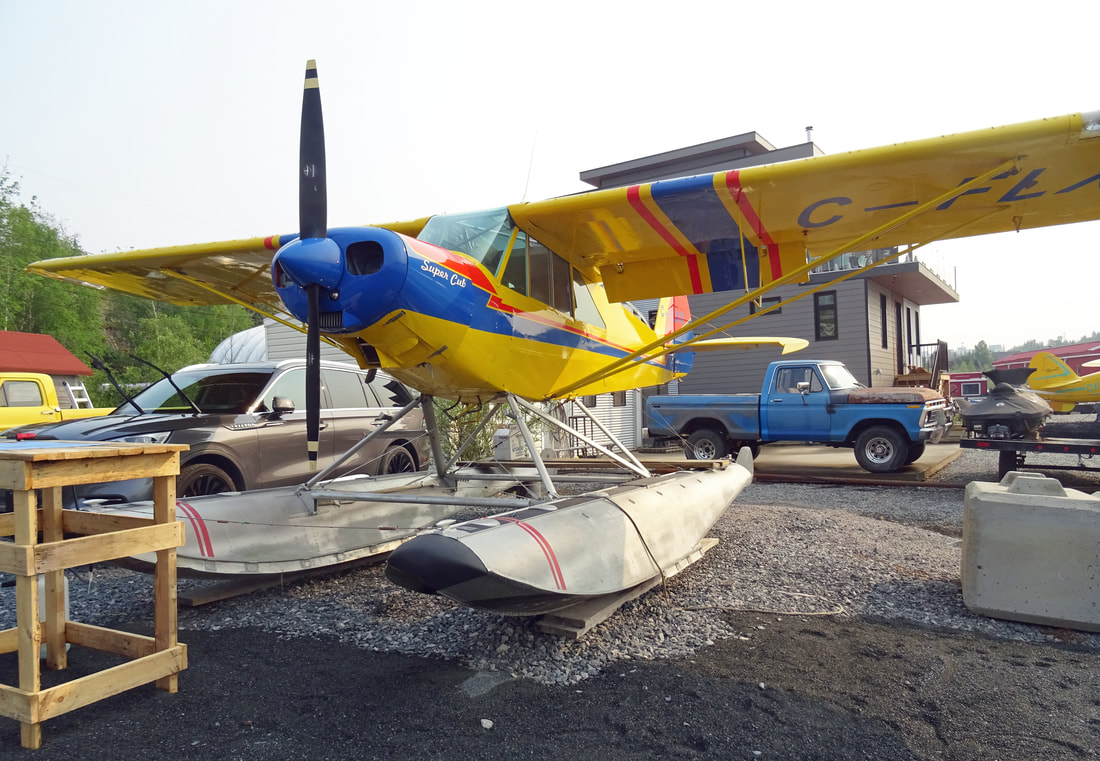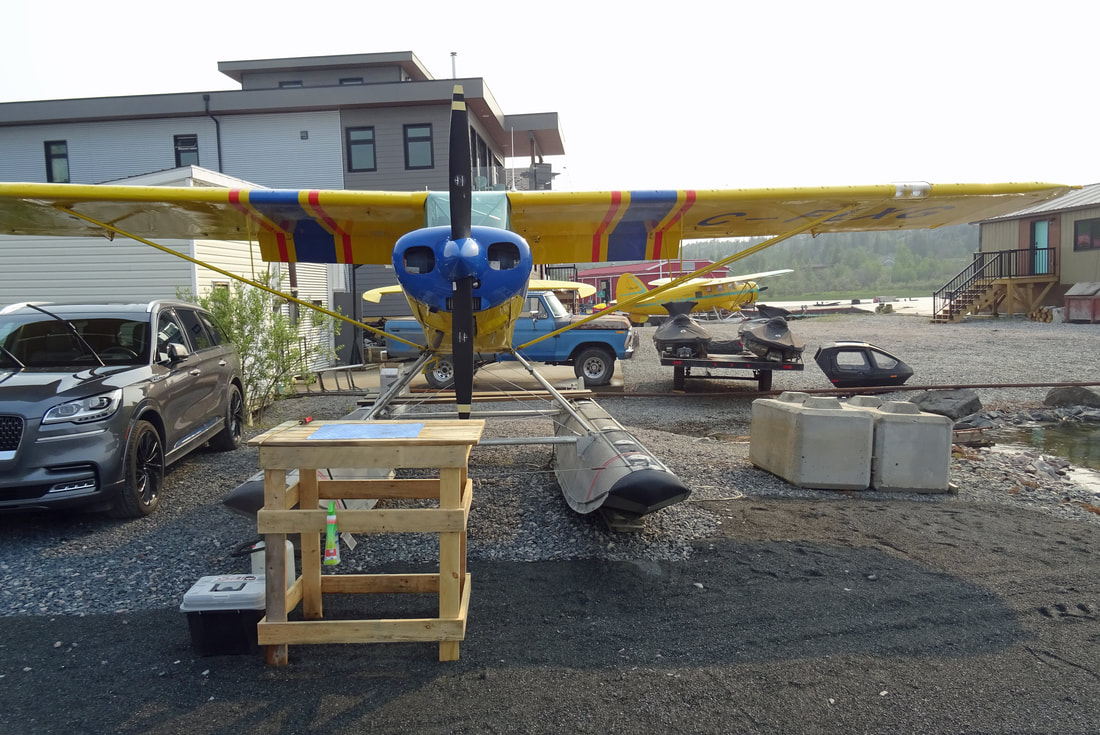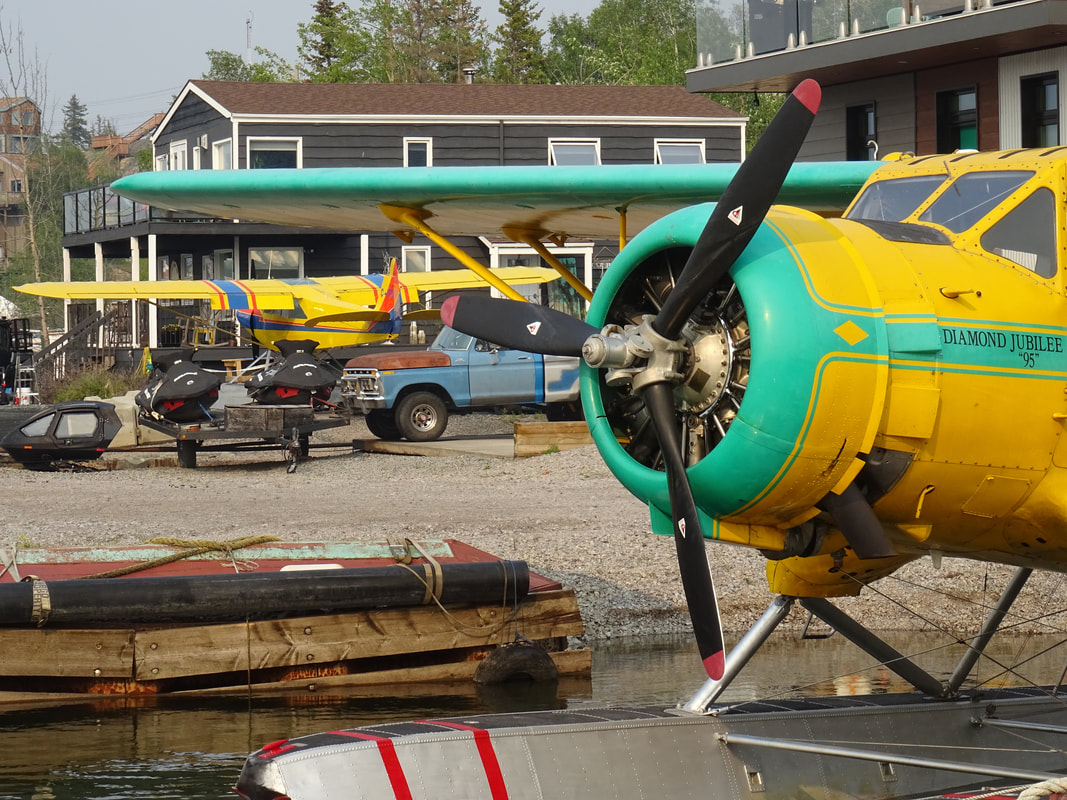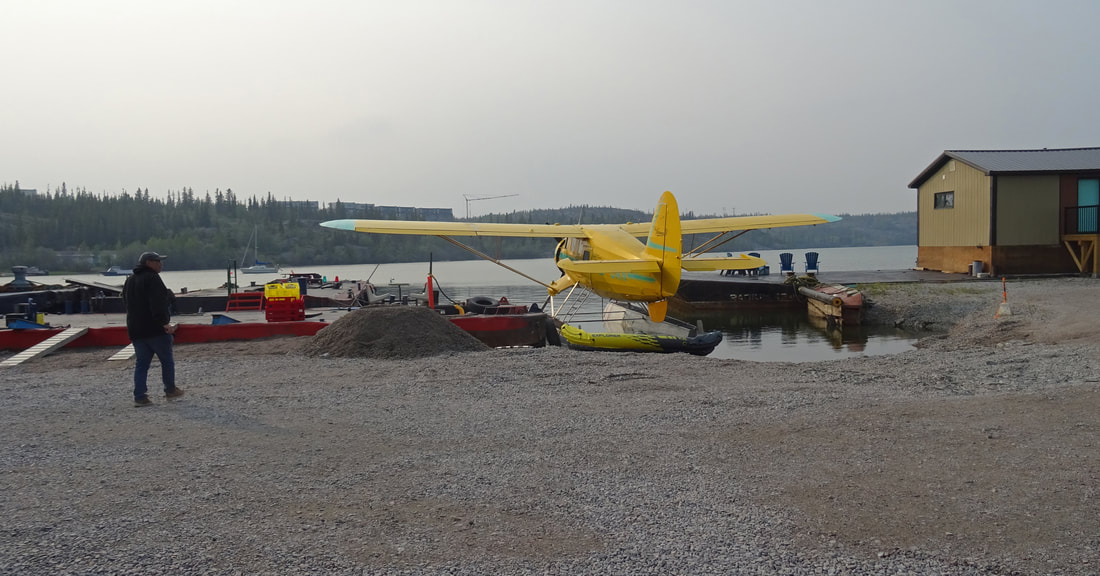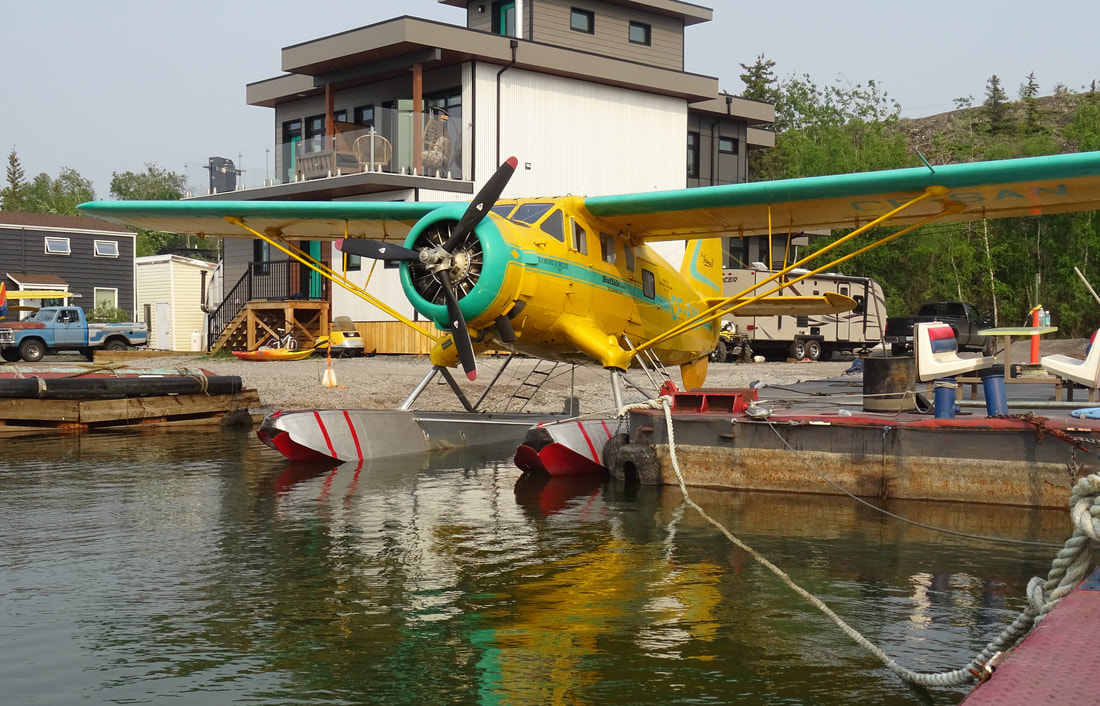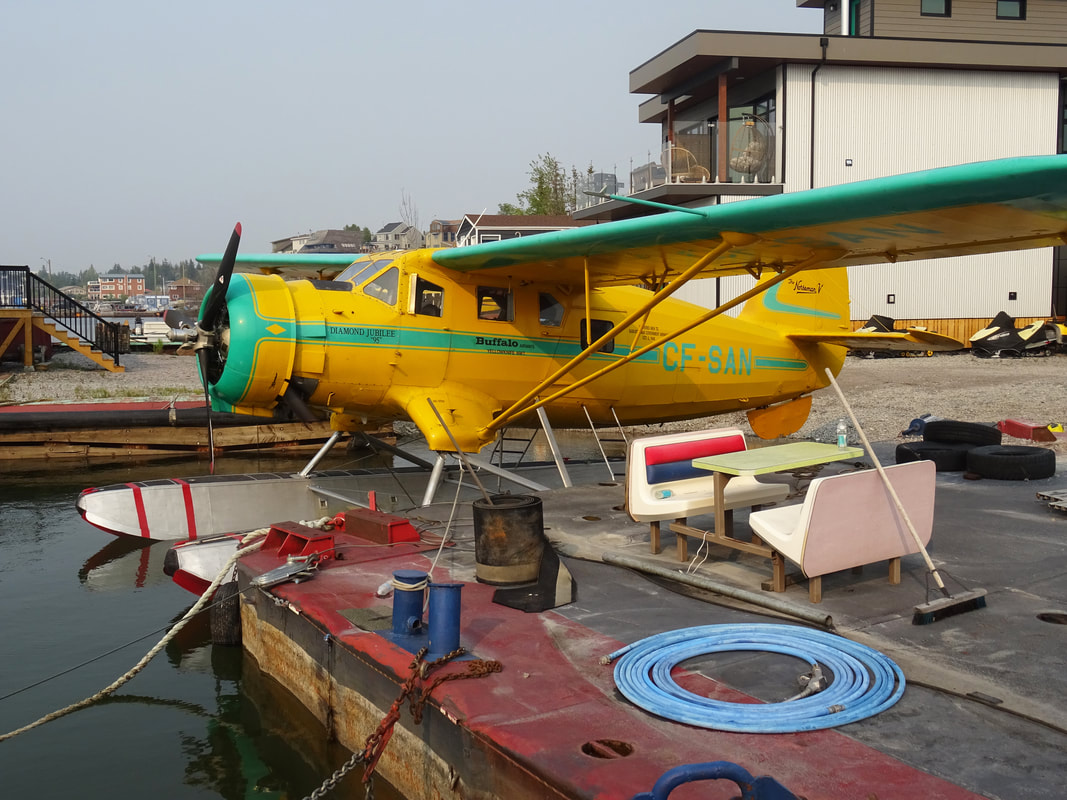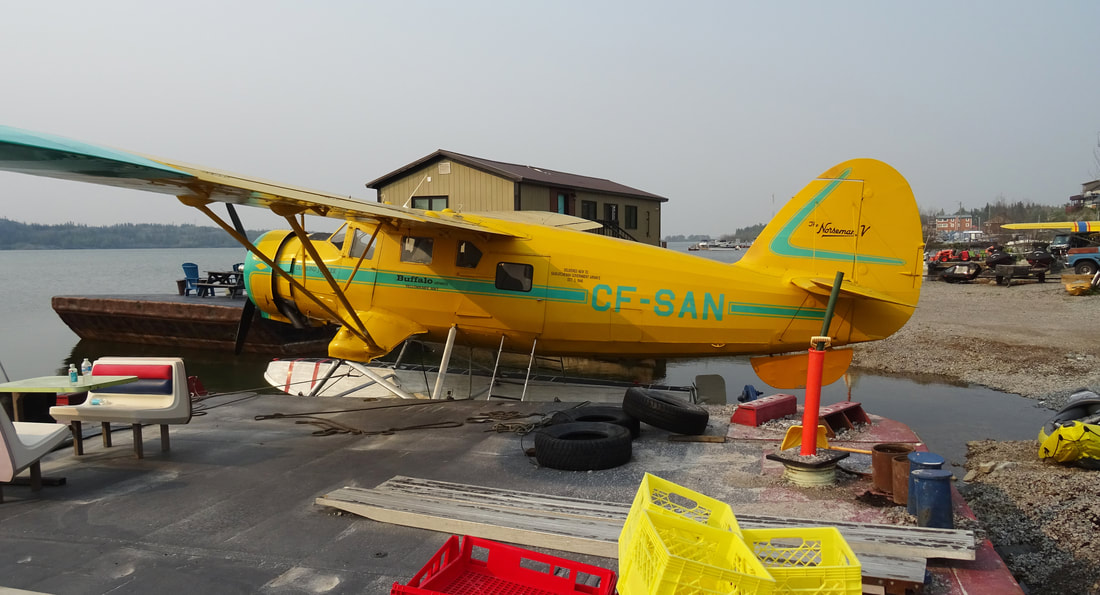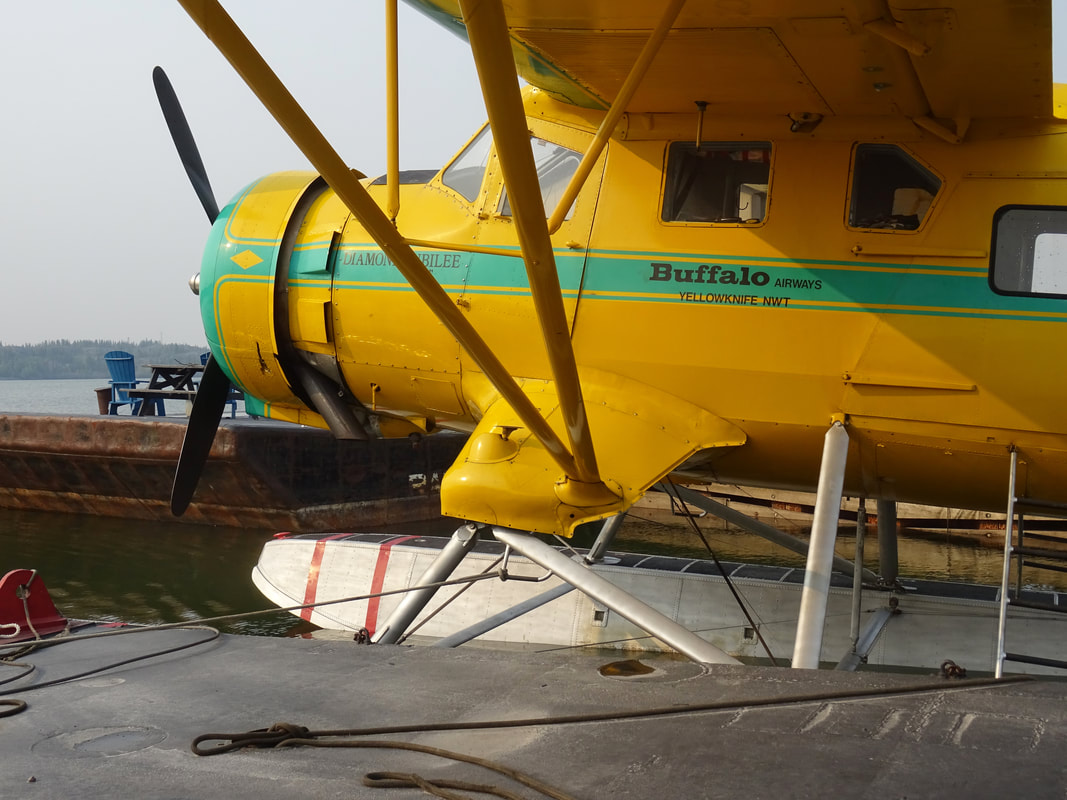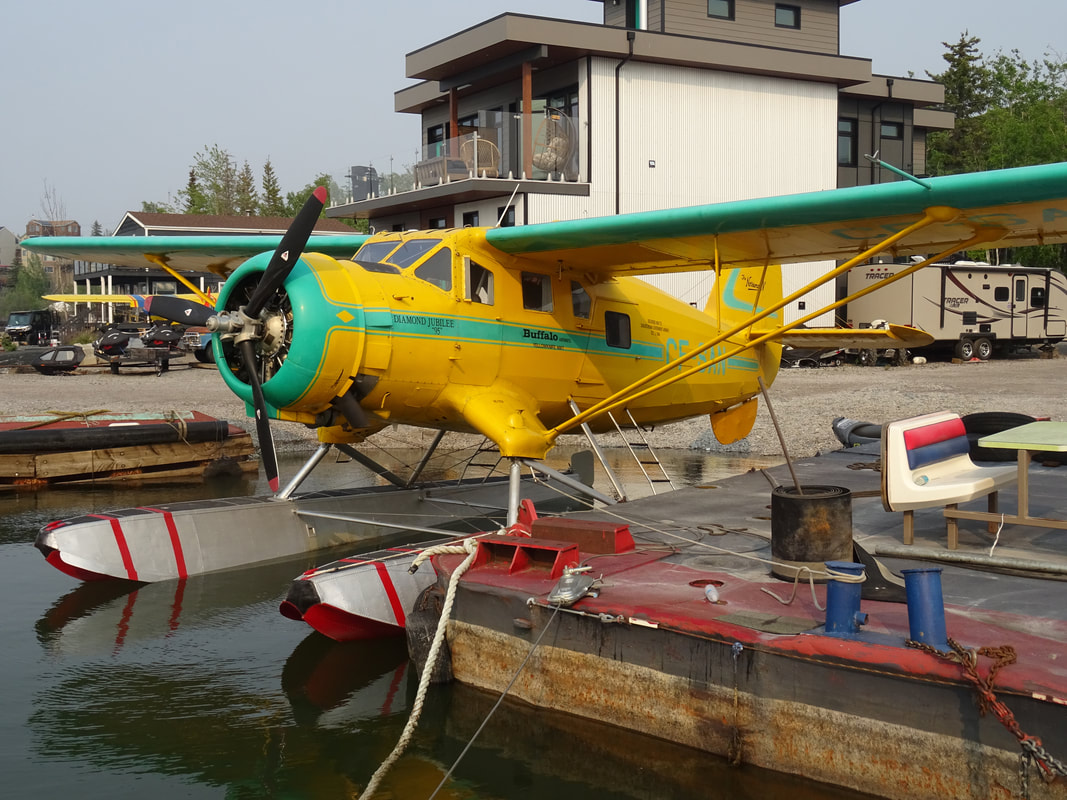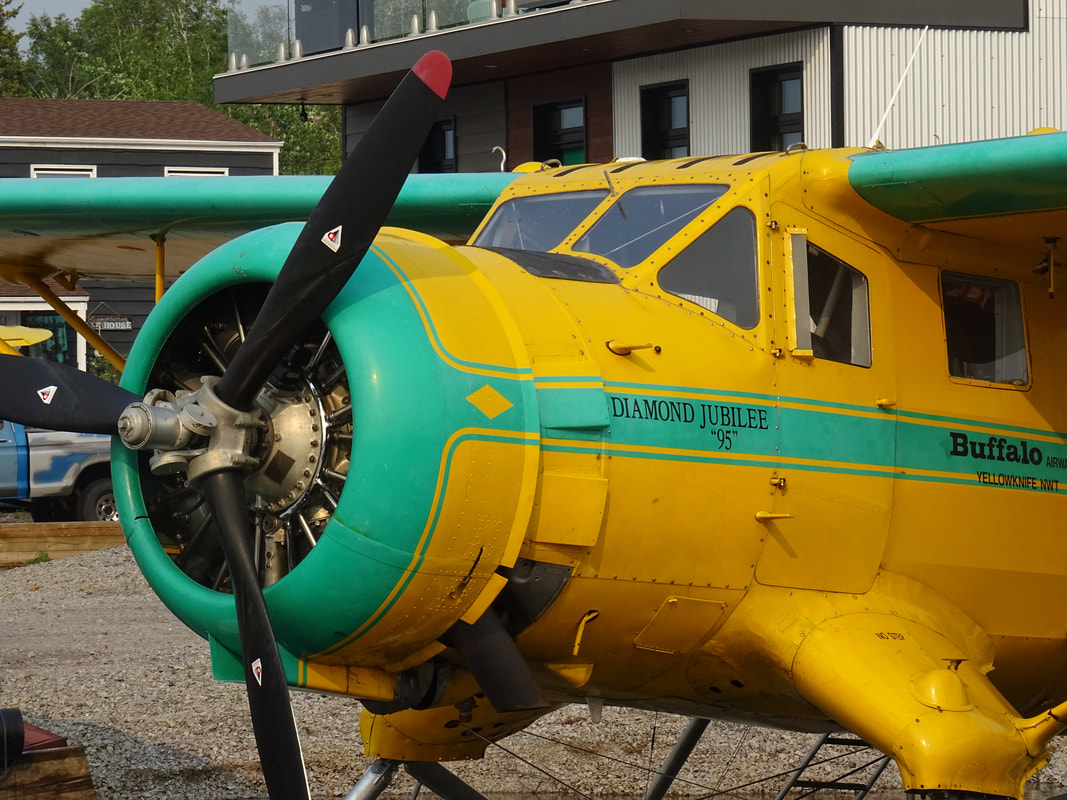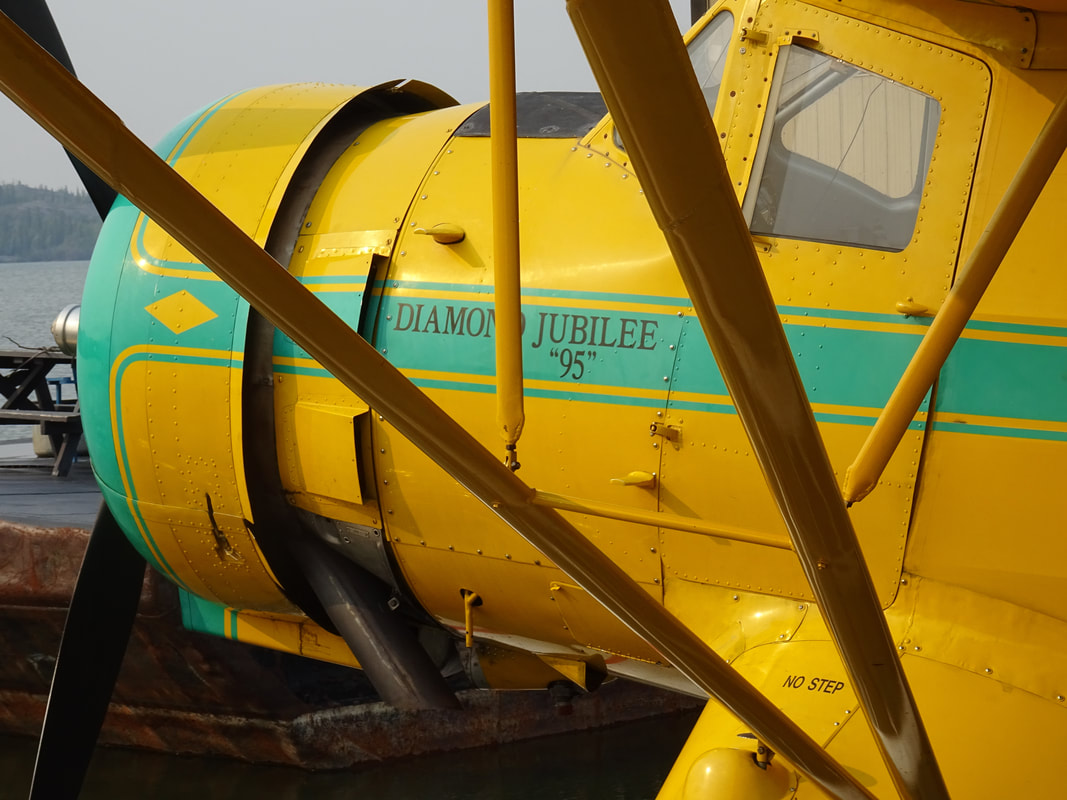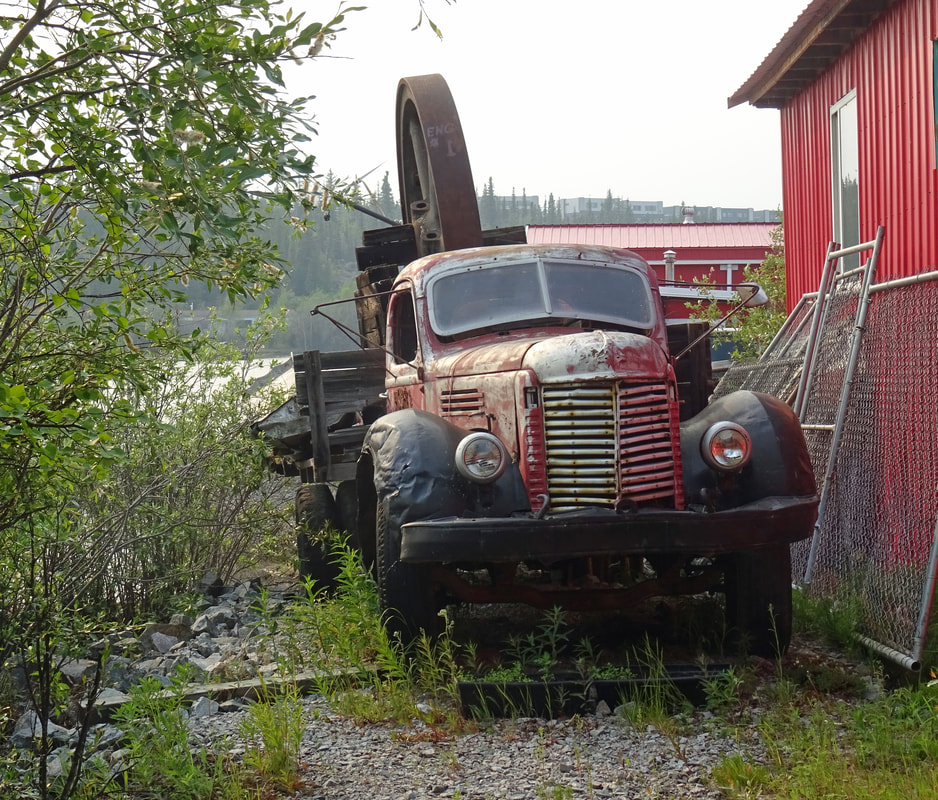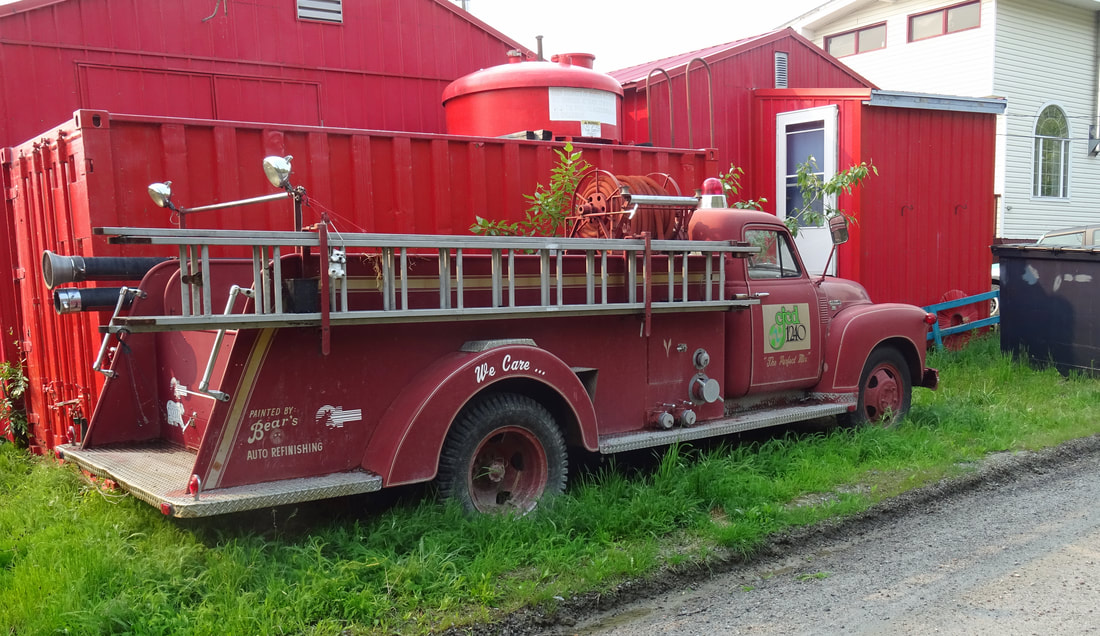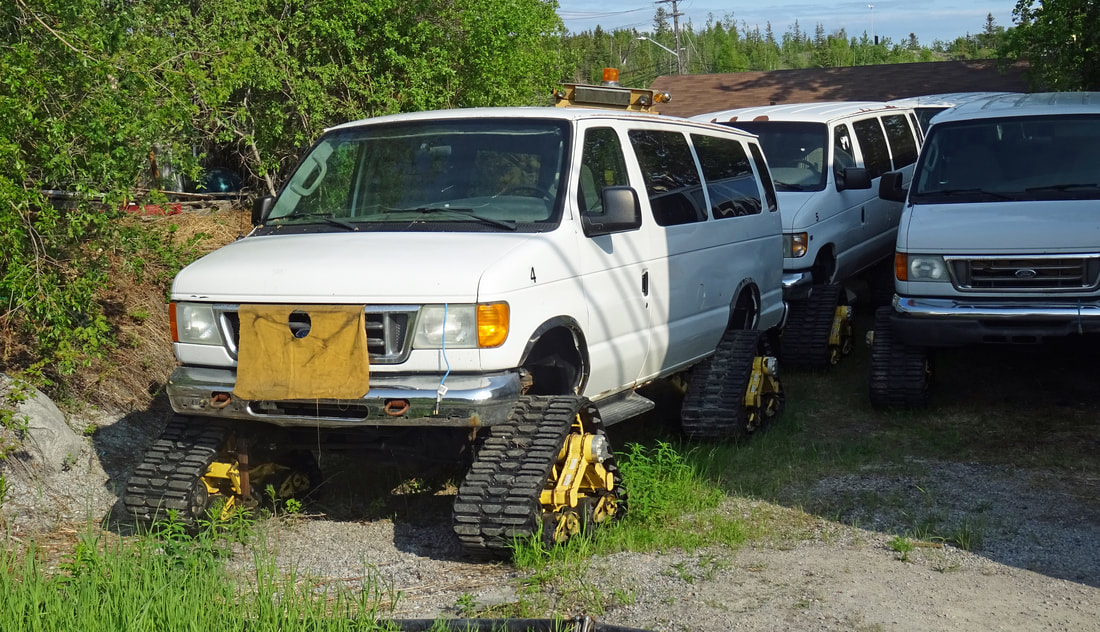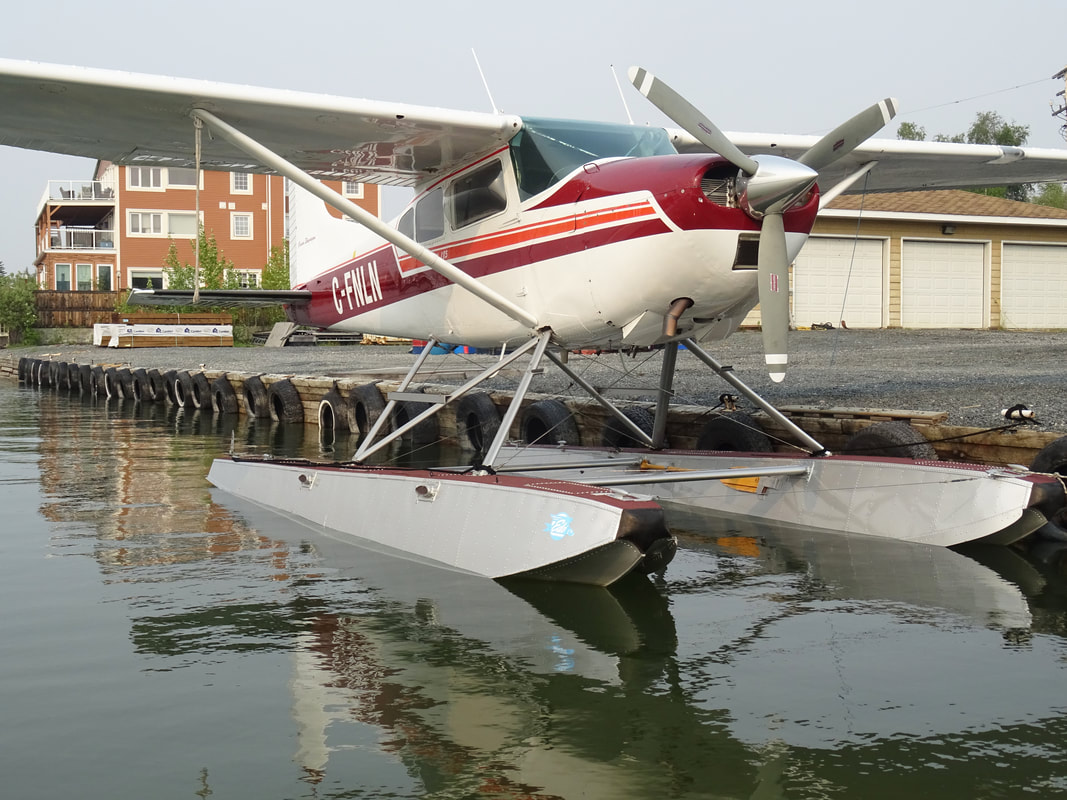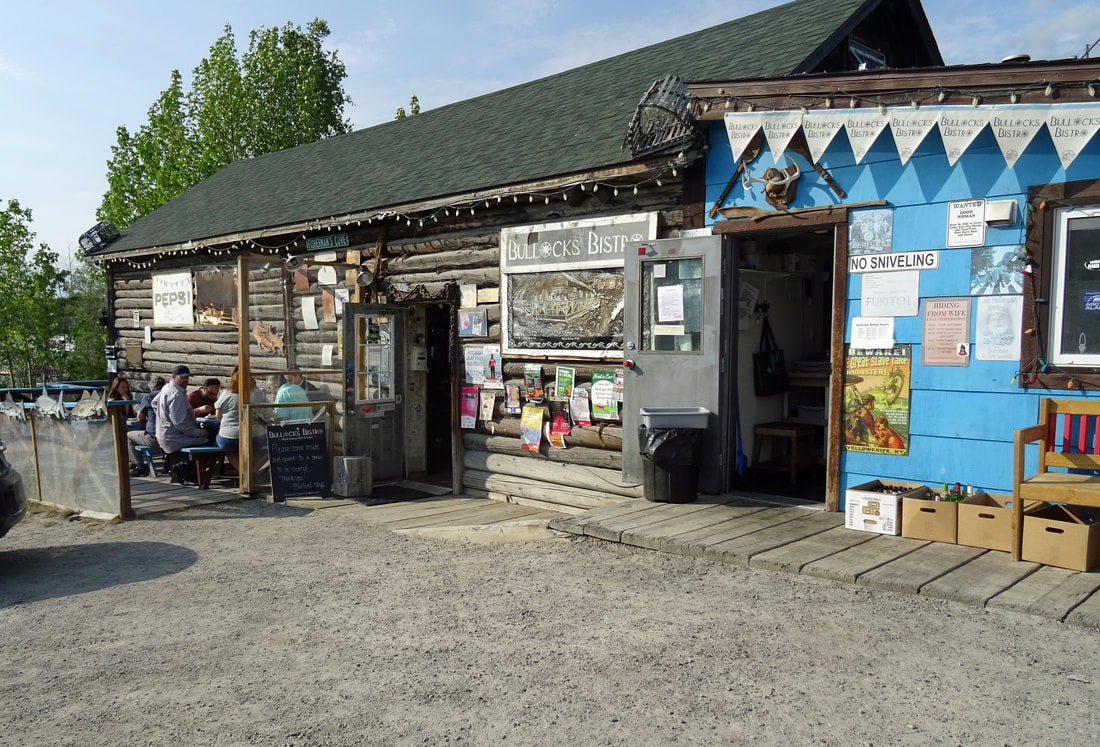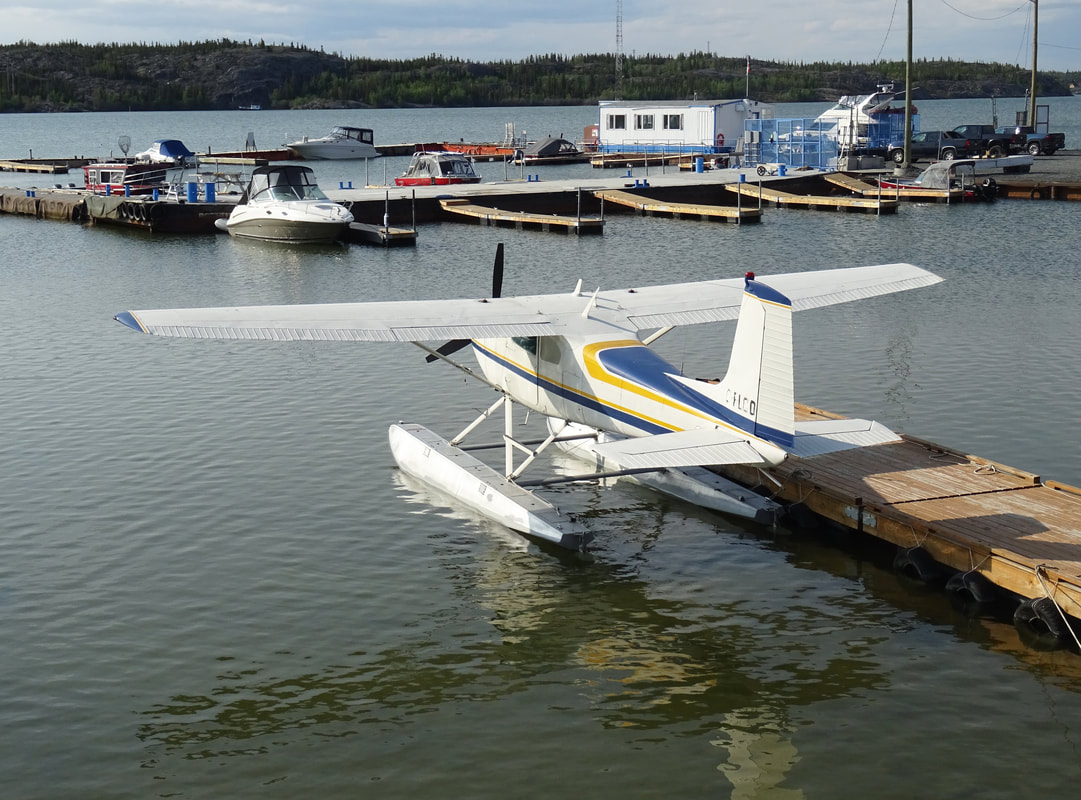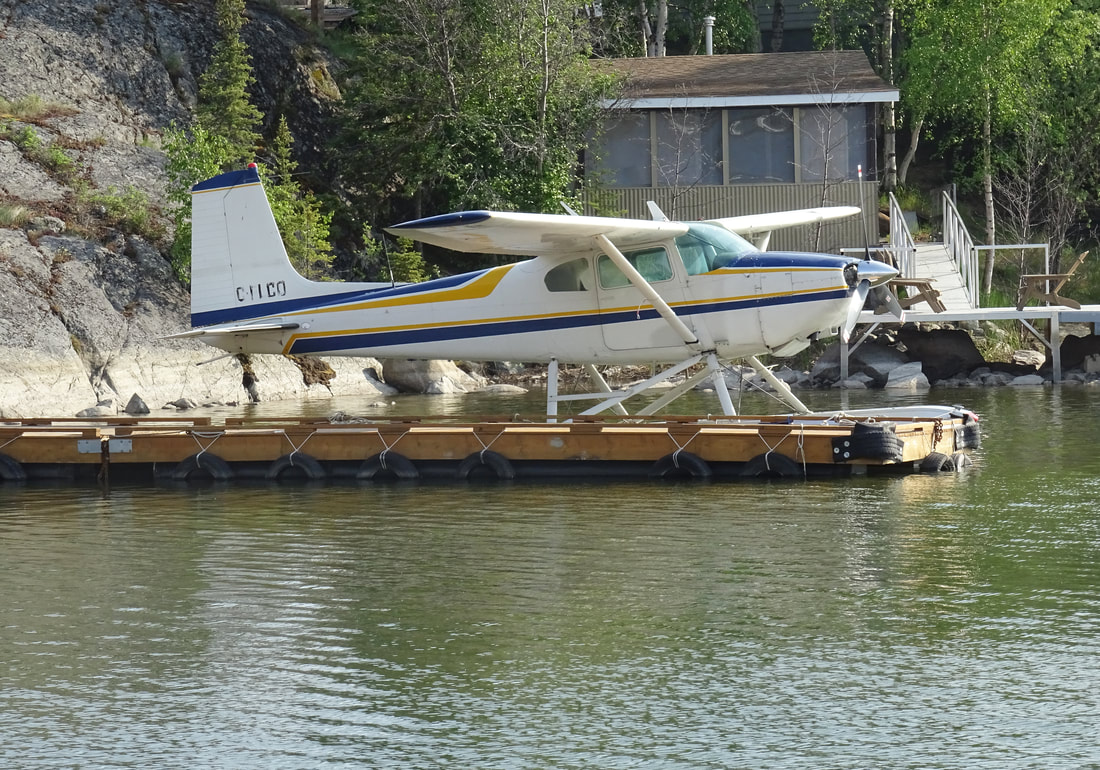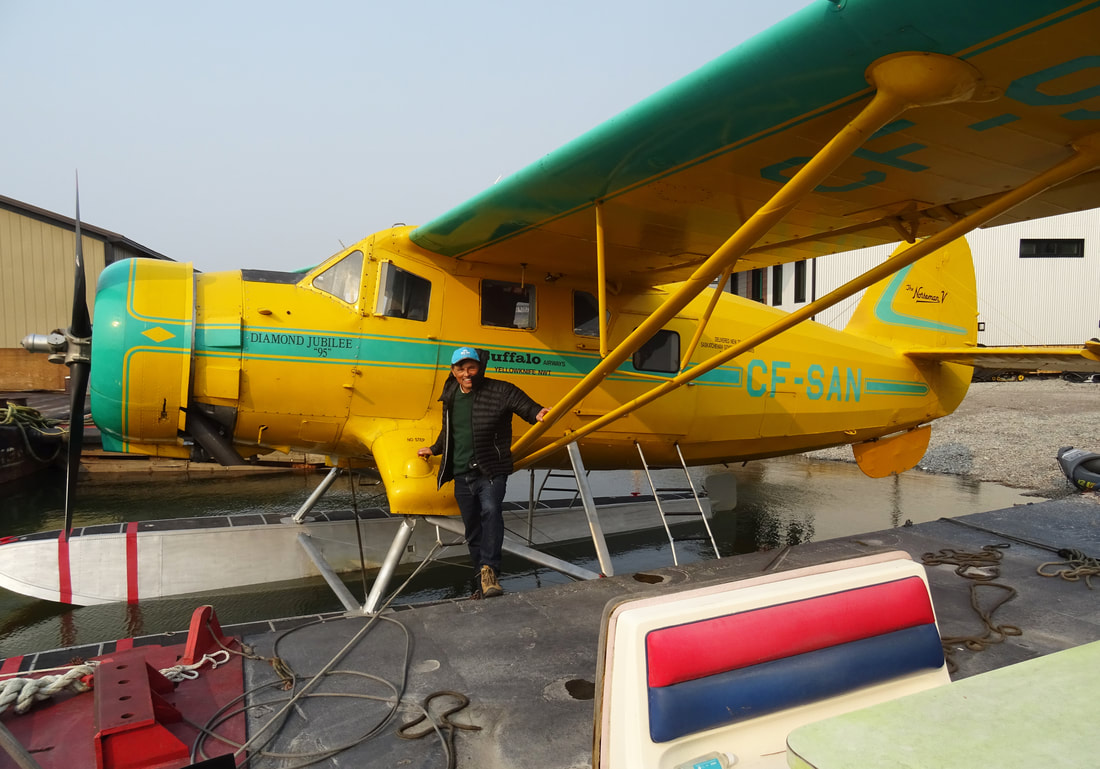Yellowknife floatplane base
June 2023
The Yellowknife settlement is considered to have been founded in 1934, after gold was found in the area.
Air Tindi floatplane base at Rock Island.
Yellowknife is on the Canadian shield, which was scoured down to rock during the last ice age. The surrounding landscape is very rocky and slightly rolling, with many small lakes in addition to the larger Great Slave Lake.
The former Ptarmigan Lake Airways hangar on the shore of Yellowknife Bay.
Air Tindi, 1980 constructed DHC-6 Twin Otter C-FATO, is powered by two Pratt & Whitney Canada PT6A-27's.
European explorers and cartographers over 200 years ago gave the name “Yellowknife” to the nearby river, named in honor of the Indigenous people that the outsiders met in the 1700's. The Europeans coined the term ‘Yellowknife’ for the copper tools the natives carried.
It was a warm and beautiful June afternoon when I took this shot.
An Air Tindi 'Caravan' on floats.
Late afternoon view of Back Lake.
Air Tindi Cessna 208 Caravan C-GATY.
C-GATY is not going far in this configuration!
Our bed & breakfast was right across the Air Tindi float-plane base.
C-GATY was built in 1999.
The Yellowknife Bay comes out in the Great Slave Lake.
It was a lazy spring afternoon.
C-FARW is a 1968 built Cessna 185C.
The Skywagon is not a beautiful airplane, but it certainly has classic looks!
Impressive view of Yellowknife Bay.
View of the Rock from the Pacific Western dock across Wiley Rd. from the Wildcat cafe.
Classic aircraft seen at their home on Back Lake. Back Lake is a small part of Yellowknife Bay.
AHMIC DHC-2 C-GUJI poses for your photographer.
'Un Jeune Indien'.
C-GUJI. Manufactured in 1957, ‘Echo-India’, came off the line as a US Army Beaver. After her military career was over, she was exported back to Canada in 1976 and was registered as C-GUJI to bush-plane operater Air Saguenay. They were operating this Beaver for many years to access their outposts on the lakes and rivers north of their base at Lac Sebastien. Air Saguenay Beaver driver Isabelle Robinson always called this ship; - 'Un Jeune Indien'!
'Un Jeune Indien'; - Two weeks after I visited Air Saguenay in 2016 C-GUJI was sold and ferried to her new owner Ahmic Air of Yellowknife, who is presently operating two DHC-2 Beavers.
Bubble Cabin Door Windows. Sightseeing zooms with installation of bubble-type windows in the cabin doors so passengers can view surface objects normally invisible through flat windows. Bubble windows also provide extra shoulder room when three passengers sit a breast in the center seat.
C-GUJI is still wearing her Air Saguenay unifrom.
C-GCPZ is owned and operated by AHMIC Ltd.
C-GCPZ a Cessna 185E was constructed in 1969.
Nice to see this old lady still in action.
C-GUJI is looking a little weary-worn.
Caribou bundles and supplies at Back Bay, Yellowknife, September 1976.
Mind her anti-glare panel.
C-GUJI propellers are serviced by PropWorks, Canada.
A 'local' is seen leaving the famous Wildcat Cafe.
AHMIC's DHC-2 Beaver C-FMXS looking magnificent in the Yellowknife sun.
Starting the engine:
Propeller area – clear.
Battery master switch – ON
Fuel and oil emergency cut-off lever – OPEN
Fuel selector to the fullest tank.
Mixture lever – AUTO RICH.
Throttle lever – ¼ to ½ inch OPEN.
Build up fuel pressure with wobble pump to maximum 5 psi.
Prime 4 strokes.
Both ignition switches to ON position.
Hold starter switch to STARTER position until starter whine ceases ot rise in pitch.
Release starter switch and simultaneously: Hold clutch engagement switch to STARTER CLUTCH position.
Hold Booster Coil switch to BOOSTER COIL position.
As soon as engine fires:
Release Starter and Starter Clutch switches to OFF position.
Release Boost coil switch.
Priming Pump – locked OFF.
As soon as engine fires, throttle back to about 500 to 800 rpm. Do not pump throttle to catch a ‘dying’ engine.
If oil pressure does not register on gauge within 30 seconds, stop engine and investigate.
As soon as oil pressure reaches 50 psi. steady indication select propeller lever to full INCREASE RPM position.
Propeller area – clear.
Battery master switch – ON
Fuel and oil emergency cut-off lever – OPEN
Fuel selector to the fullest tank.
Mixture lever – AUTO RICH.
Throttle lever – ¼ to ½ inch OPEN.
Build up fuel pressure with wobble pump to maximum 5 psi.
Prime 4 strokes.
Both ignition switches to ON position.
Hold starter switch to STARTER position until starter whine ceases ot rise in pitch.
Release starter switch and simultaneously: Hold clutch engagement switch to STARTER CLUTCH position.
Hold Booster Coil switch to BOOSTER COIL position.
As soon as engine fires:
Release Starter and Starter Clutch switches to OFF position.
Release Boost coil switch.
Priming Pump – locked OFF.
As soon as engine fires, throttle back to about 500 to 800 rpm. Do not pump throttle to catch a ‘dying’ engine.
If oil pressure does not register on gauge within 30 seconds, stop engine and investigate.
As soon as oil pressure reaches 50 psi. steady indication select propeller lever to full INCREASE RPM position.
C-FJAC. This Beaver left the Downsview factory in 1956 for delivery to US Army where she logged thousands of hours. During her long career this veteran workhorse served several bush plane outfits and in 2013 she finally ended up with Ahmic Ltd.
Engine warm-up:
Throttle to give 1000 rpm.
Move propeller lever fully forward to INCREASE RPM, as soon as oil pressure reaches 50 psi.
After oil temperature has reached 40 degrees Celsius (100 dgr. F), adjust to smoothest engine speed between 1000 to 1400 rpm. Mixture lever FULL RICH.
Select propeller lever to coarser pitch at 1000 rpm, to circulate the oil in the constant speed unit and propeller cylinder, then return to INCREASE RPM.
Never rush engine warm-up.
Check oil pressure, fuel pressure and temperature.
Tank feeds – check by rotating fuel selector to each tank.
Throttle to give 1000 rpm.
Move propeller lever fully forward to INCREASE RPM, as soon as oil pressure reaches 50 psi.
After oil temperature has reached 40 degrees Celsius (100 dgr. F), adjust to smoothest engine speed between 1000 to 1400 rpm. Mixture lever FULL RICH.
Select propeller lever to coarser pitch at 1000 rpm, to circulate the oil in the constant speed unit and propeller cylinder, then return to INCREASE RPM.
Never rush engine warm-up.
Check oil pressure, fuel pressure and temperature.
Tank feeds – check by rotating fuel selector to each tank.
The cockpit of C-FMXS looks to be in superb condition.
The “De Havilland Aircraft of Canada Limited” logo, showing a top view of the Beaver.
The name Ahmic means submerging Beaver.
AHMIC Beaver C-FMXS was operating out of Yellowknife floatplane base during the summer of 2023.
Bubble Cabin Door Windows. Sightseeing zooms with installation of bubble-type windows in the cabin doors so passengers can view surface objects normally invisible through flat windows. Bubble windows also provide extra shoulder room when three passengers sit a breast in the center seat.
C-FMXS sits on top of EDO 4580 floats and has been updated with the Kenmore seaplane fins in place of the ventral fin.
C-FMXS cowling is looking rater shabby.
C-FMXS with a superb close-up study of the wonderful Pratt & Whitney.
OK .... the last pic of this beautiful Beaver.
The floatplane base is situated at the old town of Yellowknife.
Aerial view of the Old Town.
Beautiful C-FXYY is 1976 built Cessna 185F is operated by Shawn Maley and parked at Plummers.
C-FOED is a De Havilland DHC-2T.
C-FOED Turbo Beaver is owned by Polar Developments Ltd.
C-FOED enjoying the evening bliss.
View from the rock on Yelllowknife City Center.
Group of fishermen displaying catch at associated airlines dock in Old Town 1950.
C-GMXS is a Beaver owned by Plummers Lodge.
This Beaver left the factory in Downsview in 1951 on delivery to the US Army. After her military career she was sold to civilians in the US but it became C-GMXS when imported to Canada during 1980. After having been operated by many Canadian outfits, fate hit a blow on September 25, 2001, when it crashed near Big Stone River, Manitoba. Fortunately it was not fatal and 'Xray-Sierra’ was repaired. Plummer's Lodges bought her and owner Warren Plummer is using her to service his sports fishing lodges.
The mighty P&W 985 is burning 22 Imp gallons per hour.
Note the exhaust tailpipe extension, with heat exchanger, which provides cabin heat for cold-weather flying. Hot air for heating the interior of the cabin is supplied by ram air passing through a heat exchanger tube in the engine exhaust system. From a four-way outlet at the center of the cockpit floor, the heated air is ducted to the pilot’s seat and front passengers feet and to two outlet grills in the cabin floor.
Her 2-blade prop can be heard from anywhere in Yellowknife!.
All nine cylinders are visible.
C-GMXS gleaming in the sun today.
C-FLXG, a 1960 Piper PA-18-150 Super Cub.
The bright colors of Super Cub, C-FLXG, caught by camera, on a lovely sunny day at Yellowknife.
This classic Piper, on straight floats, is waiting for a hopeful busy summer season!
Back Lake, in the late afternoon of June 10, 2023.
Built in the late 40's, you gotta love and admire these back country work horses - especially in these settings.
A great looking brute!
CF-SAN, is a 1947 built Noorduyn Norseman V of Buffalo Airways.
Cool to catch this old girl. Aircraft built in 1947.
A typical Canadian seaplane dock, although the Norseman is less typical as time goes on.
These venerable, fabric-covered aircraft, the first of which was manufactured in 1935, are nowadays seldom seen working.
The legendary Noorduyn Norseman.
Vintage paint scheme of Buffalo Airways with Diamond Jubilee '95 titels.
"Sierra Alpha November" is powered by a mighty Pratt & Whitney R-1340 nine cylinder air cooled piston engine.
The Norseman looks good from any angle.
Still looking good as ever!
This Cessna 185 rolled-off the Wichita production line in 1961 and is presently owned and operated by Myles Timothy Wickham Cane.
During our visit she was 62 years old!
Bullocks Bistro in the Old Town.
View on Back Bay.
Skywagon 180B, C-FLCO, is an old workhorse. She came of the Cessna production-line in 1959. That’s 64 years ago. Note; - She has the same livery as C-FXYY.
It was great day here at the Yellowknife's float plane base.
- The End -
